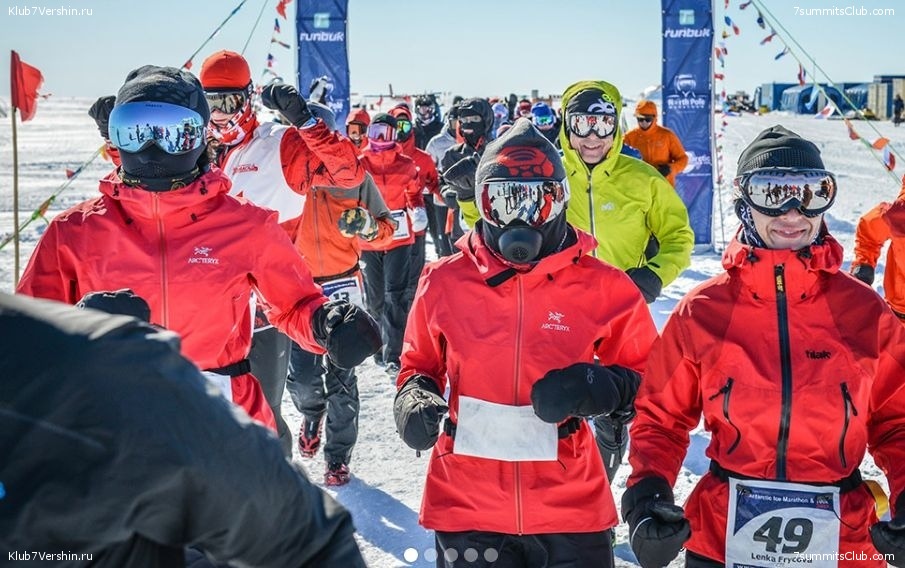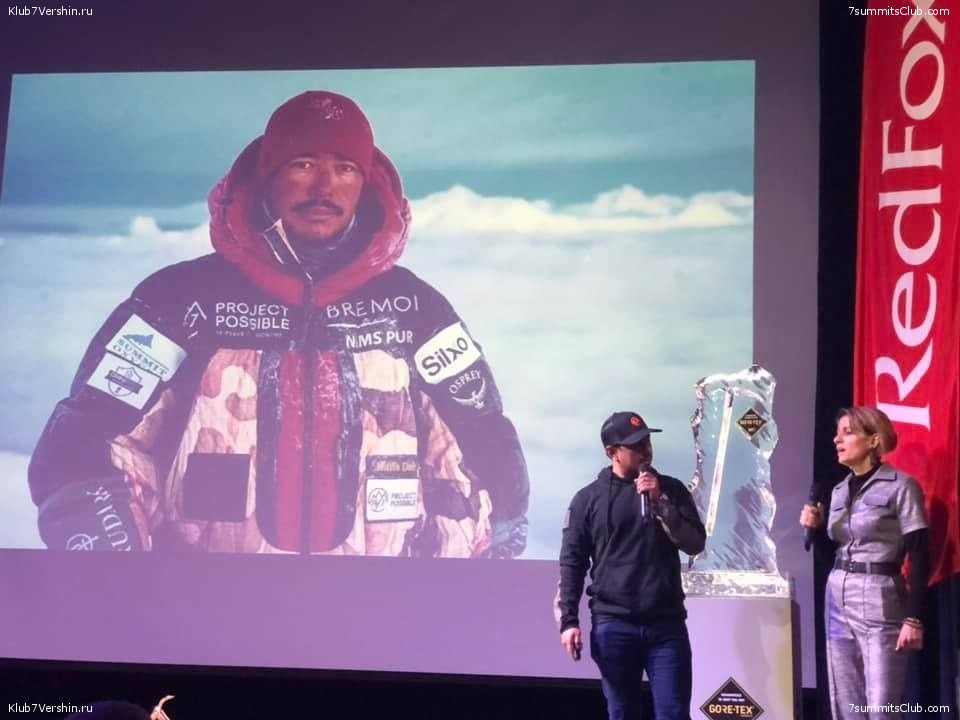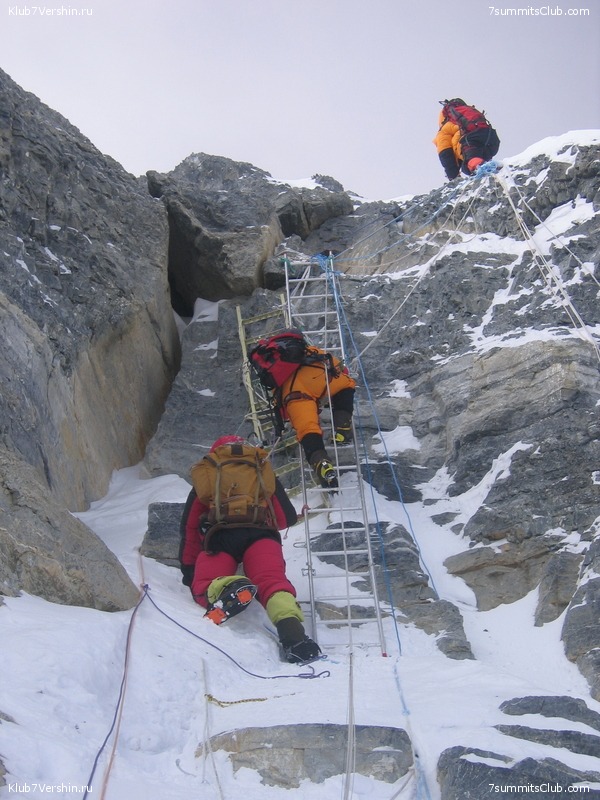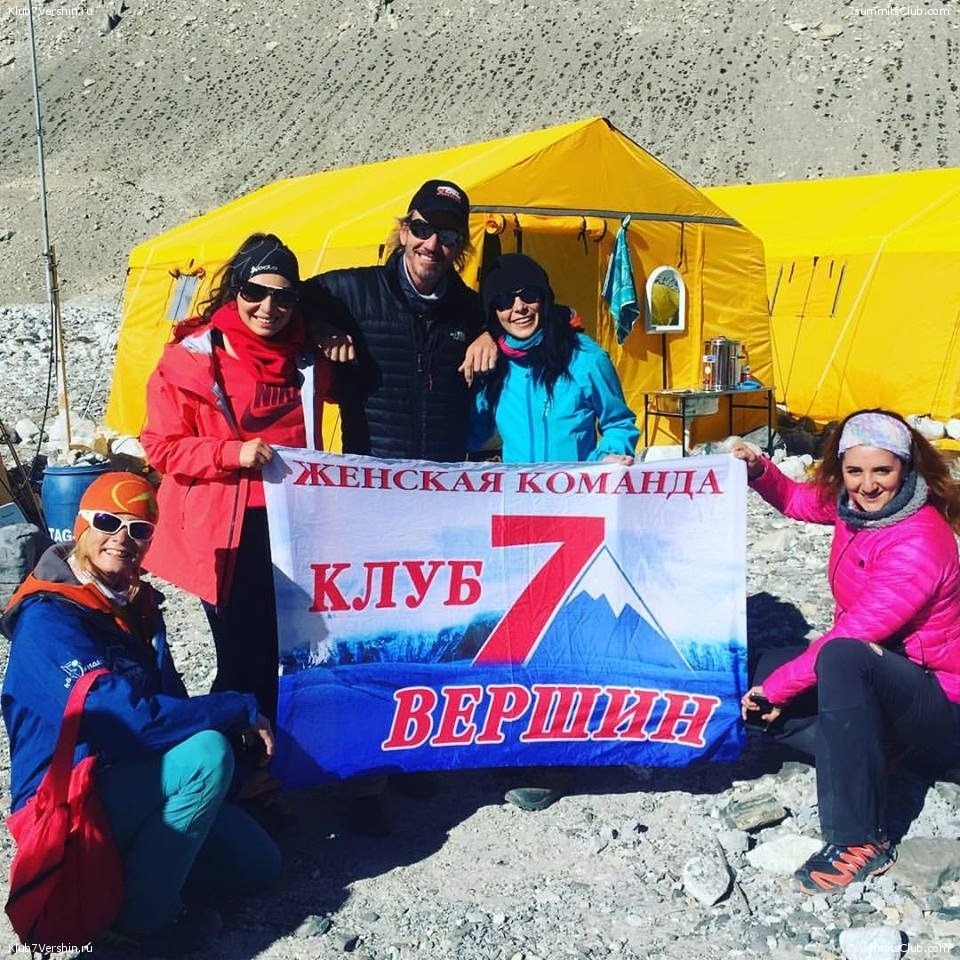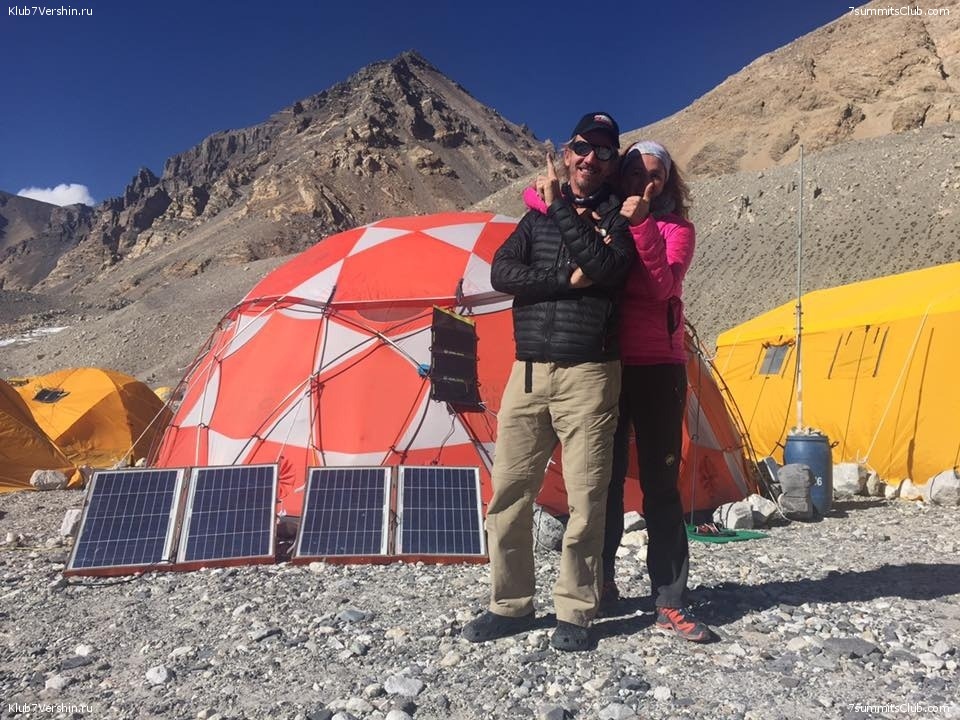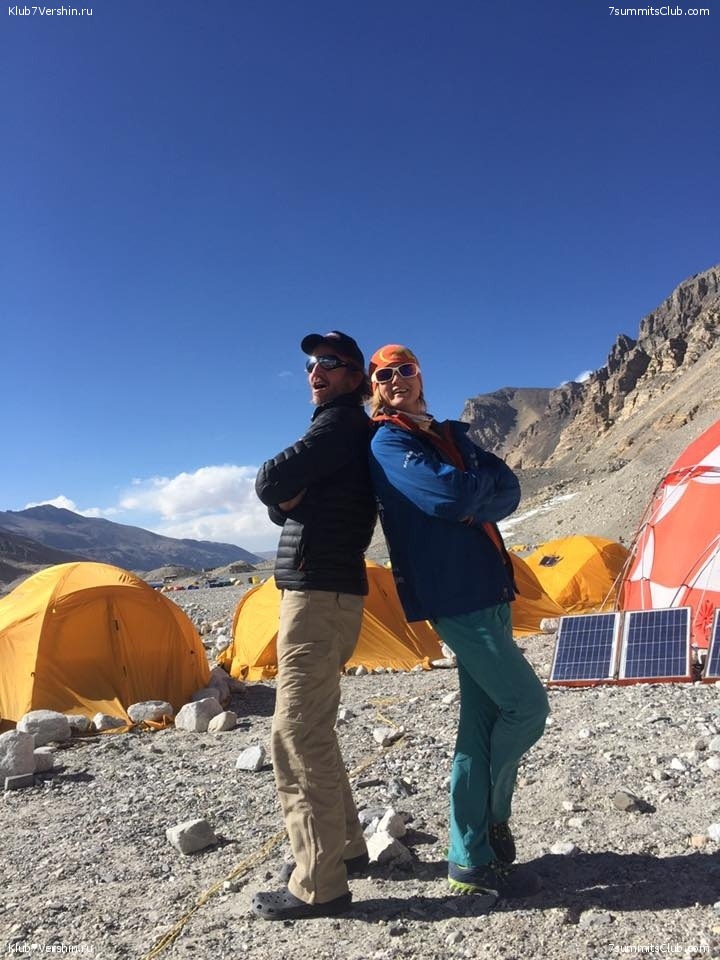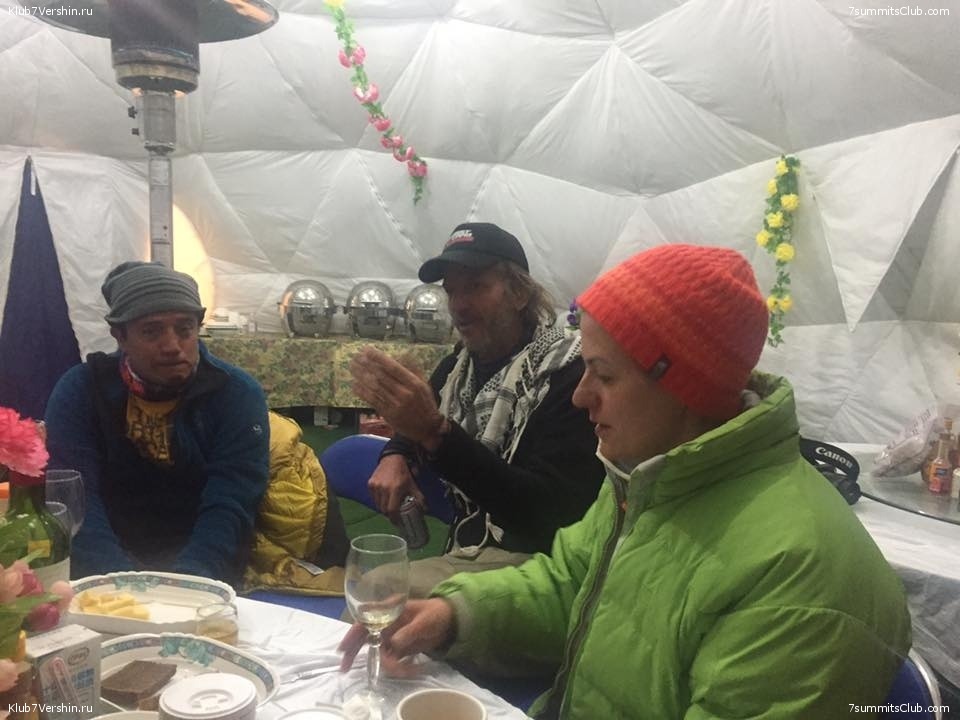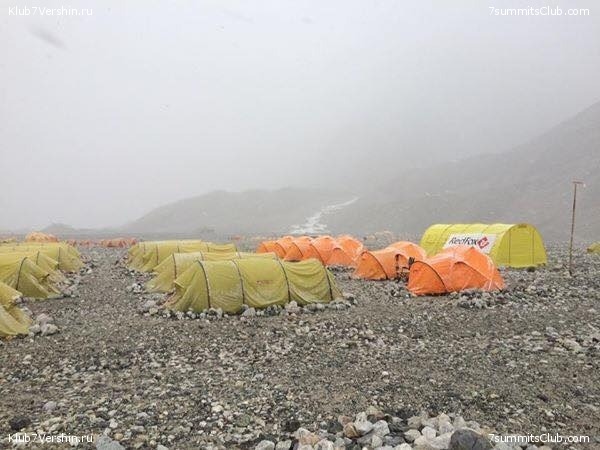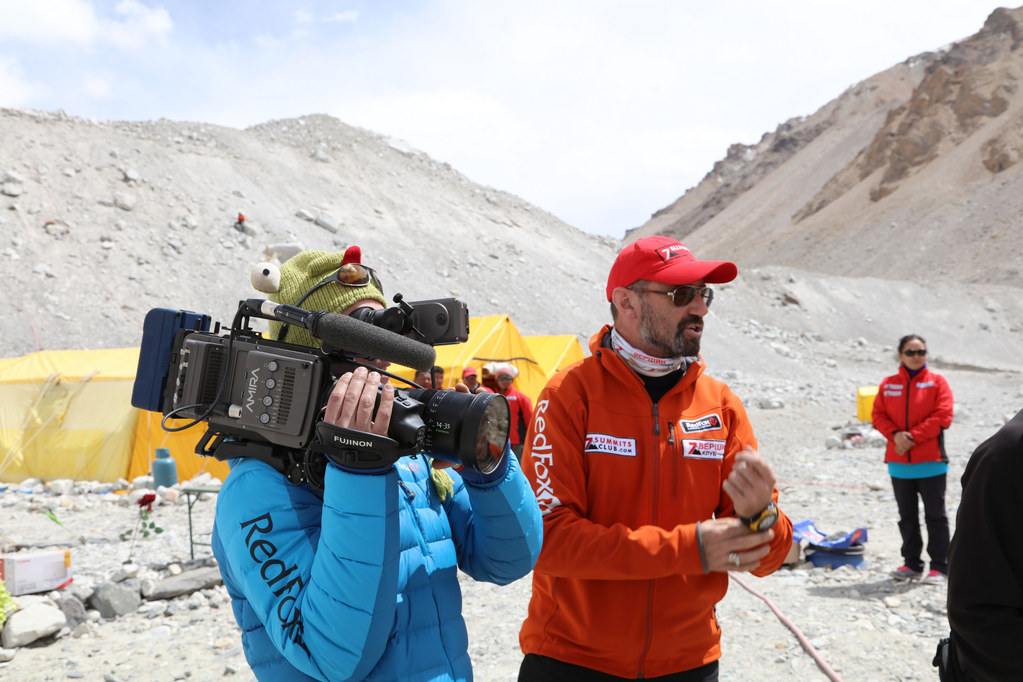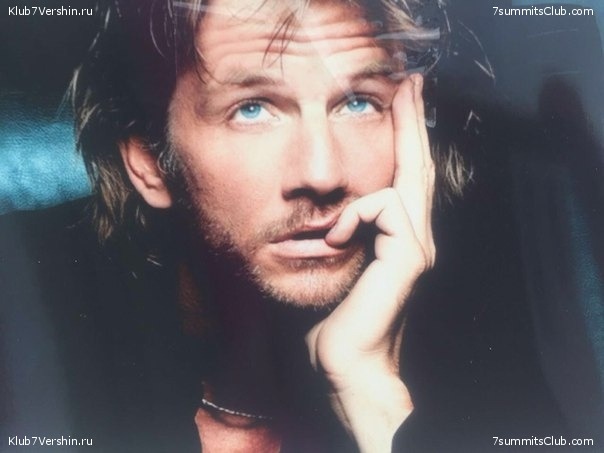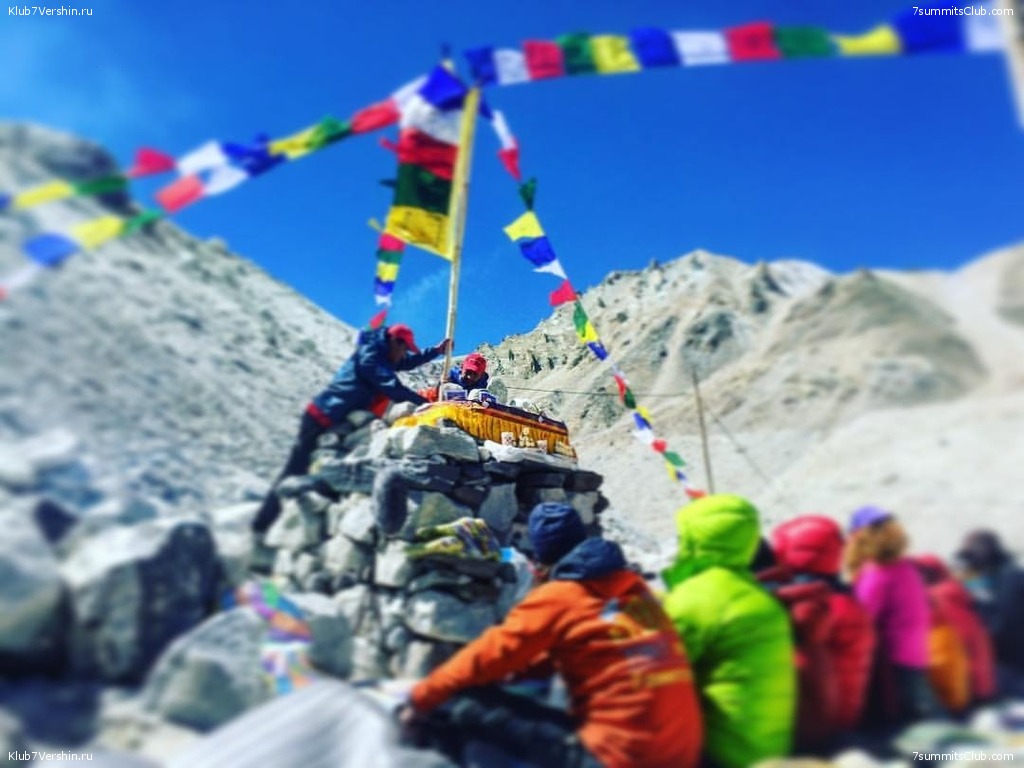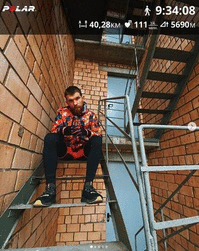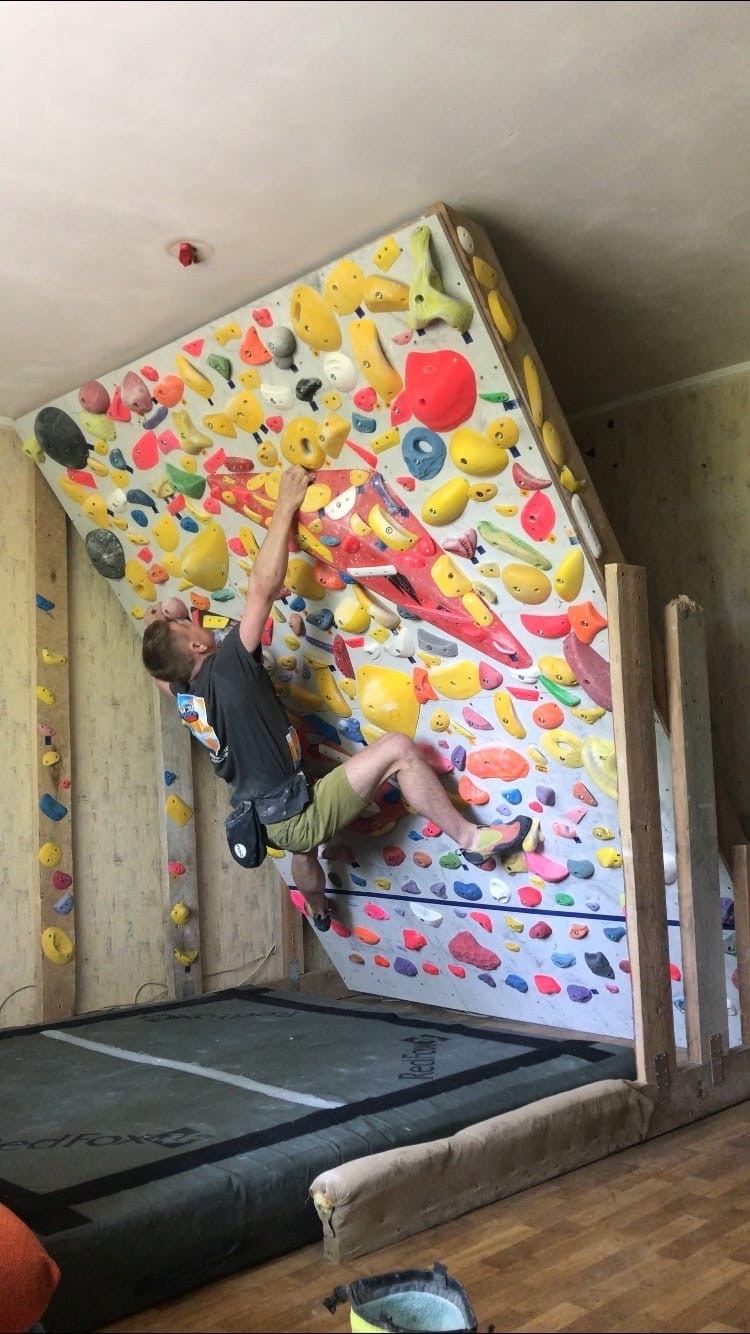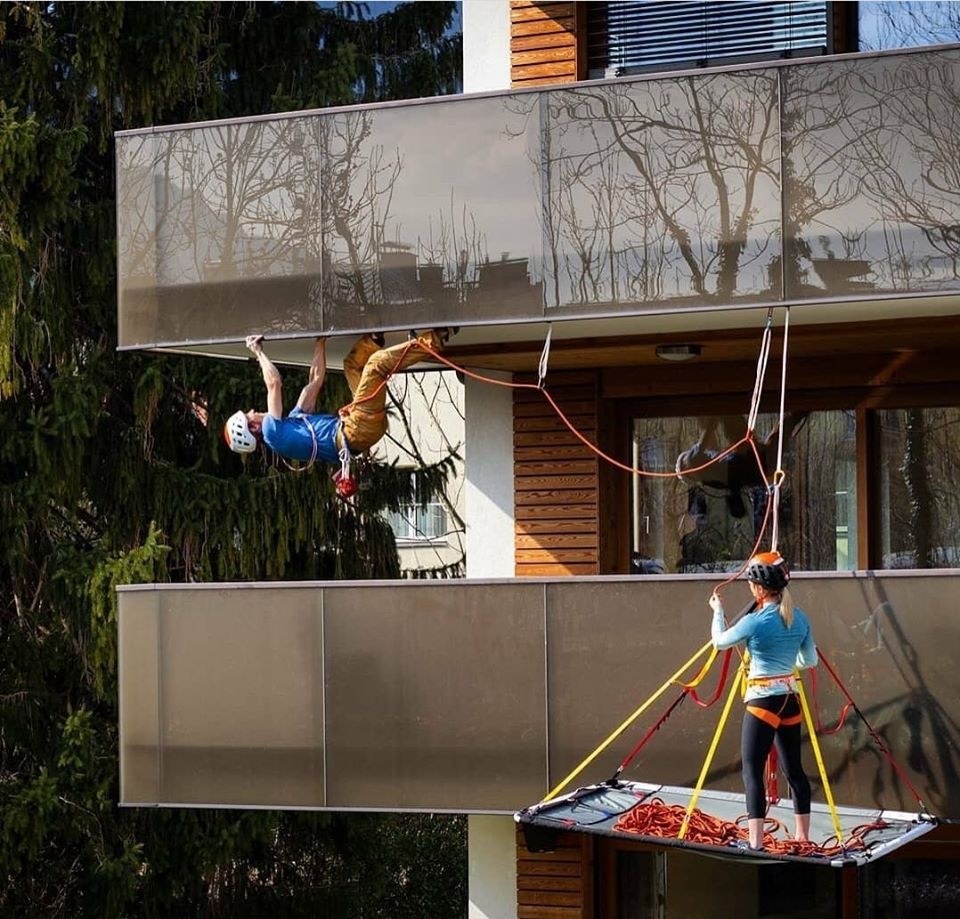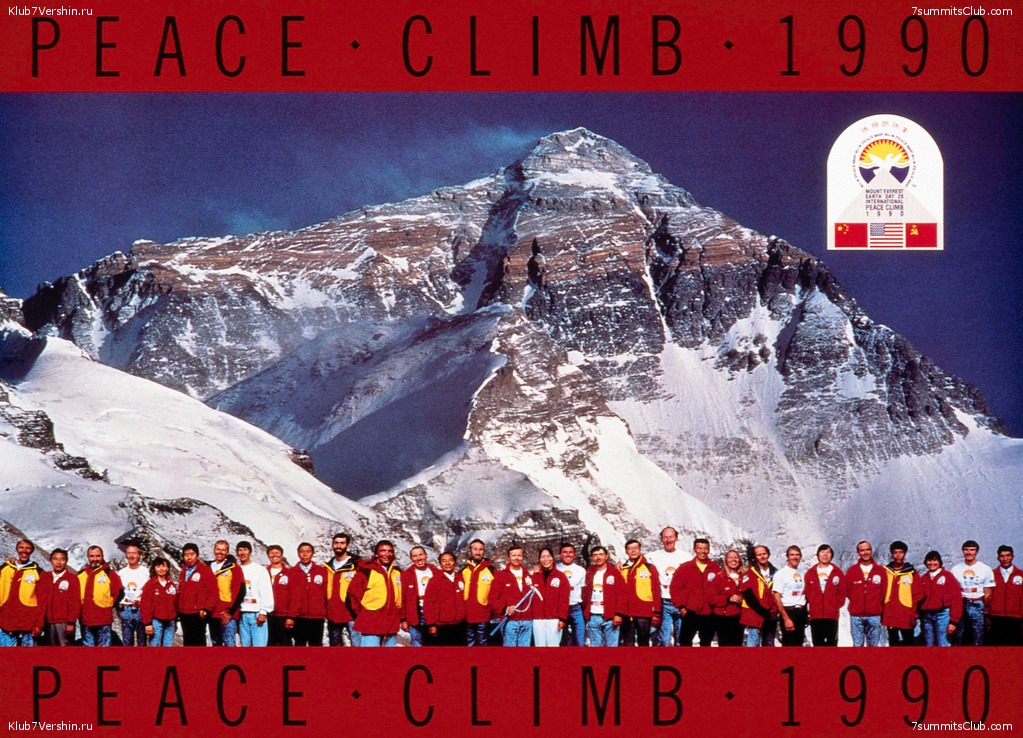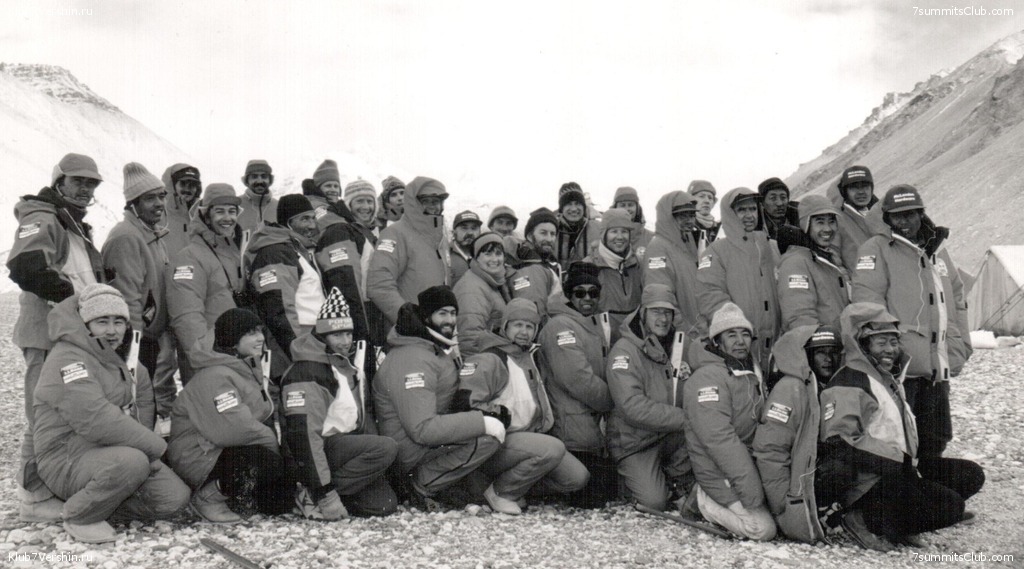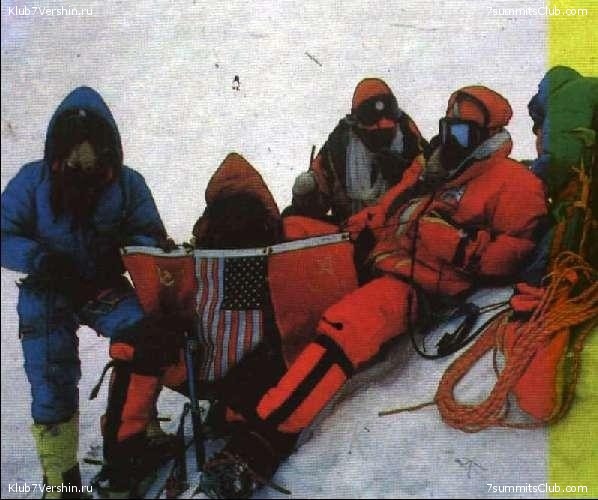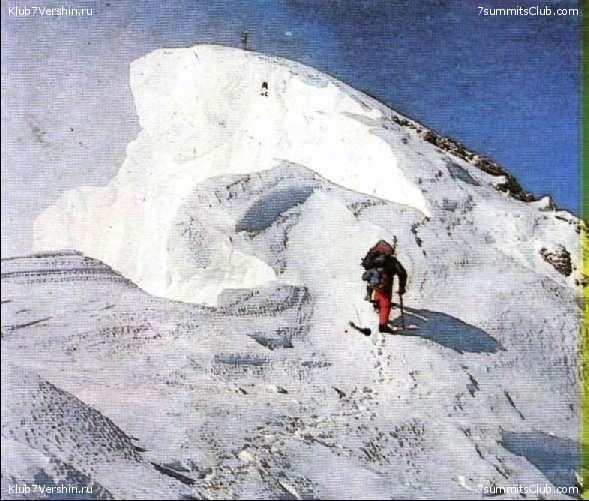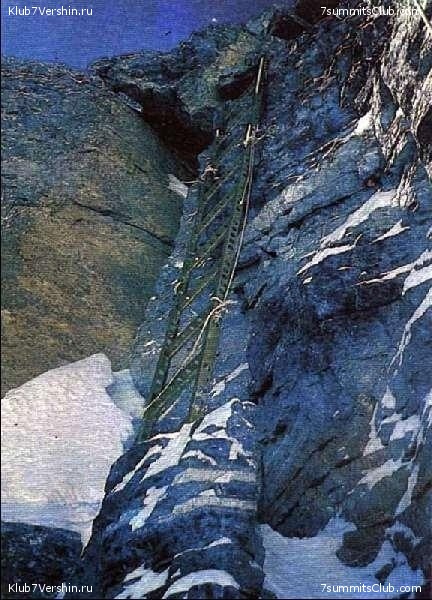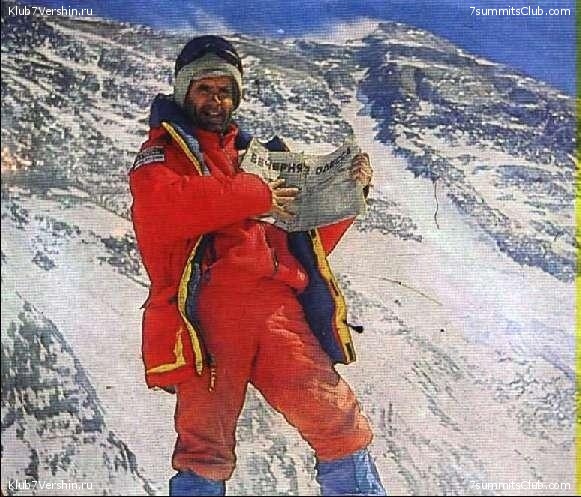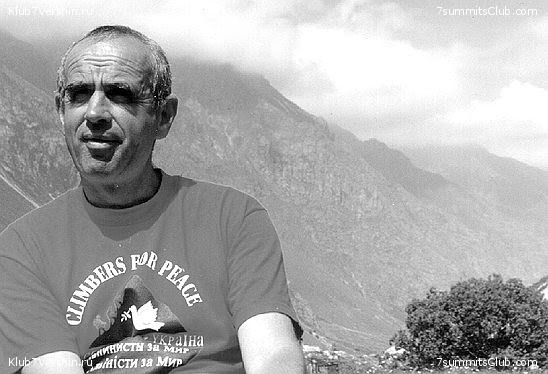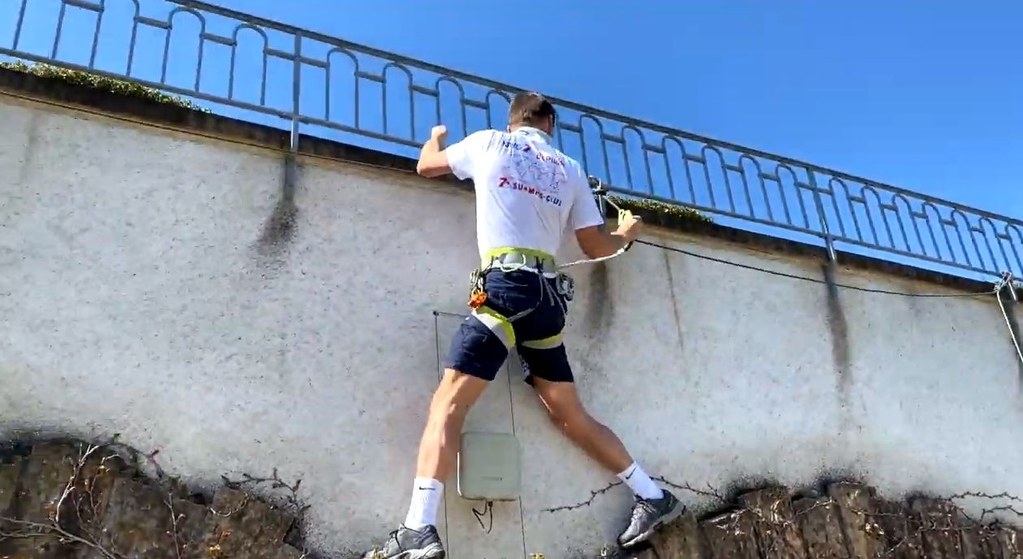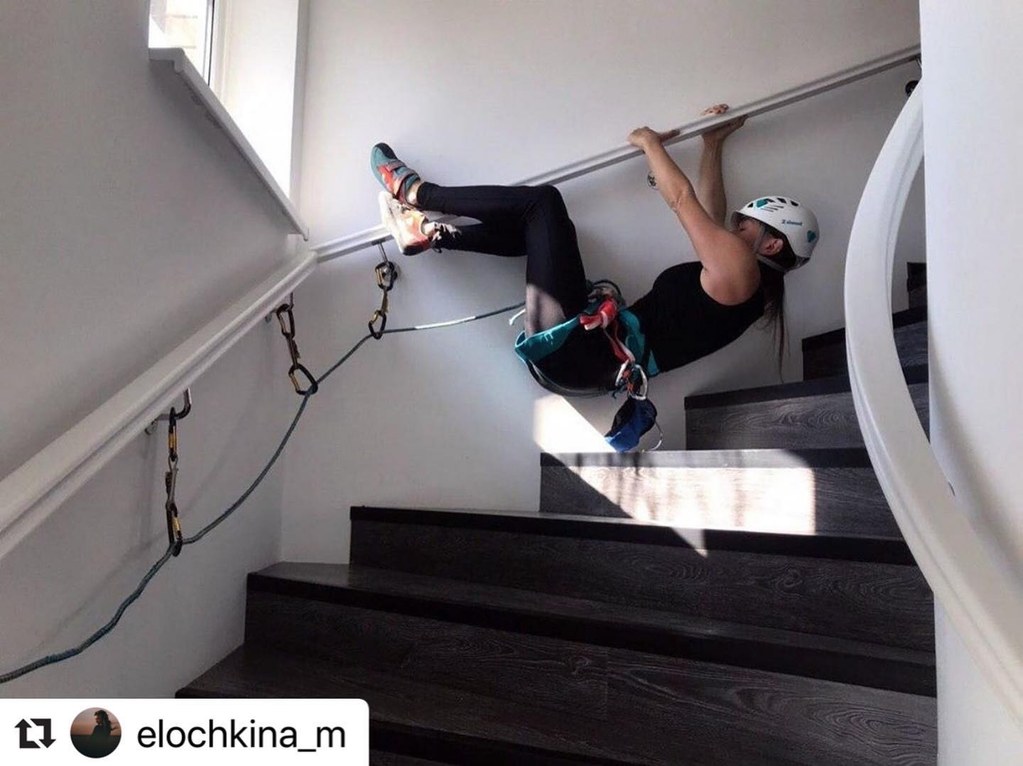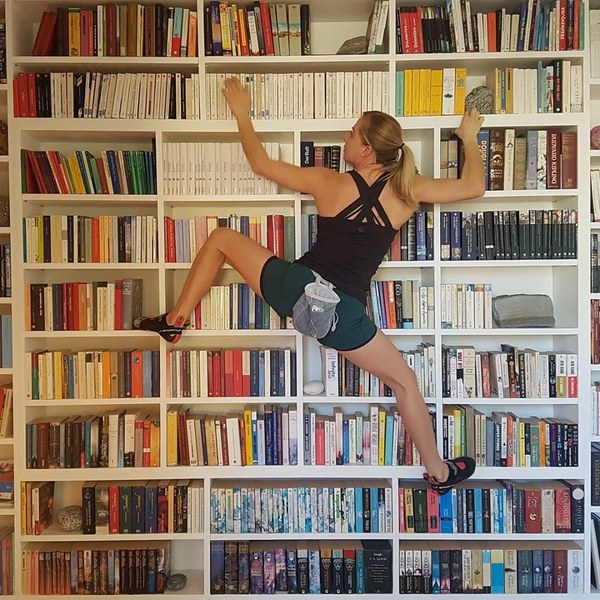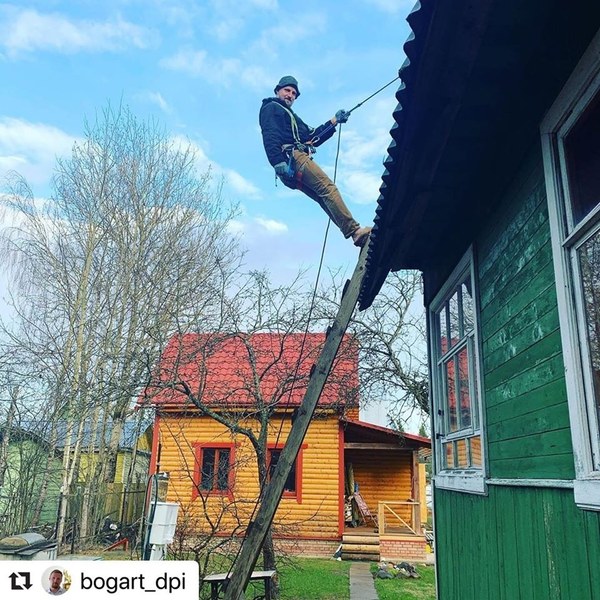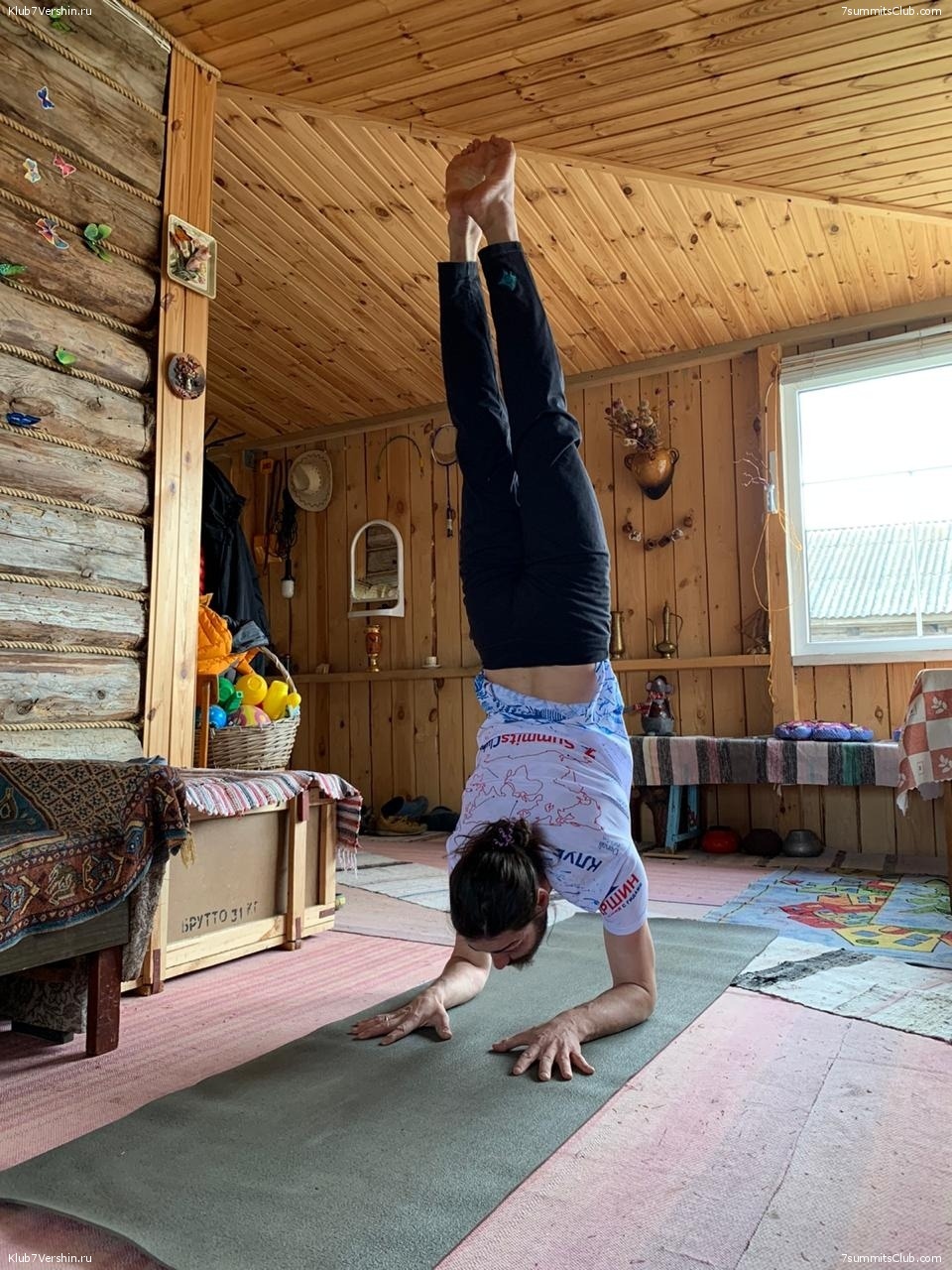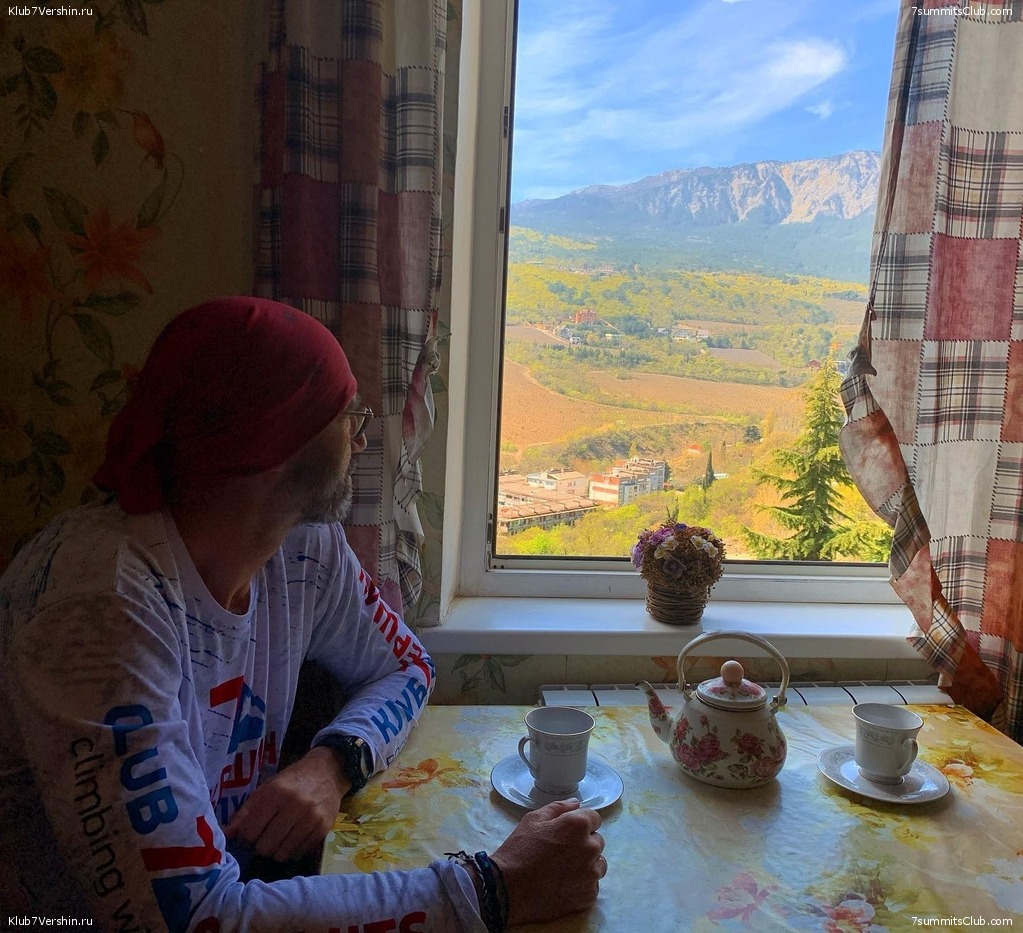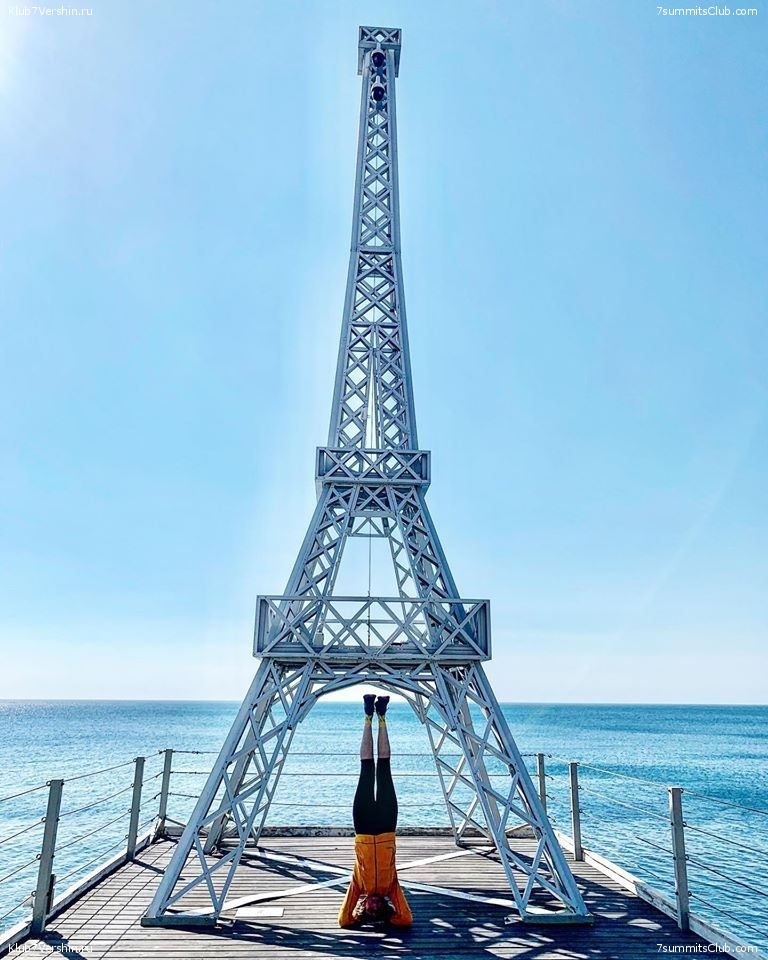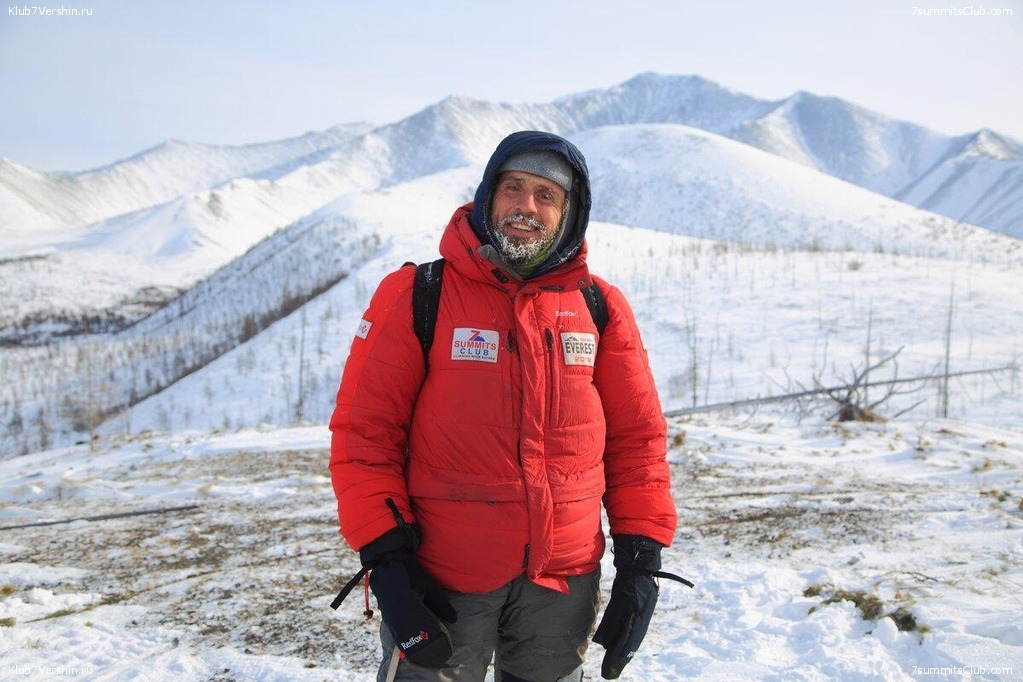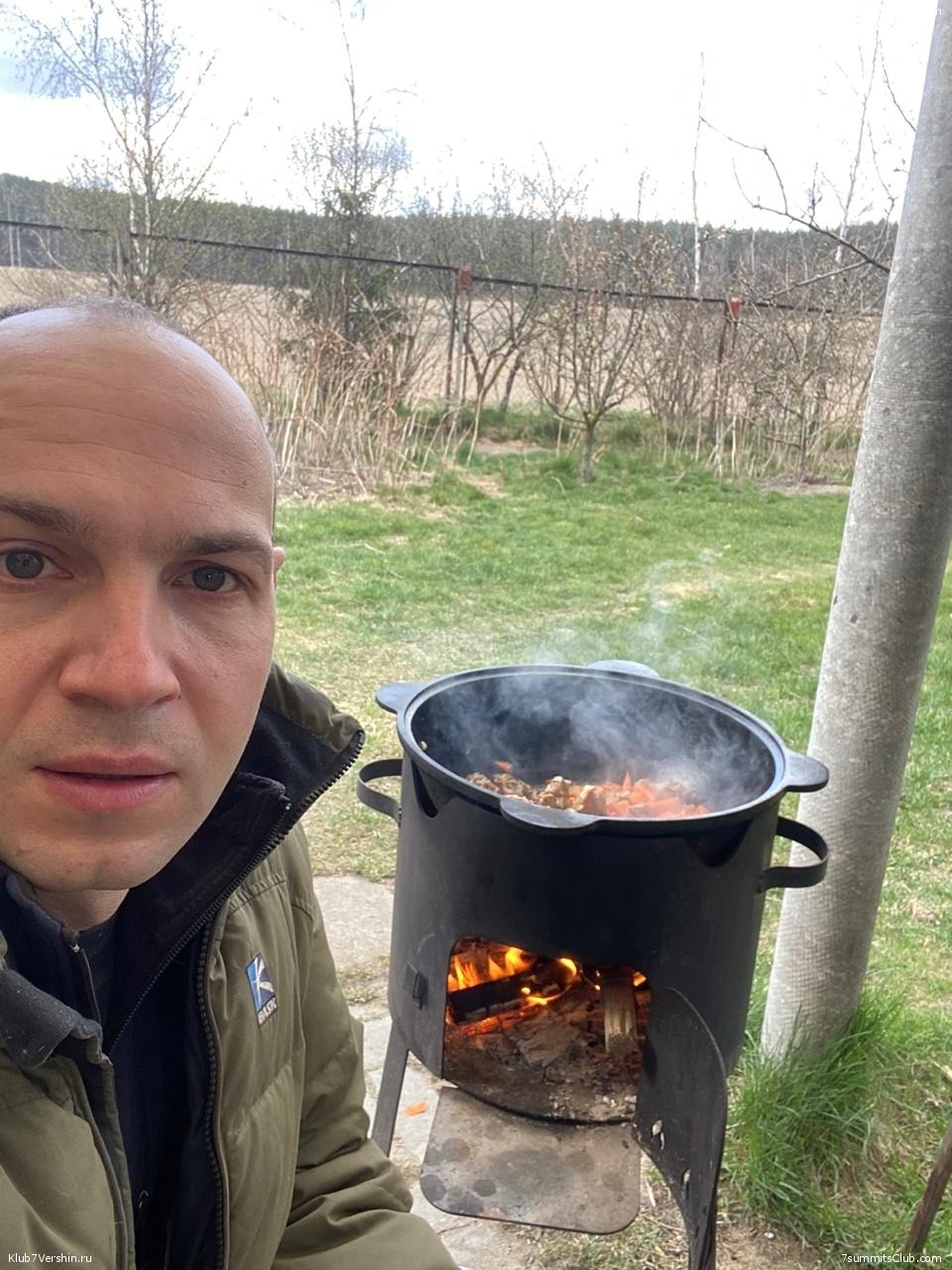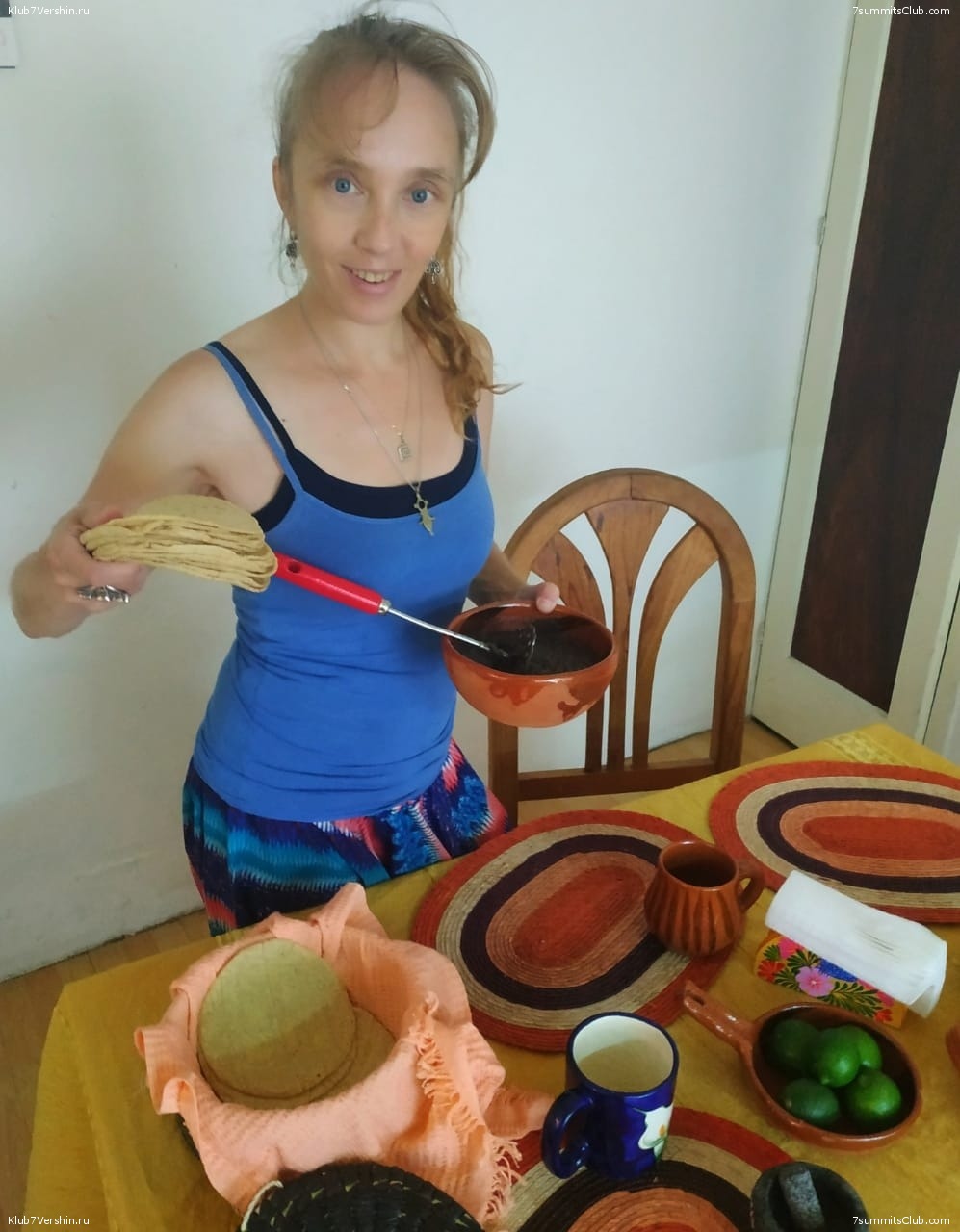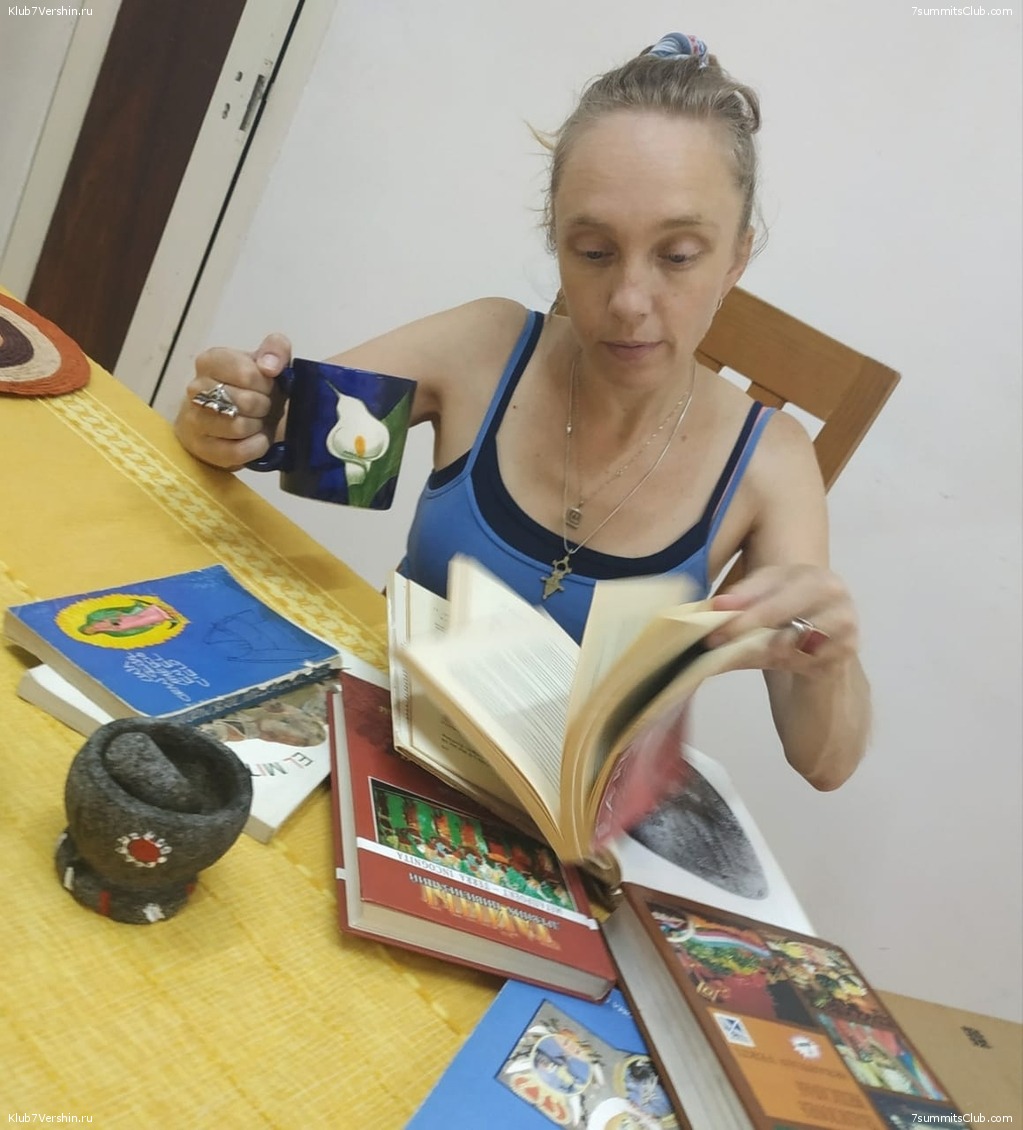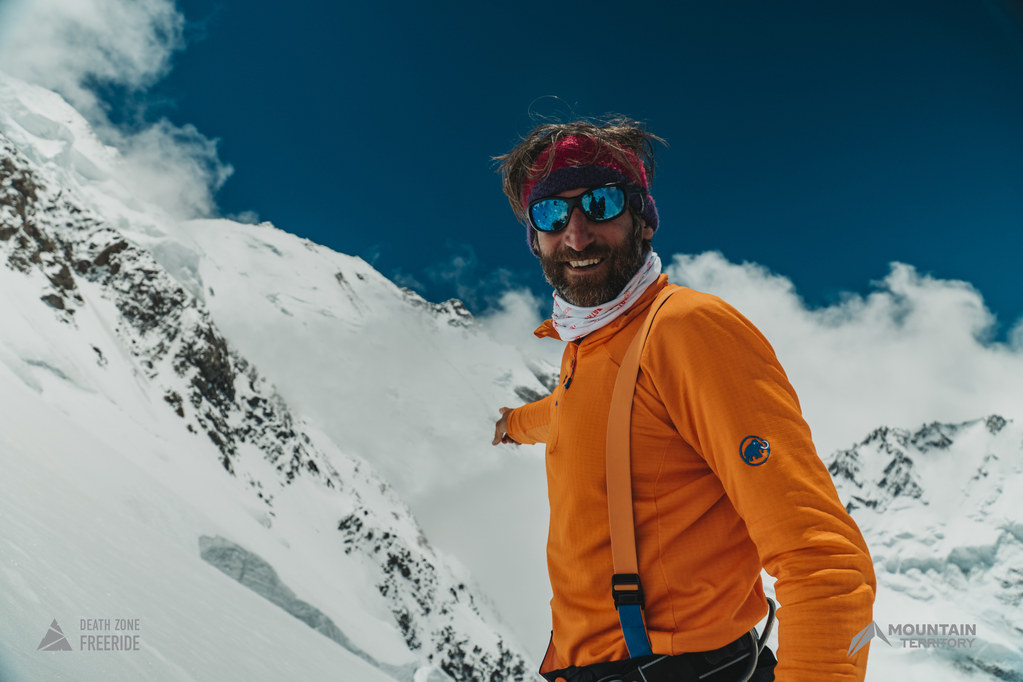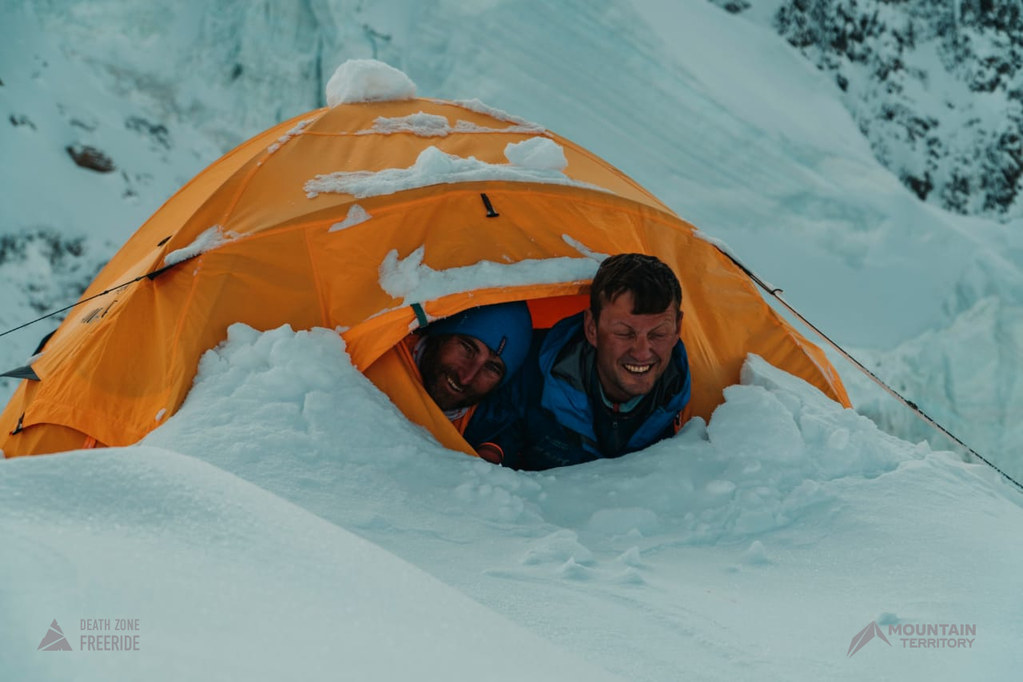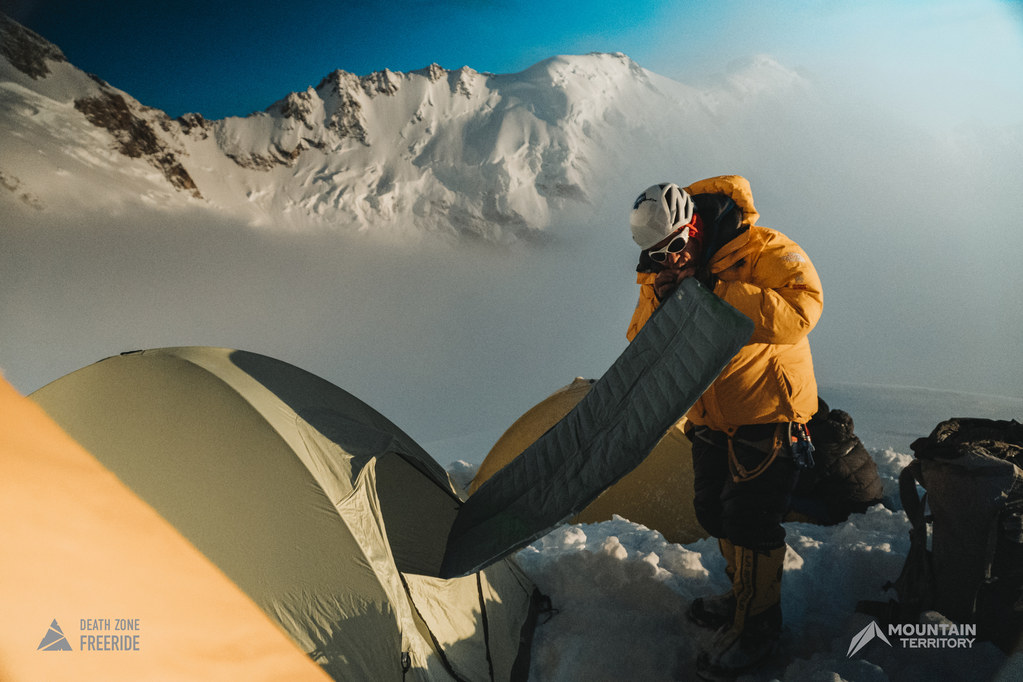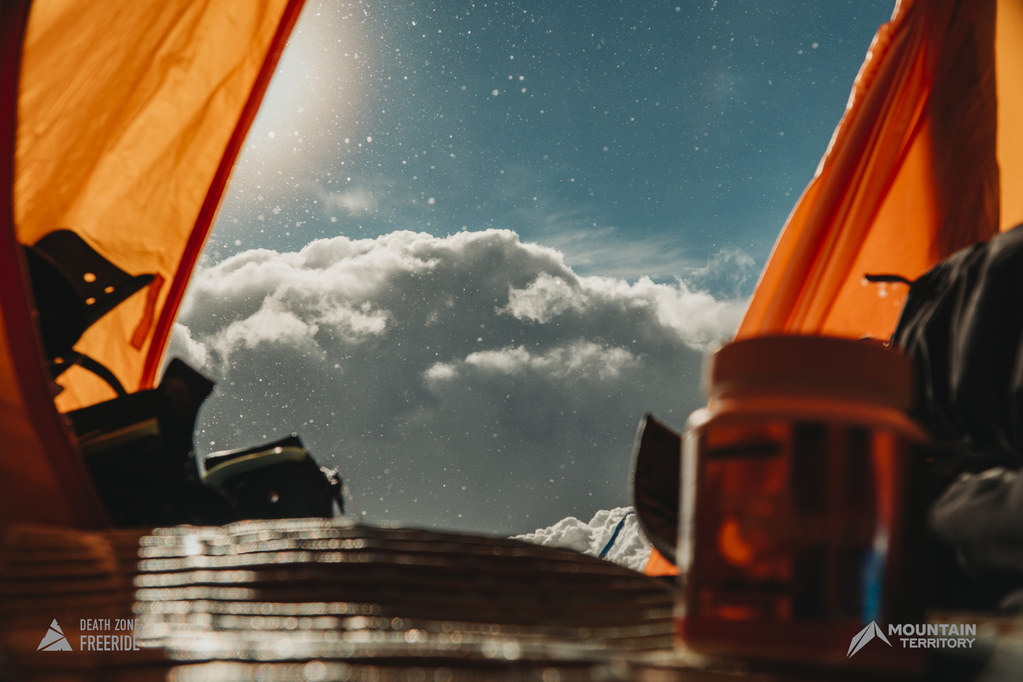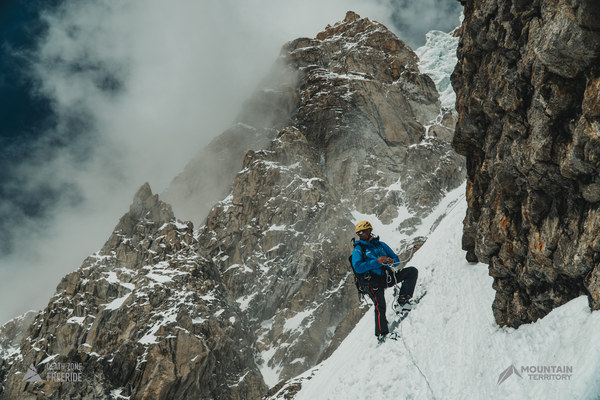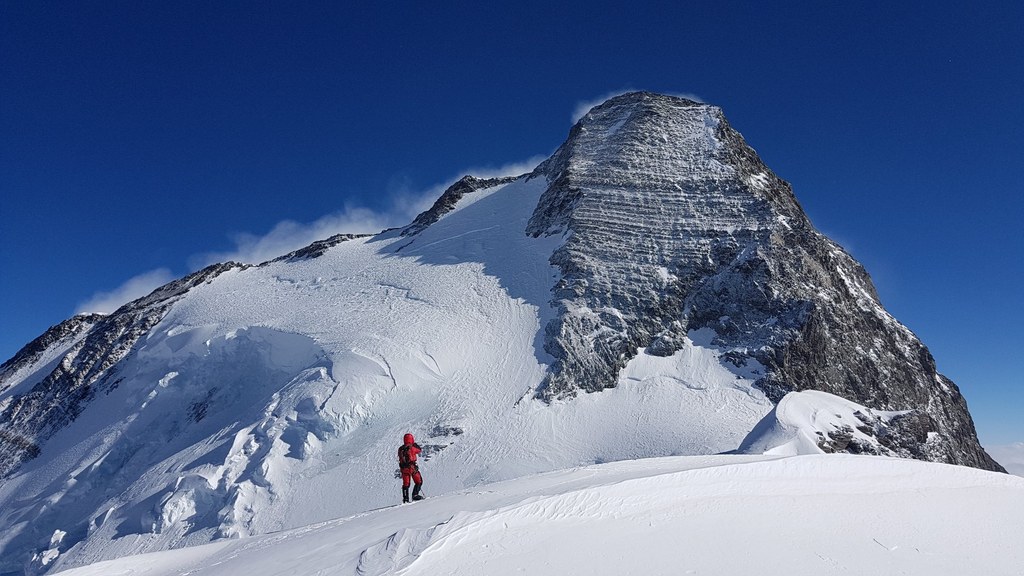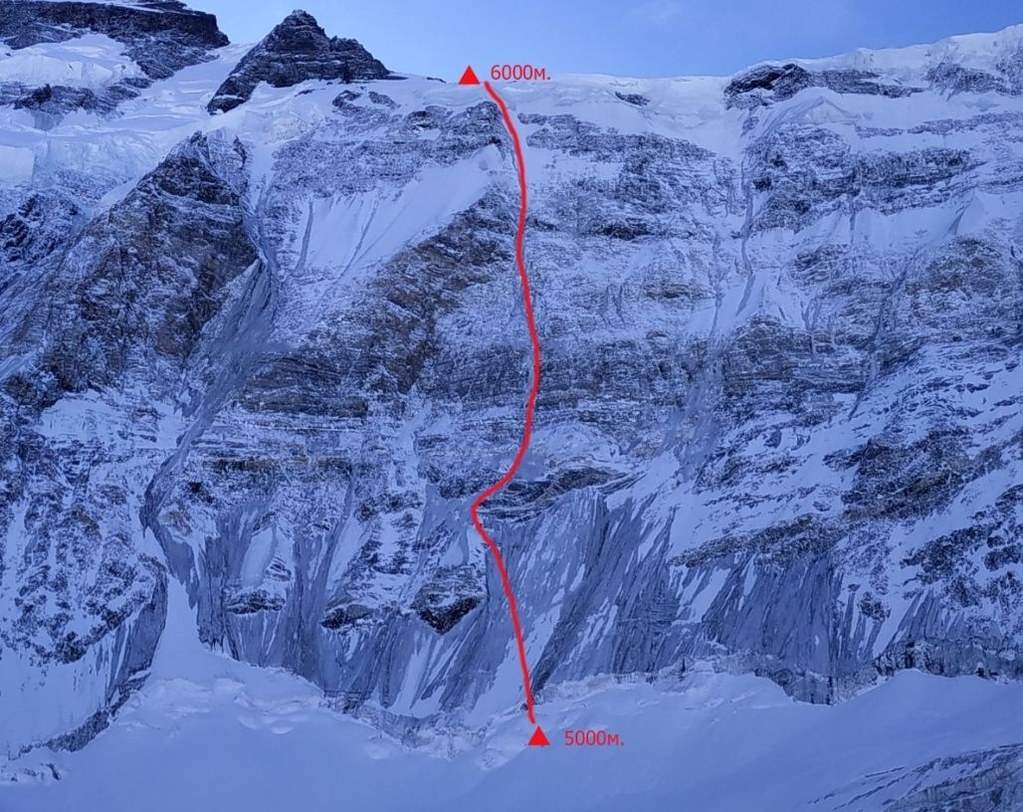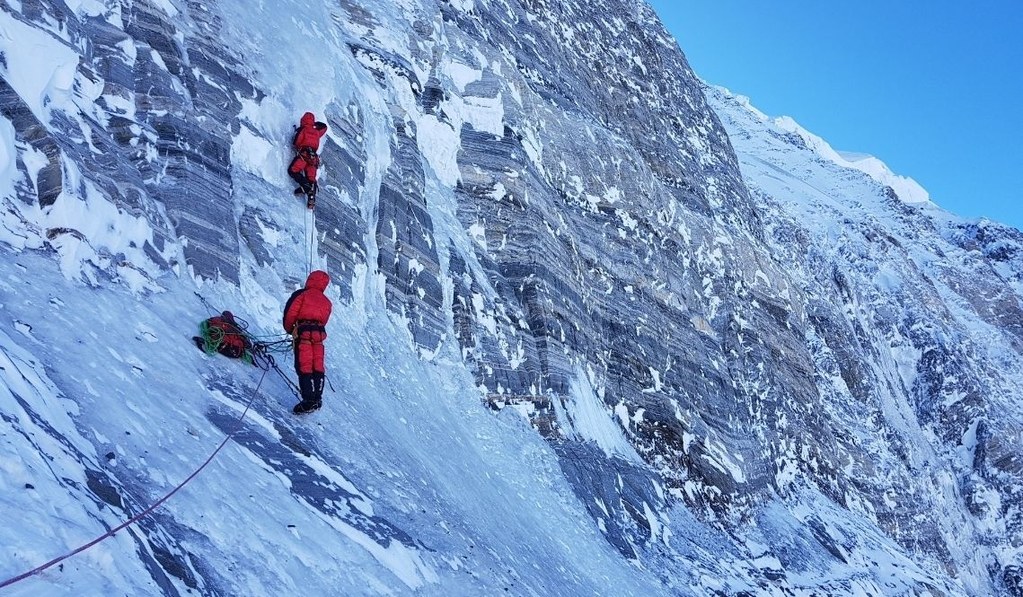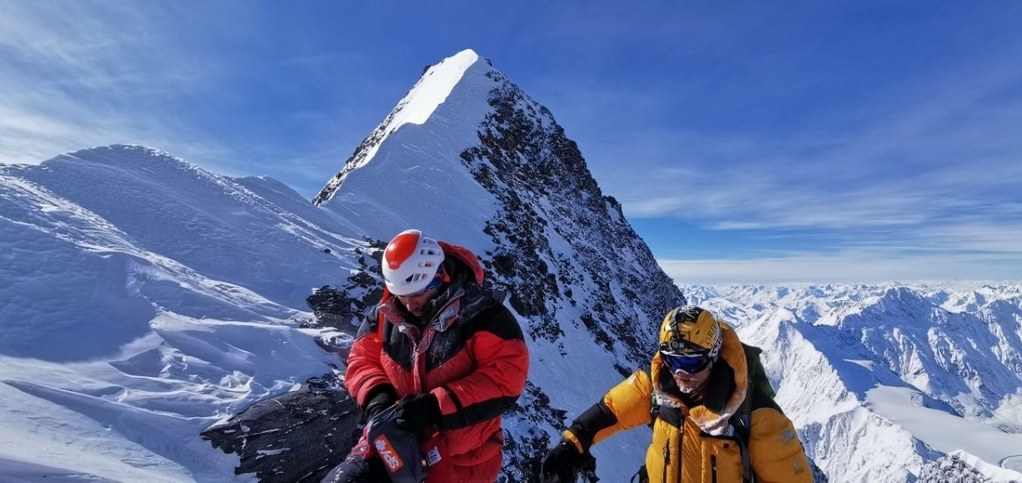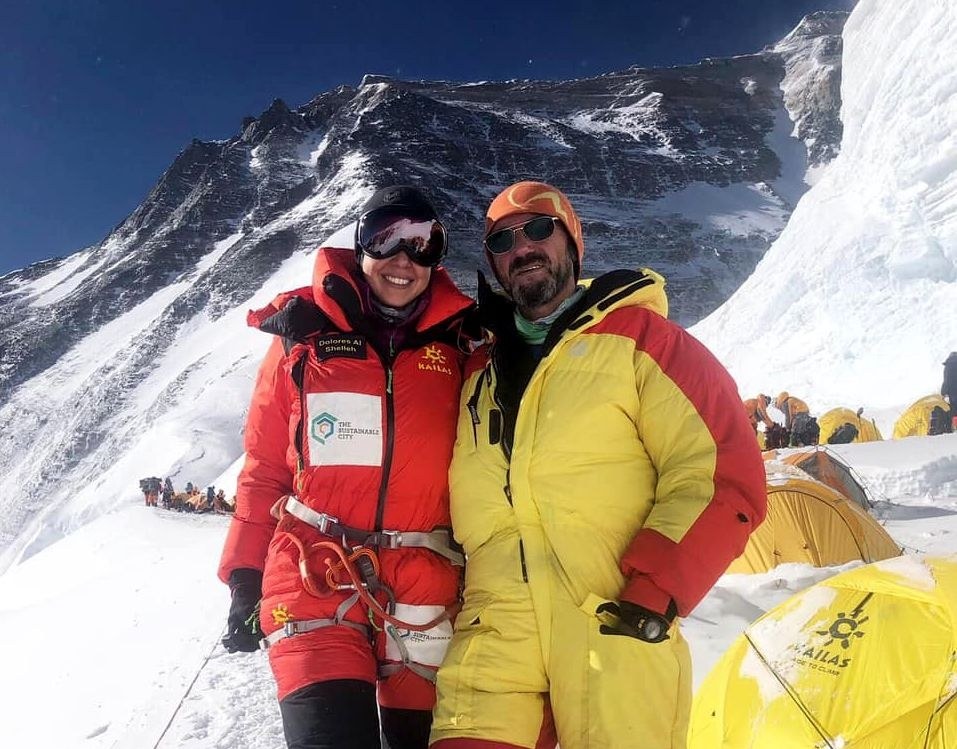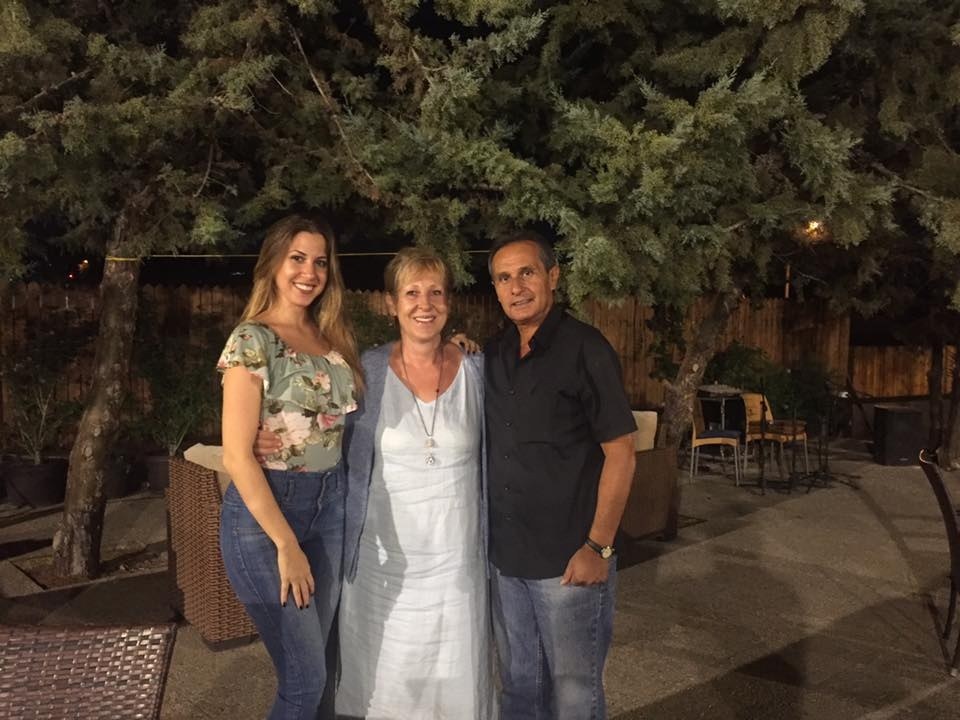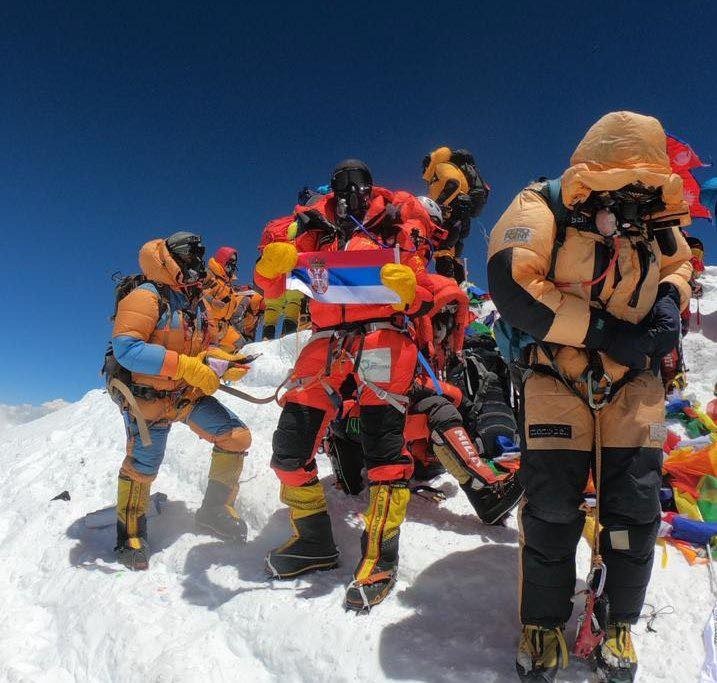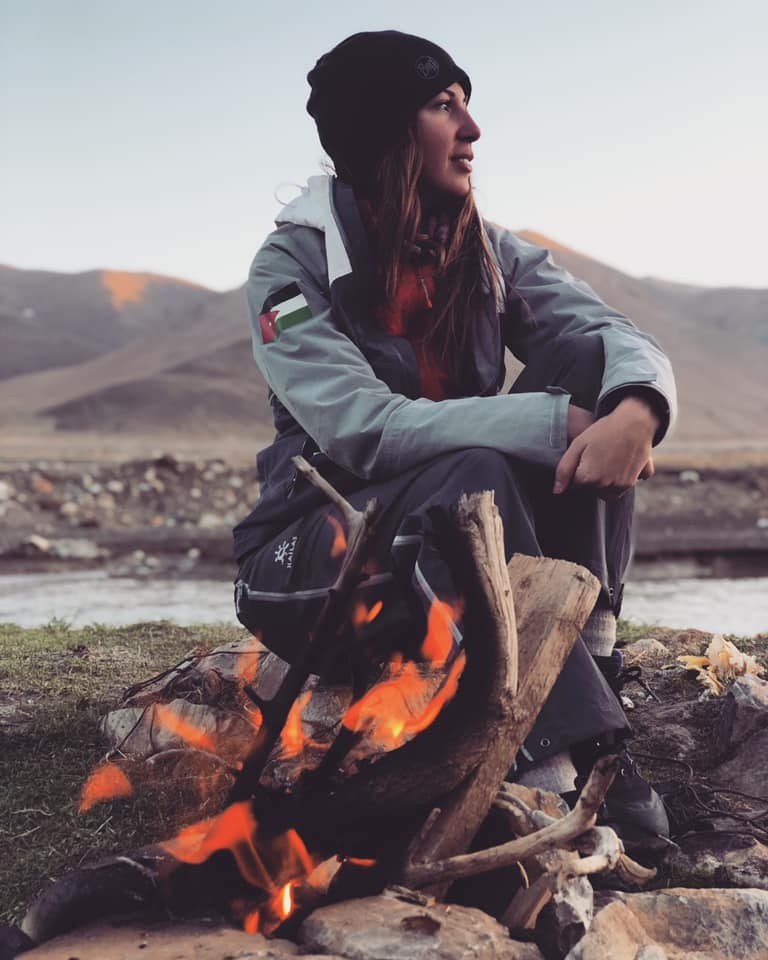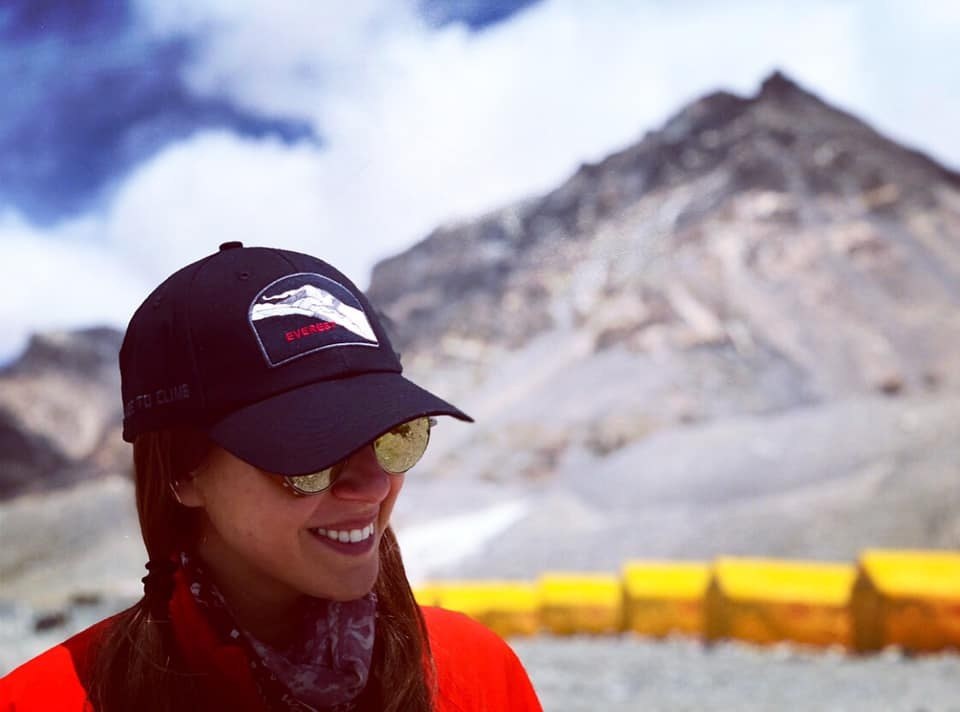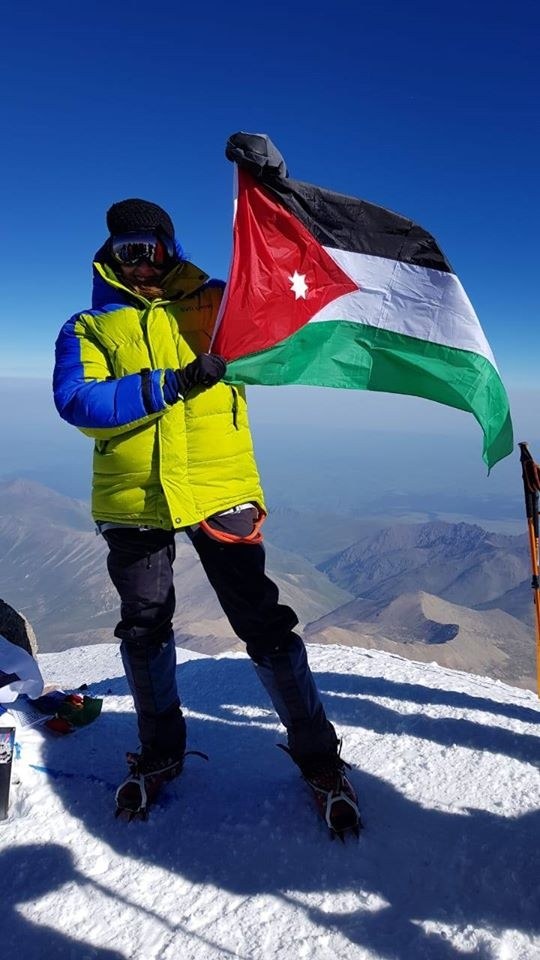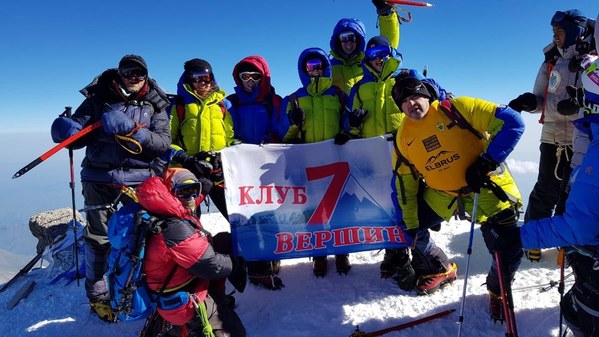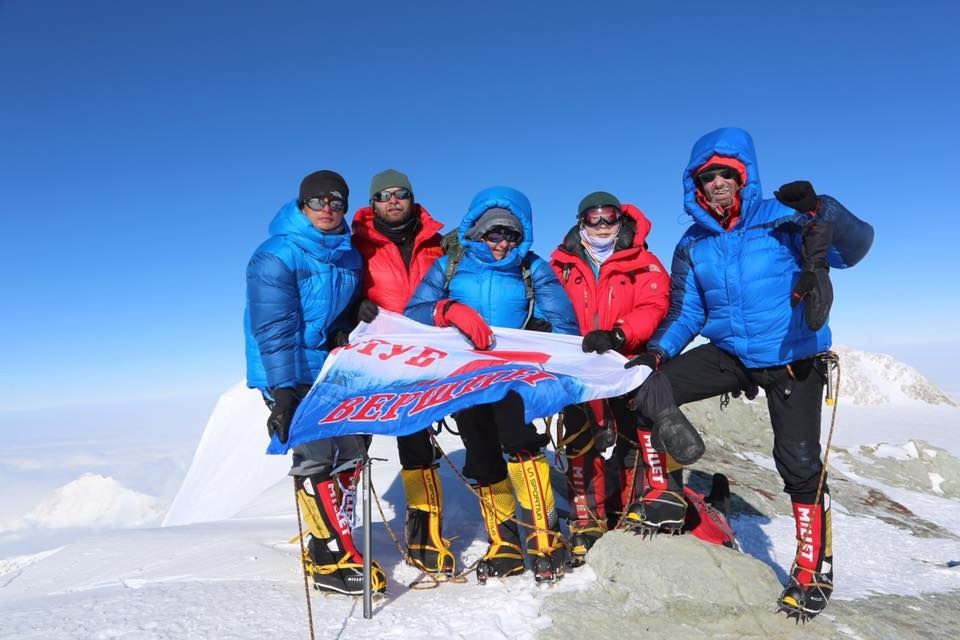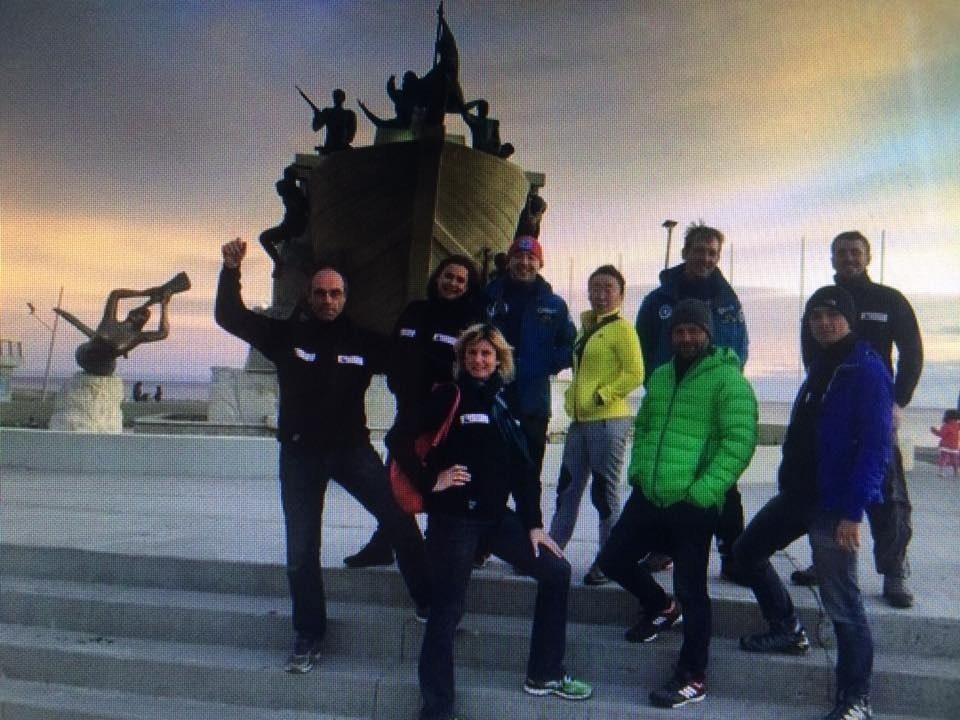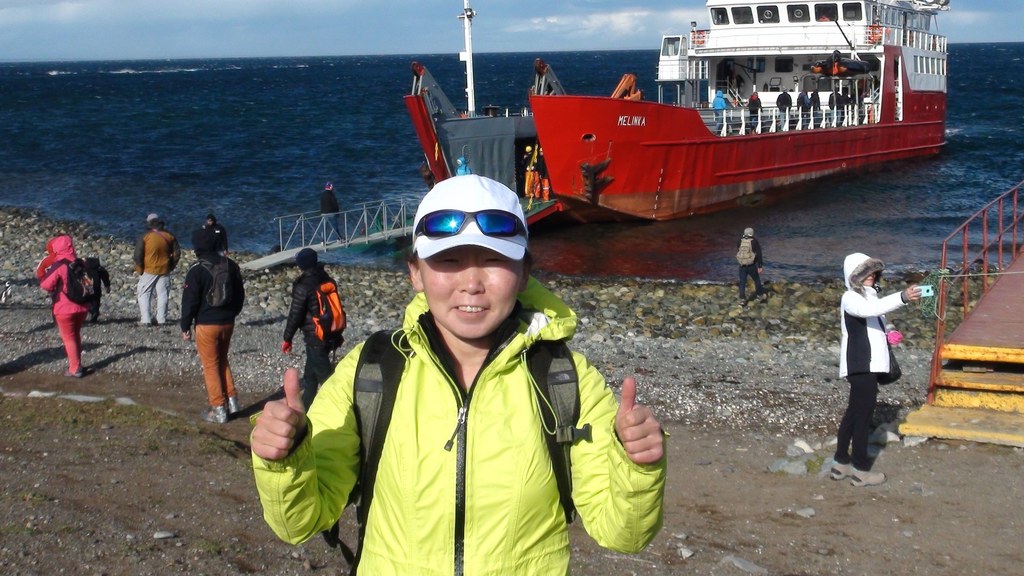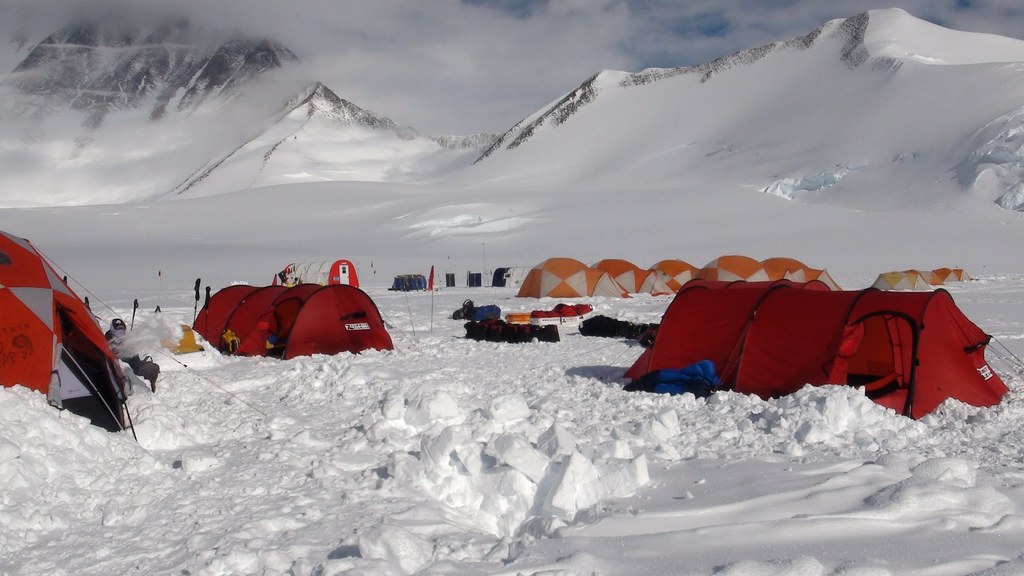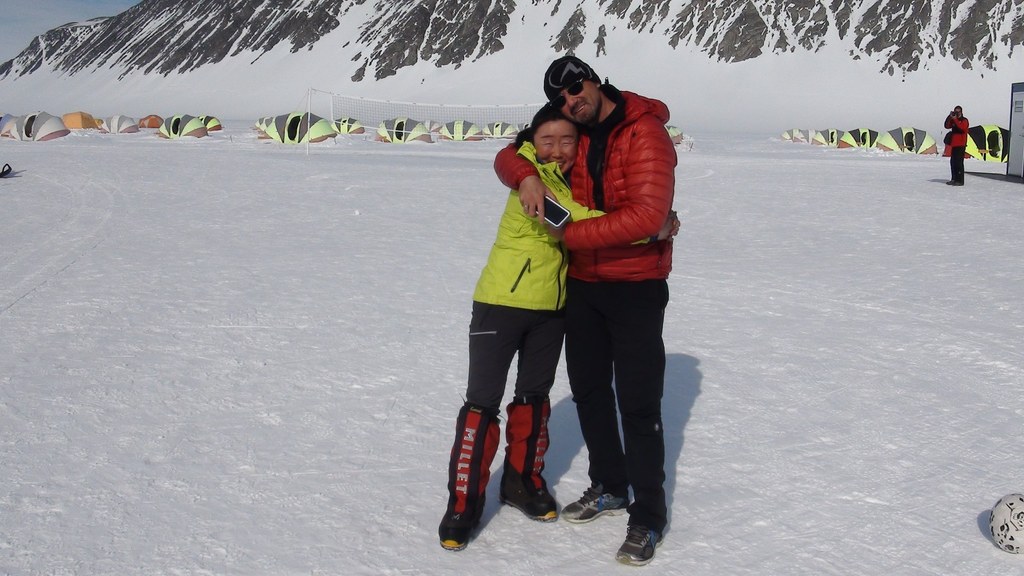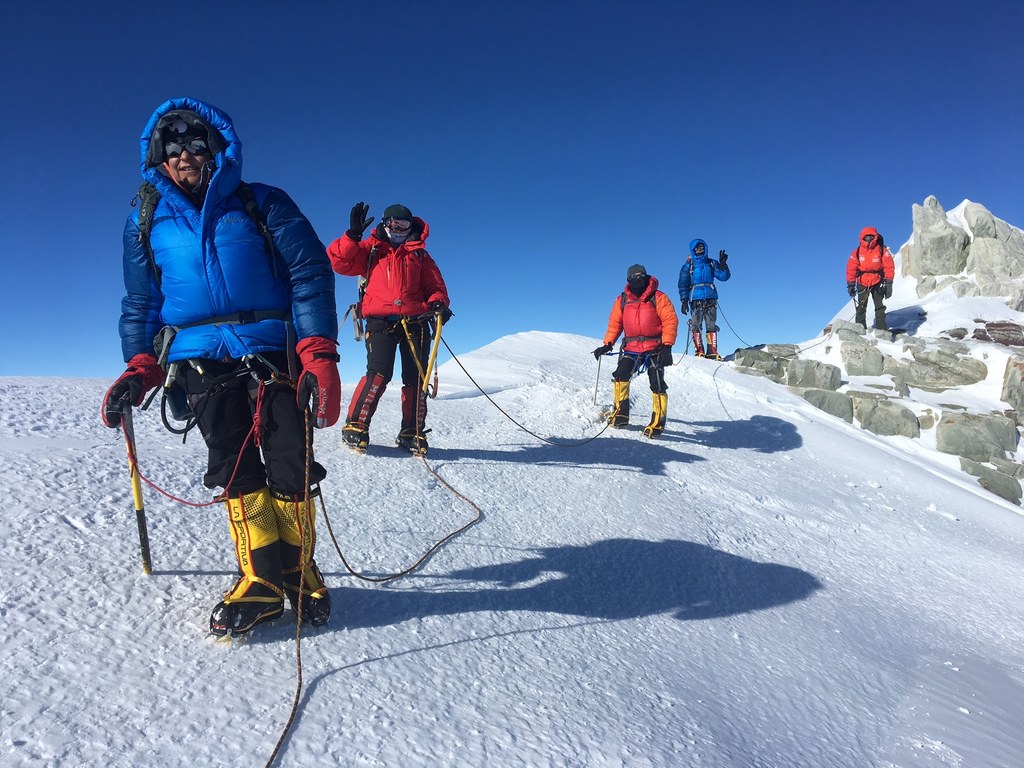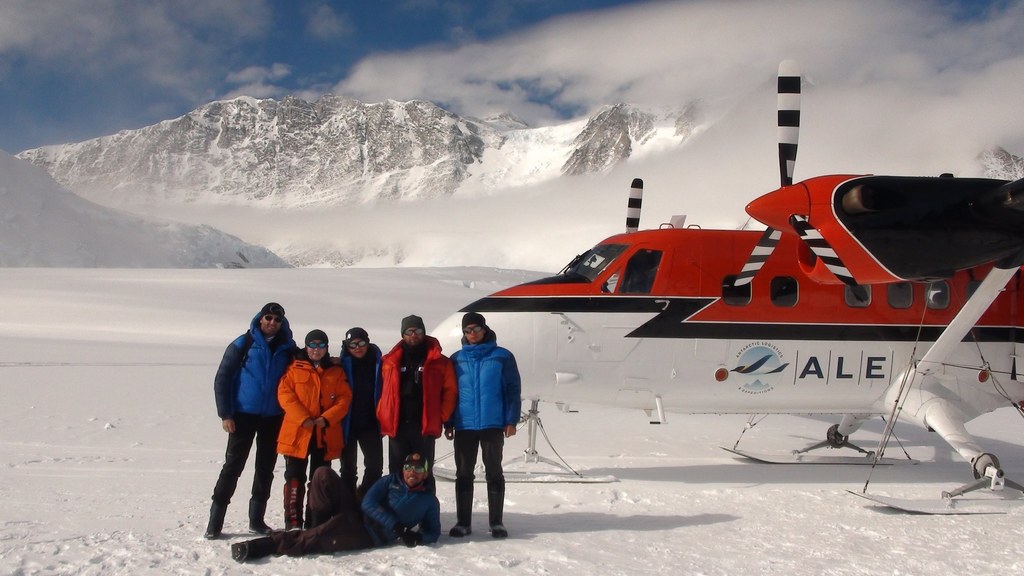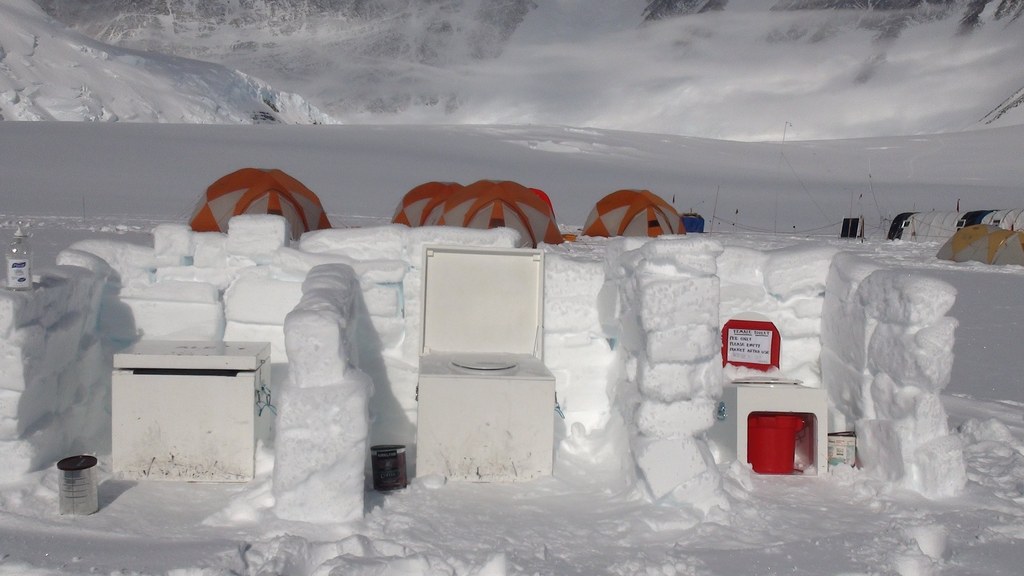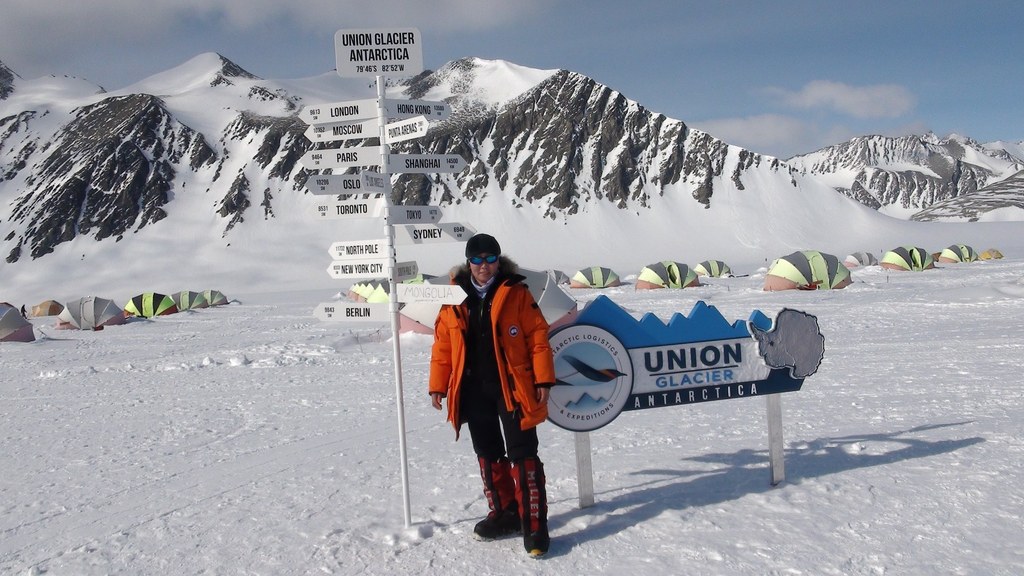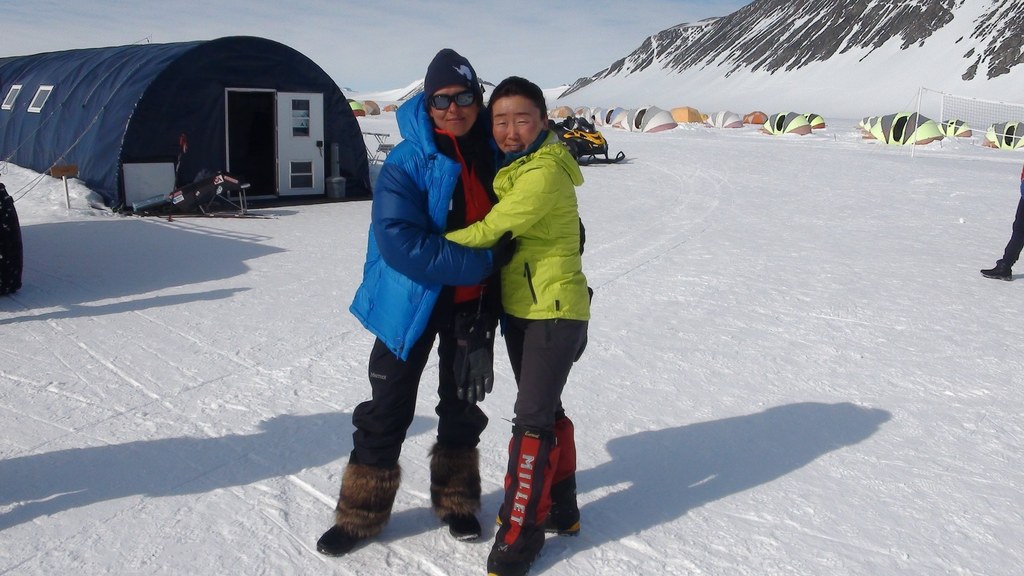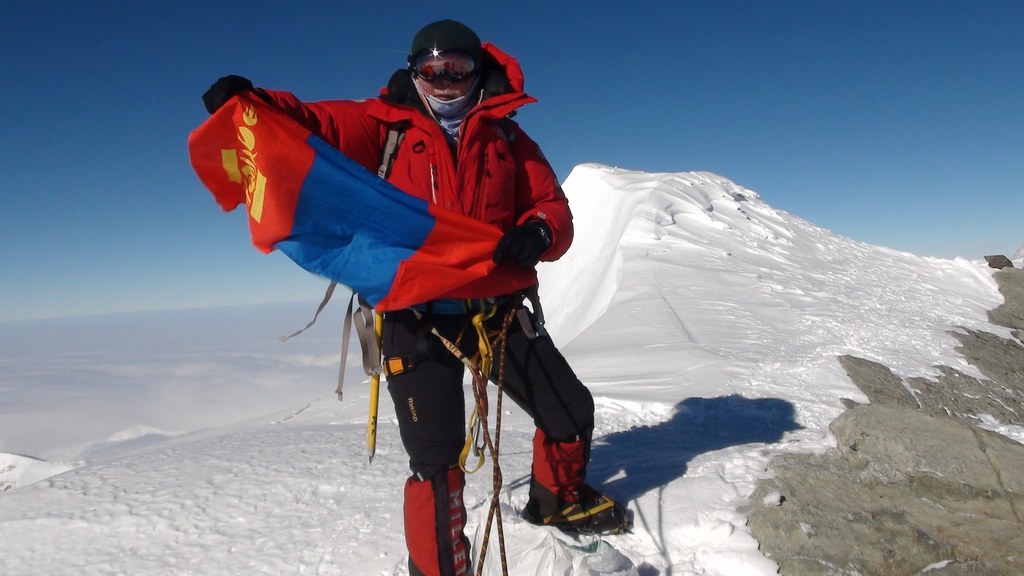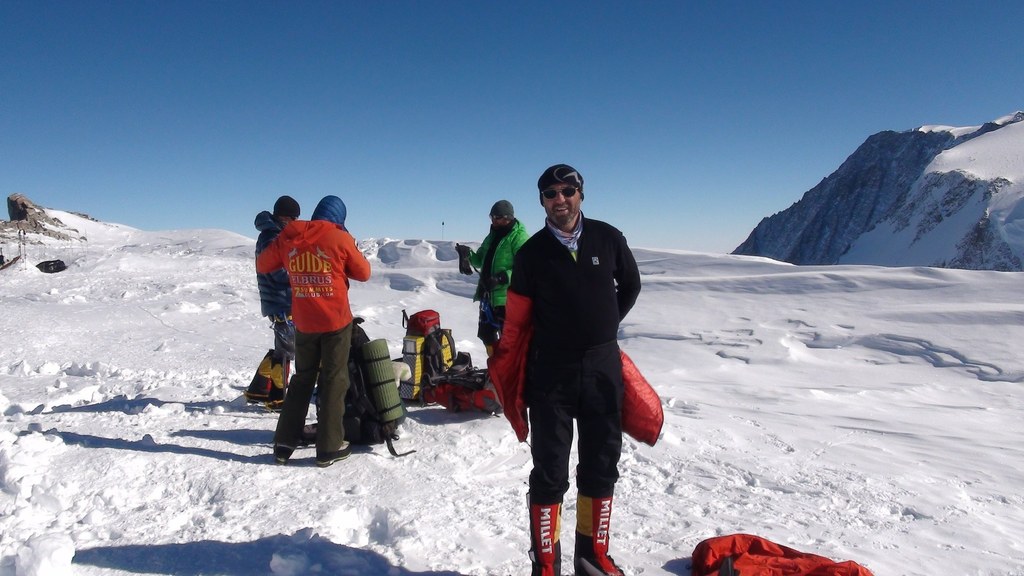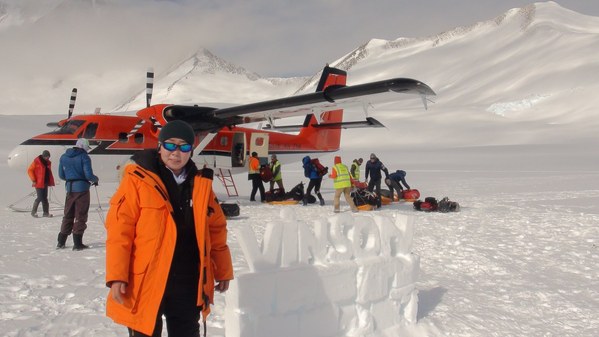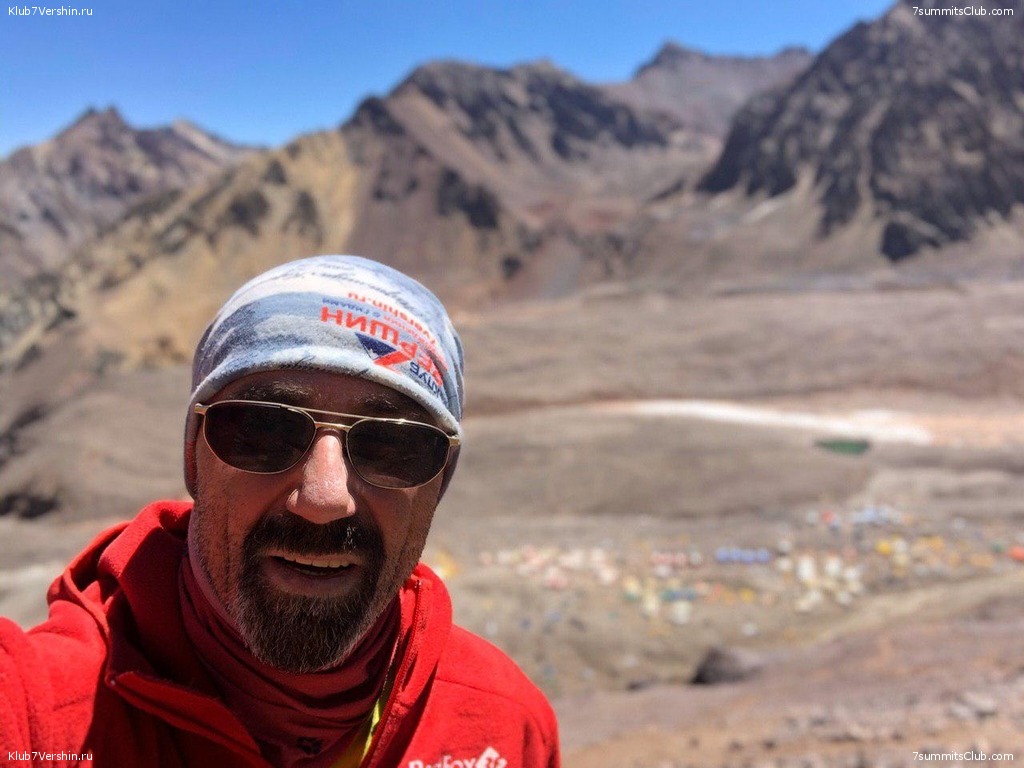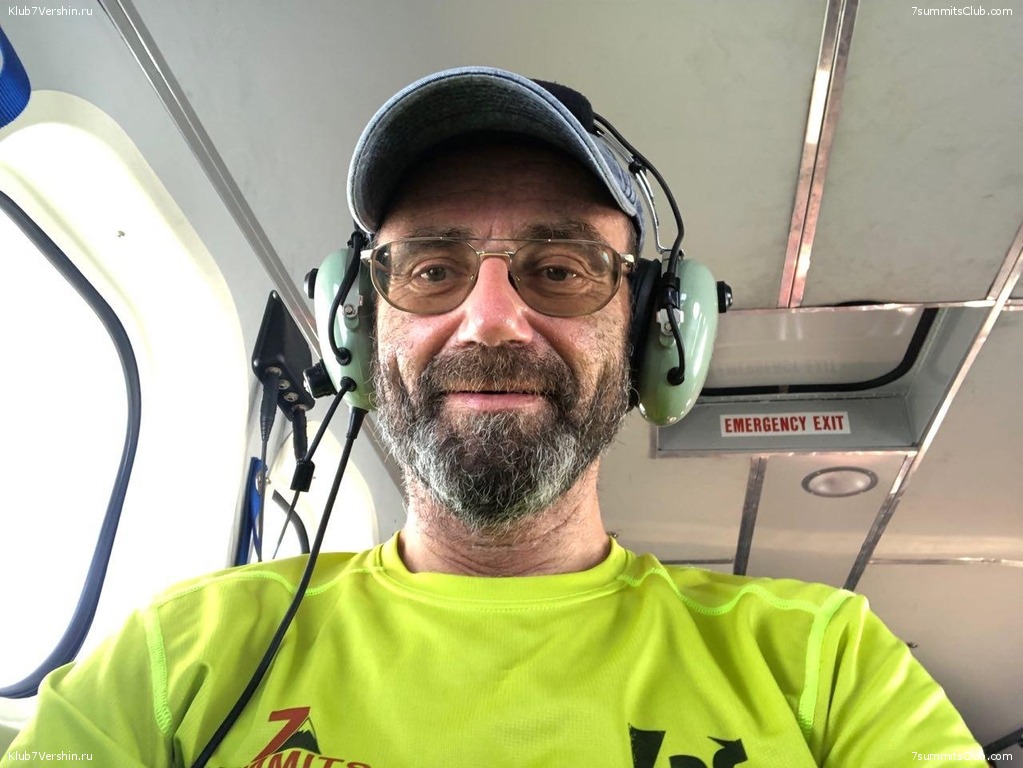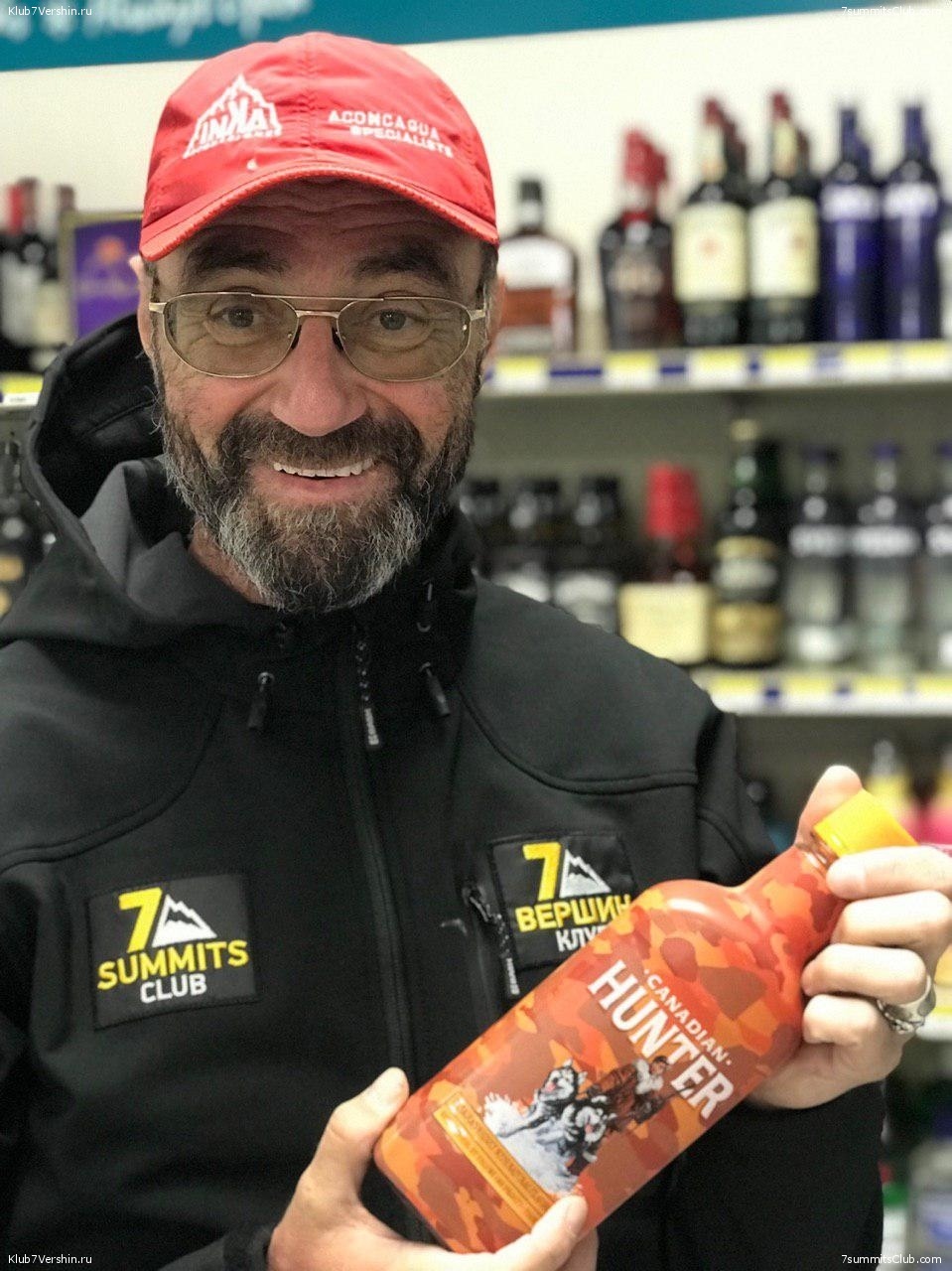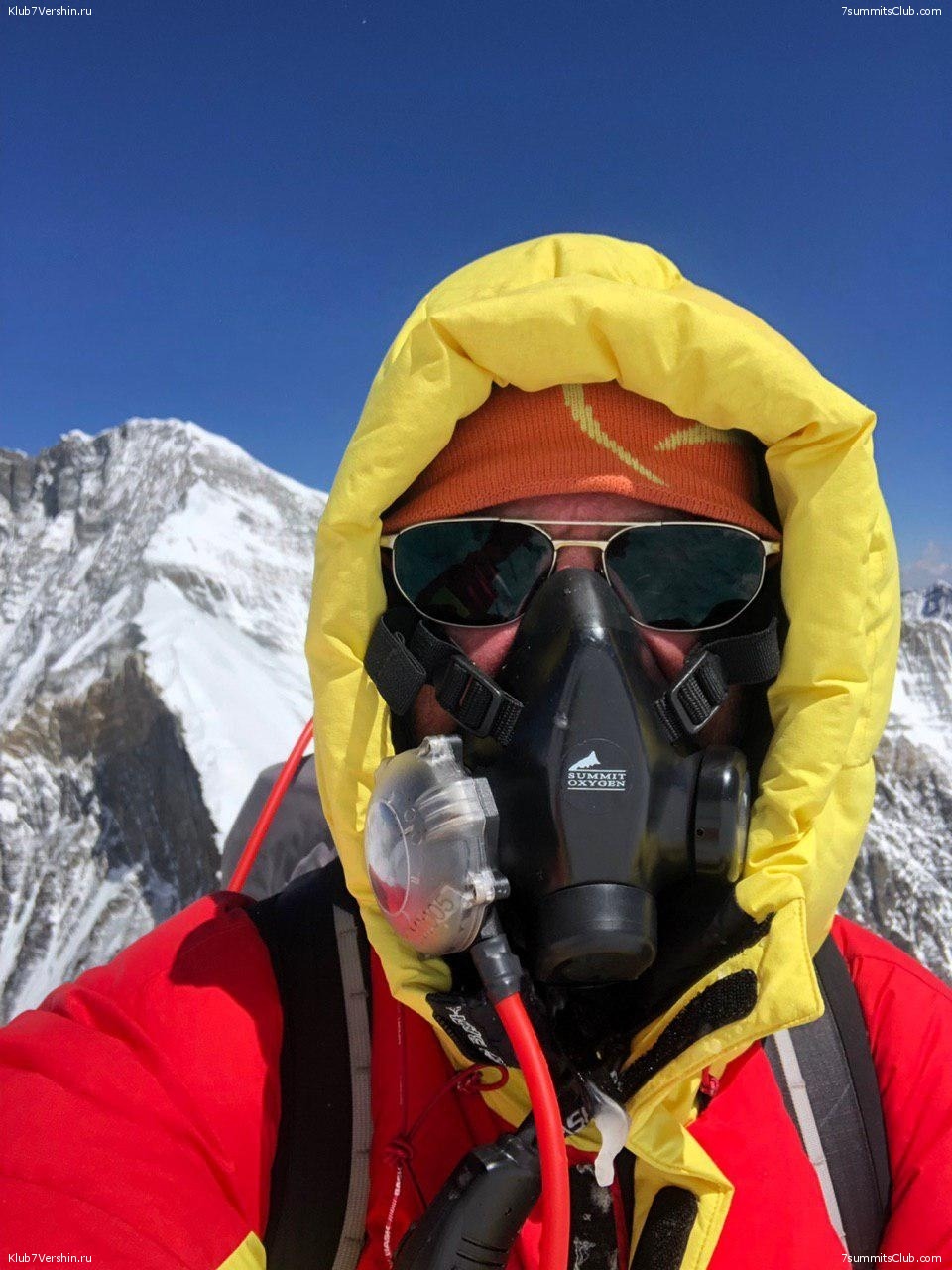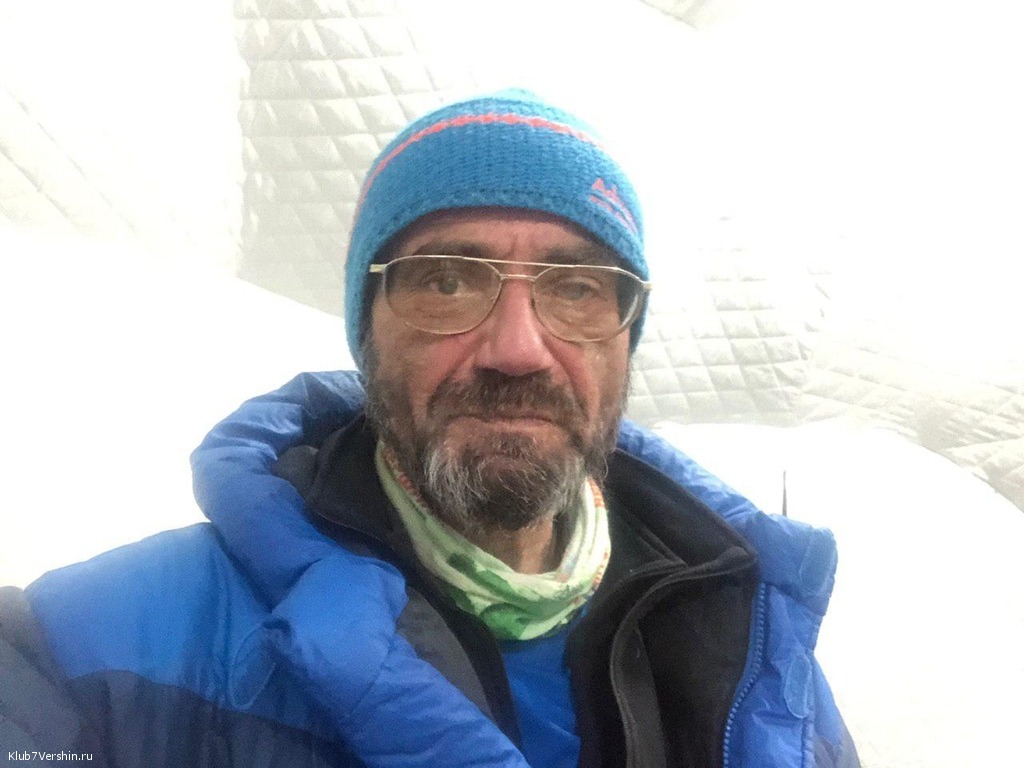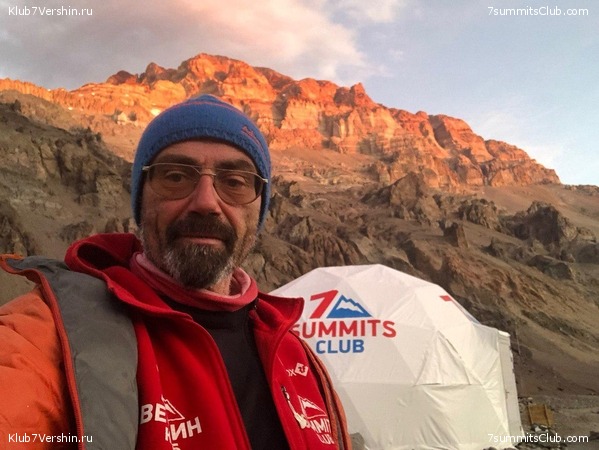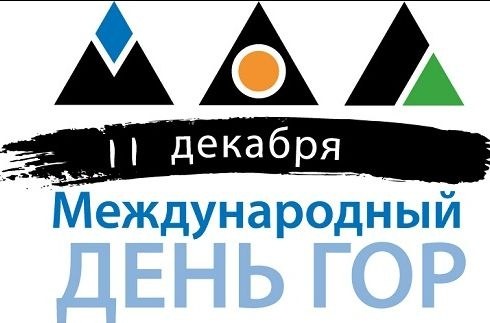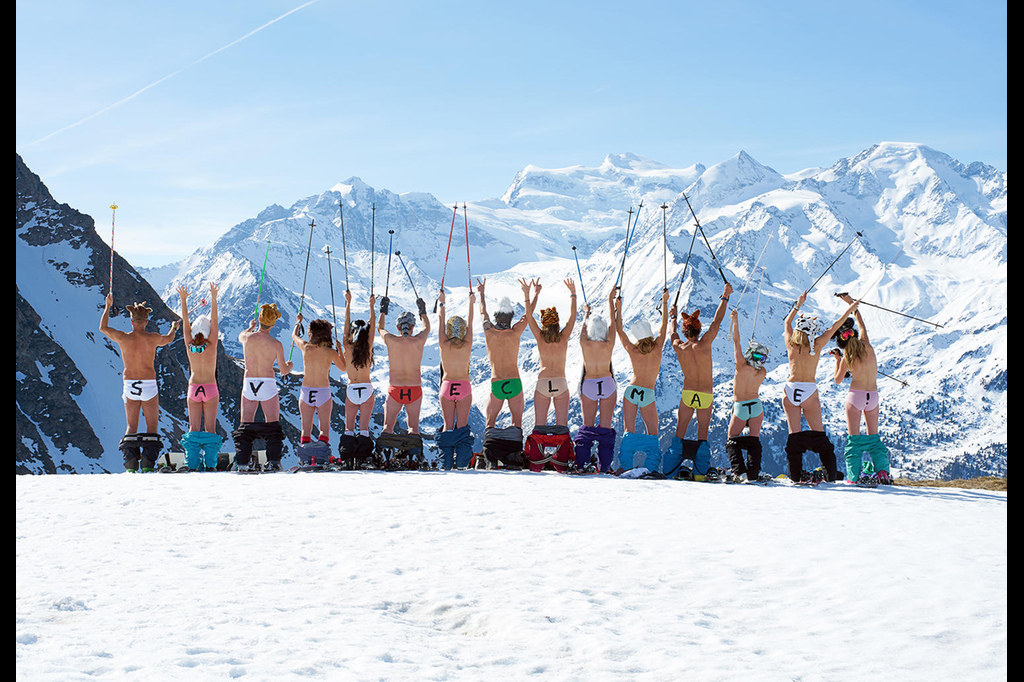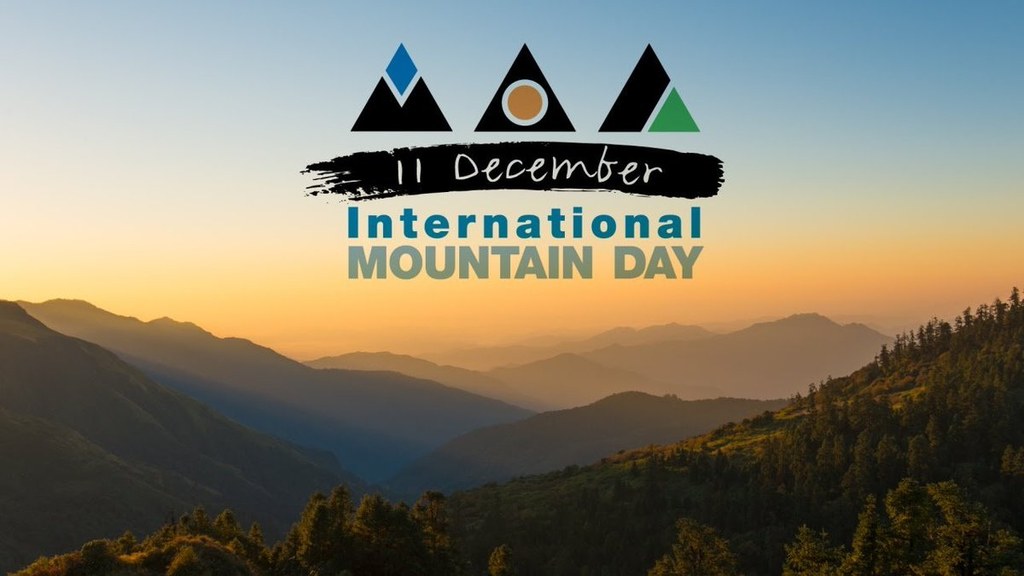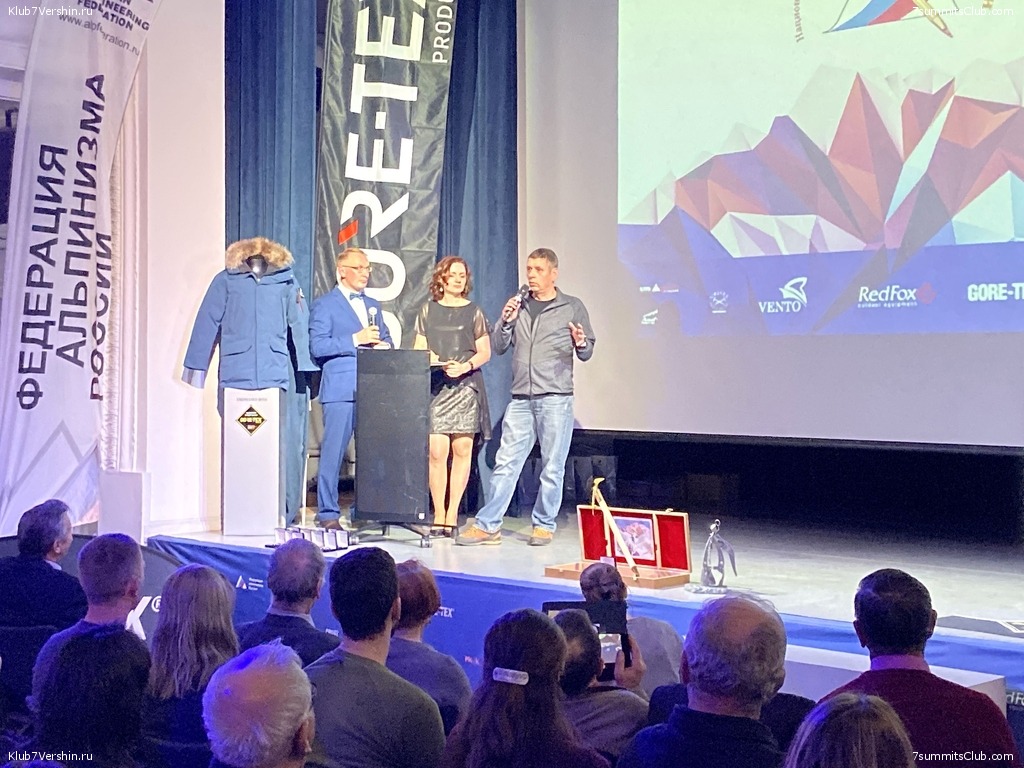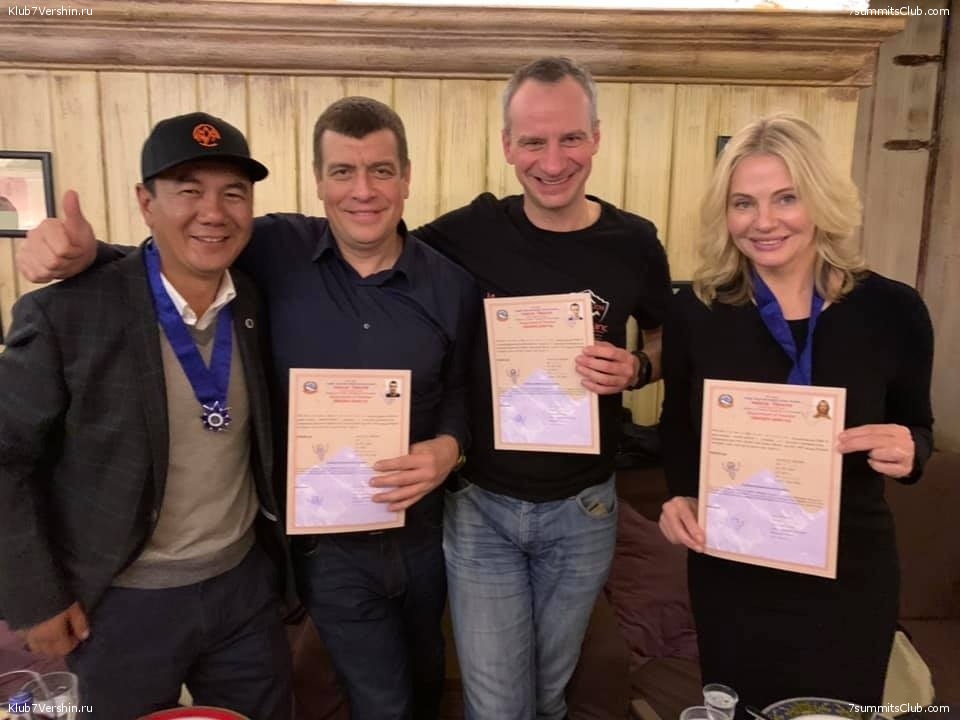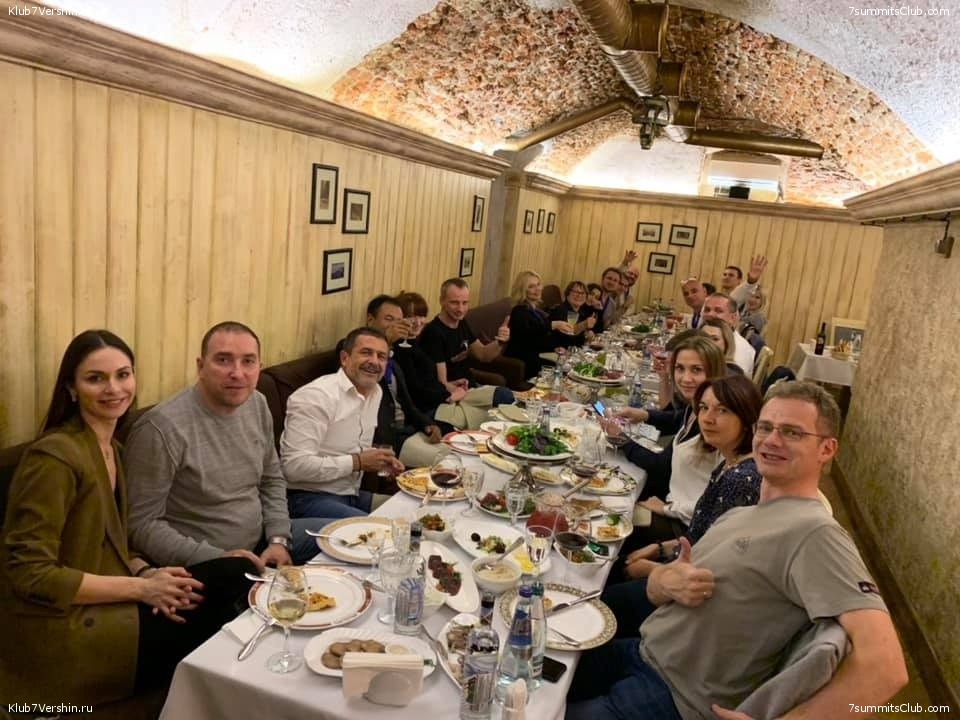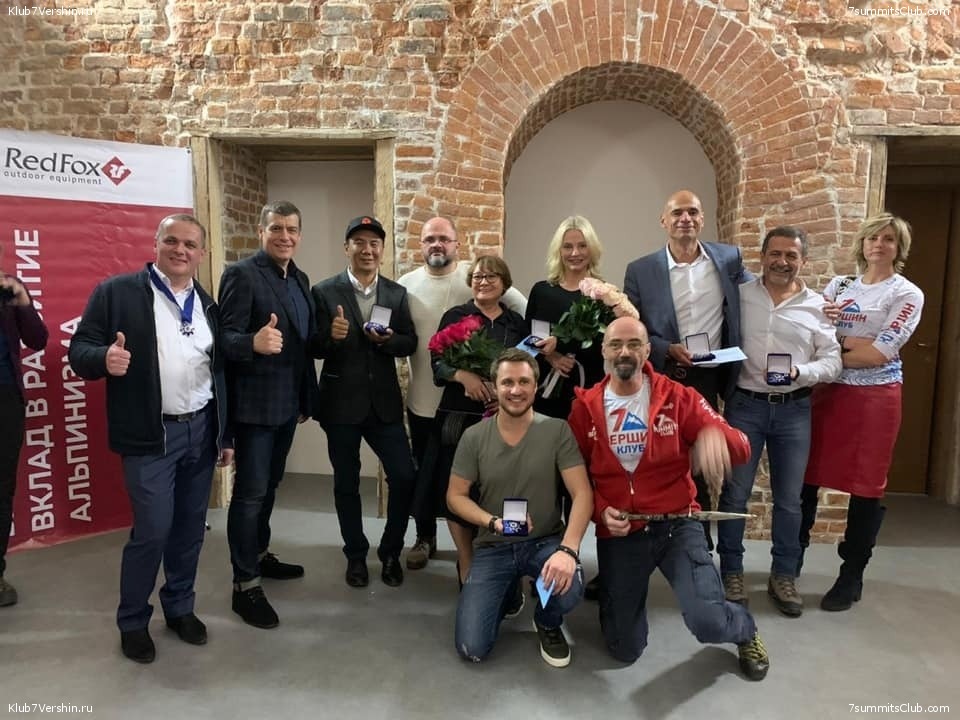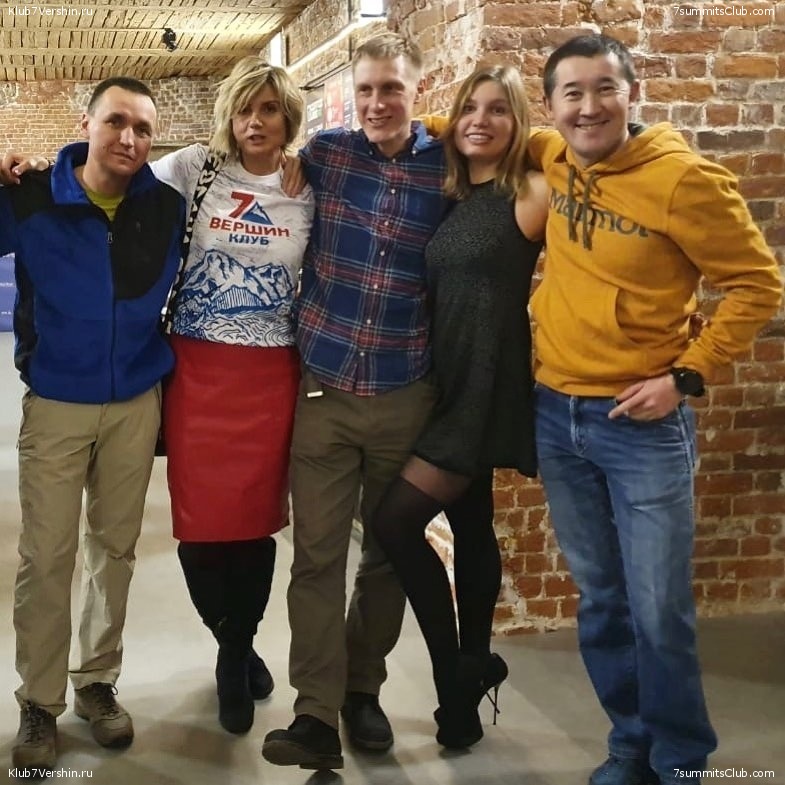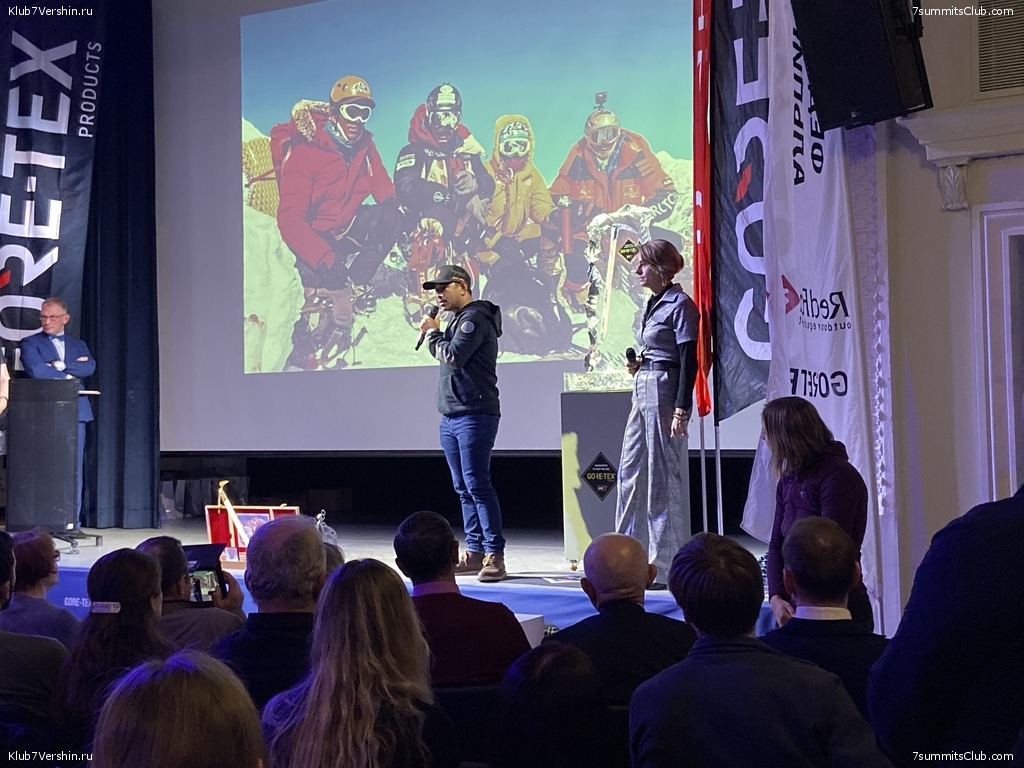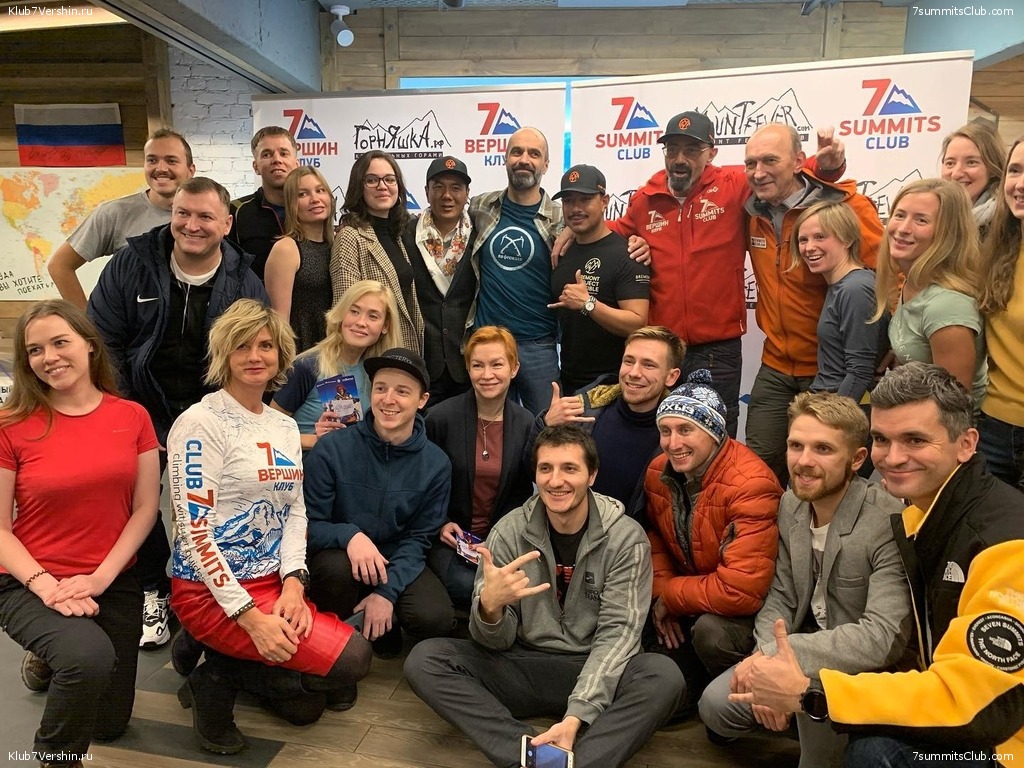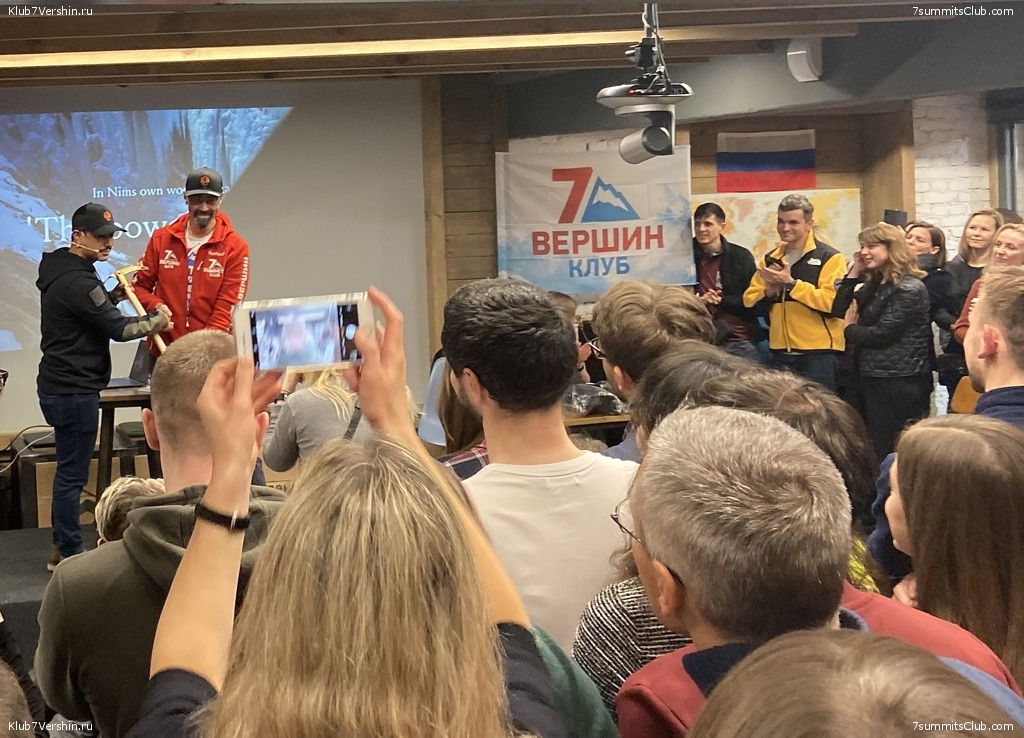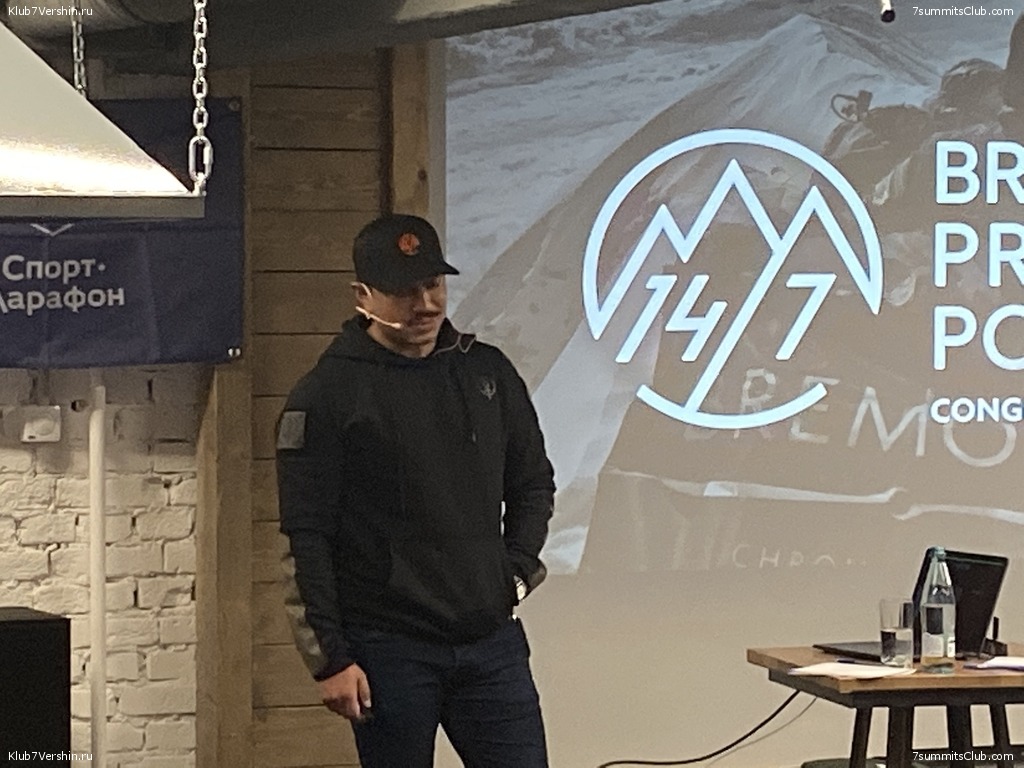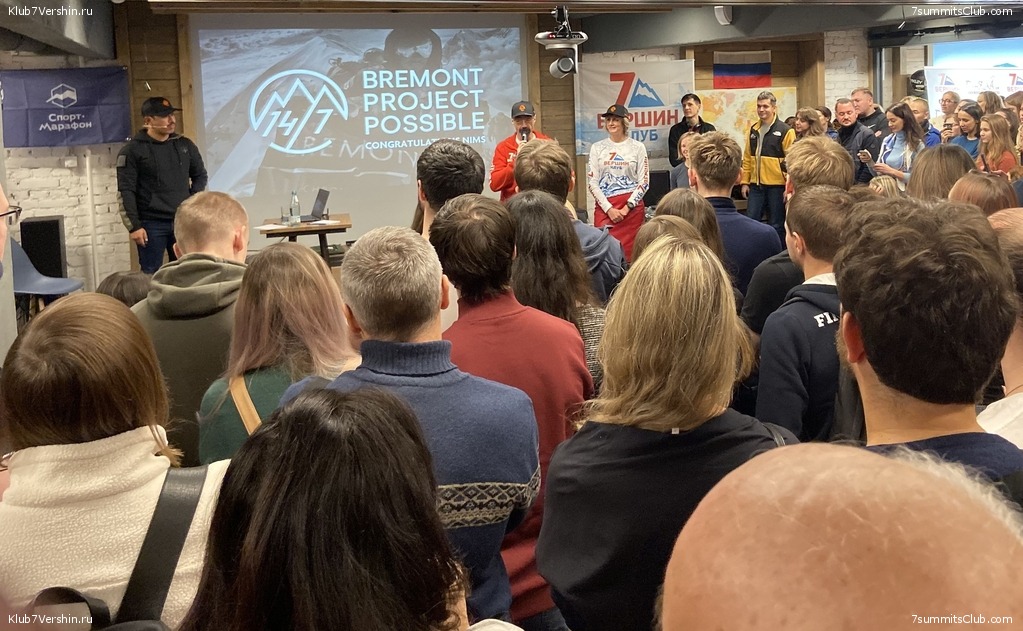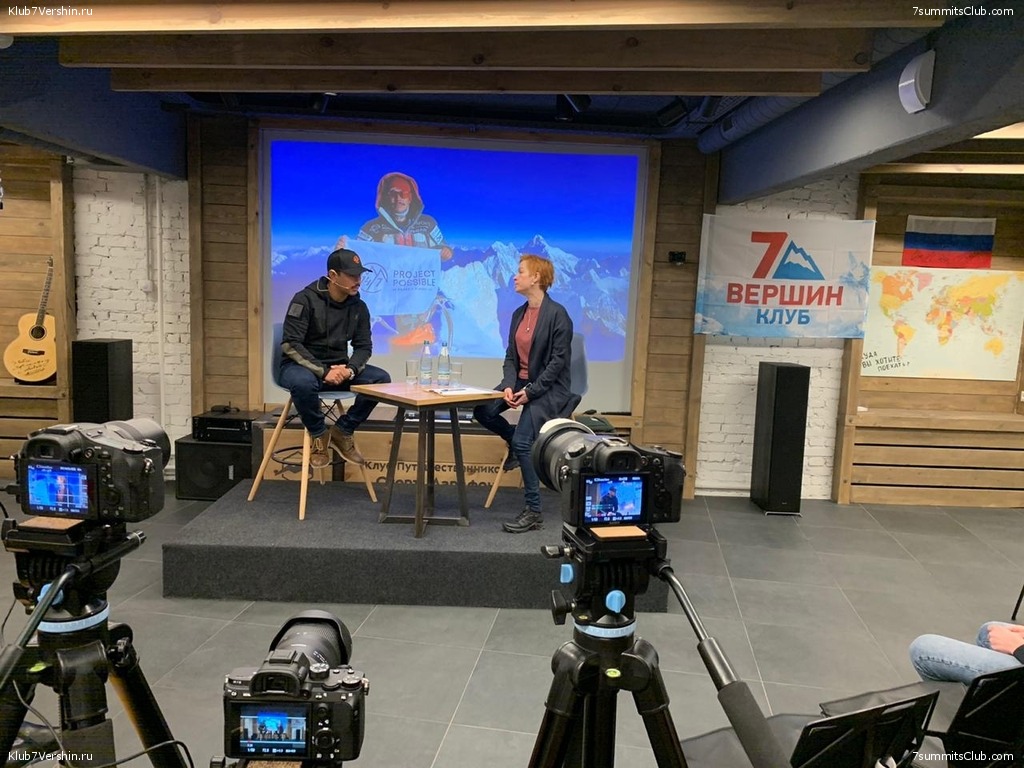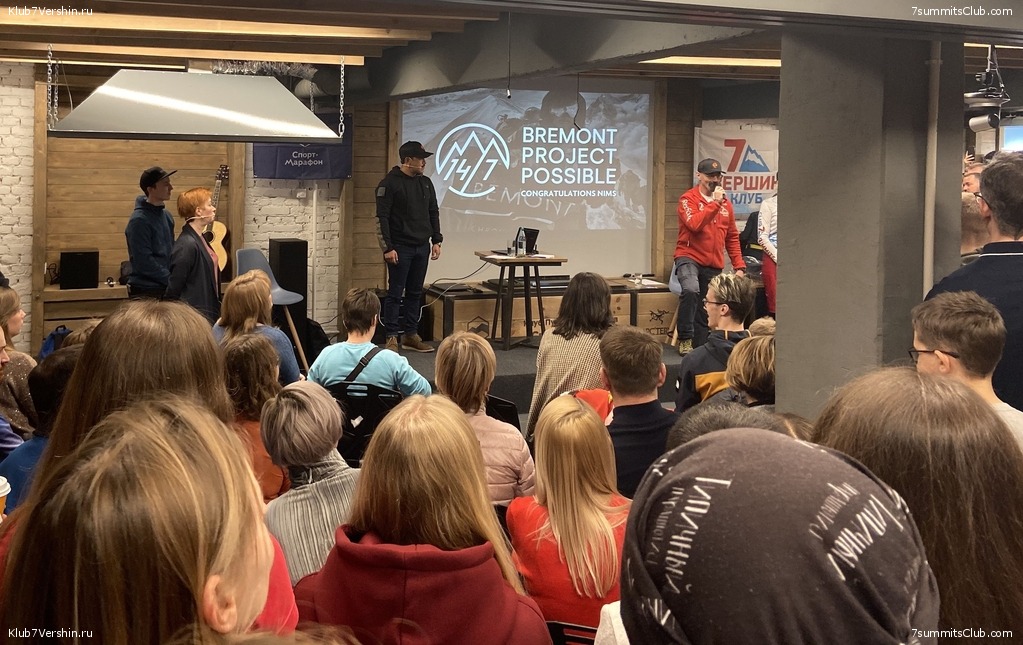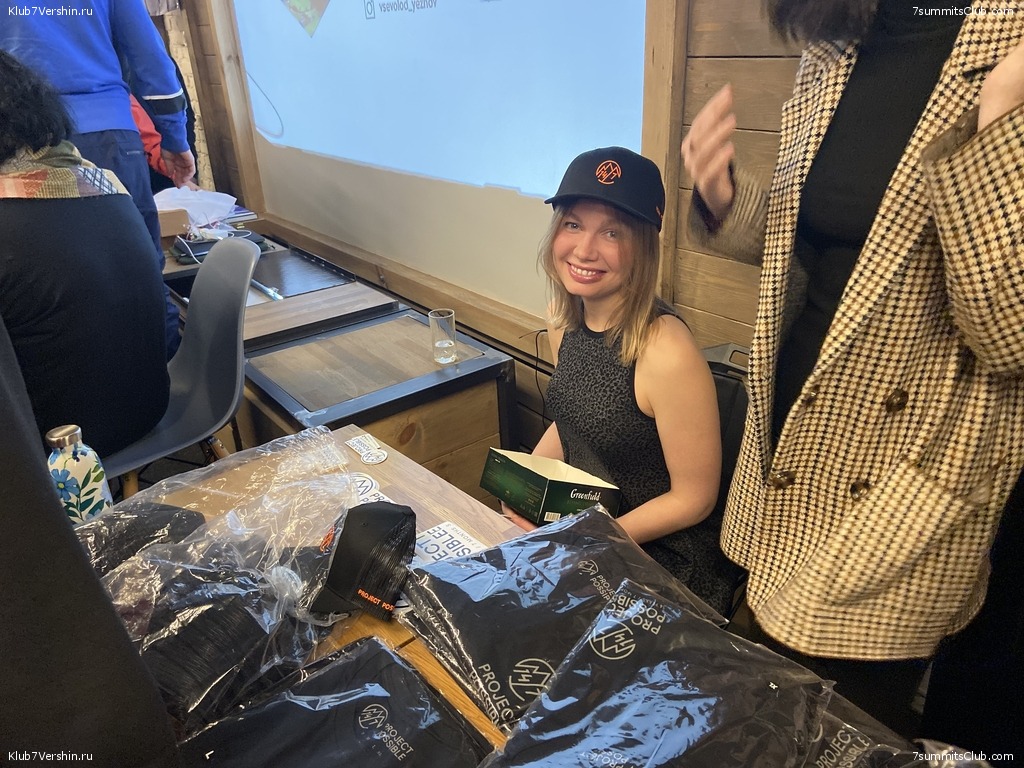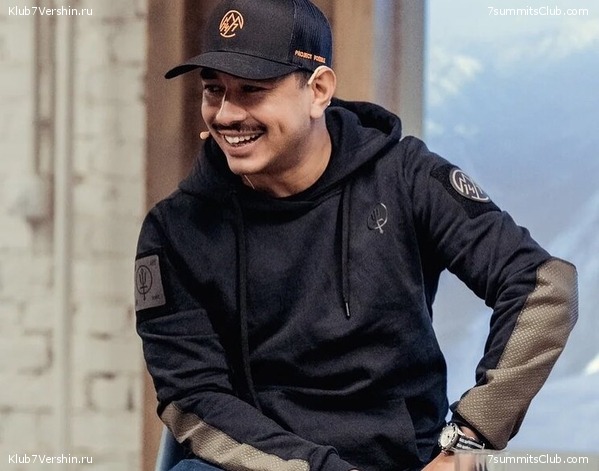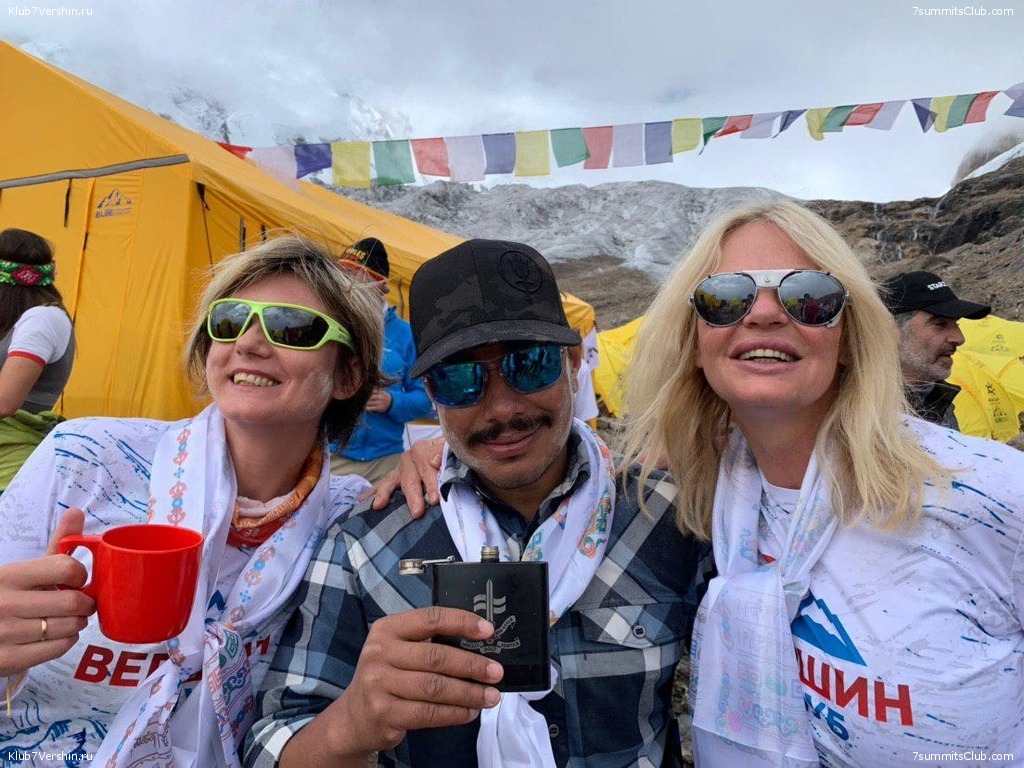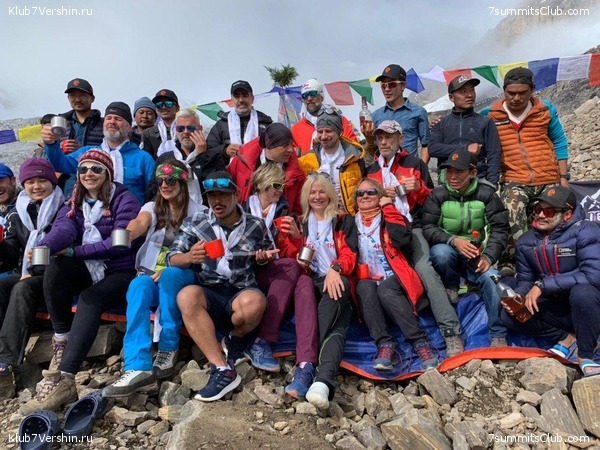Yelkov Alexandr - Page 6
New in Antarctica: website of the Ice marathon and Nims as a guide for the 7 Summits Club program
South Pole.
On December 13, 2020, the start of the famous Ice marathon, a mass start in the area of the Union Glacier Antarctic base, is scheduled. Recently, the organizers presented a new website for the event. During the days of the marathon, you can ...
On December 13, 2020, the start of the famous Ice marathon, a mass start in the area of the Union Glacier Antarctic base, is scheduled. Recently, the organizers presented a new website for the event. During the days of the marathon, you can be on or near Union Glacier as part of the 7 Summits Club program, which will be guided by the famous Nepalese Nirmal Purja. Or you can just fly with our help and take part in a marathon race…
The main star of mountaineering in the Himalayas of 2019, Nirmal Purja (aka Nims) intends to devote himself to working as a guide in the near future. Last year, the Nepalese became close friends with the 7 Summits Club and we agreed with him on mutually beneficial cooperation. We present to You the first joint project:
Nims is a cheerful and sociable guy, with a lot of life experience, physically and mentally surprisingly resistant person. Traveling with him will be something special that you can remember and tell all your life.
Nirmal "Nims" Purja (born 25.07.1983, Myagdi, Nepal) is a Nepalese mountaineer, former Gurkha, soldier of the Special boat service (SBS), an elite special forces unit of the Royal Navy of the United Kingdom. It climbed all fourteen eight-thousandths in a record time of 6 months 6 days in 2019. Awarded the British order of knighthood - The Most Excellent Order of the British Empire.
Everest-2006. The most dramatic expedition. Summit, death and rescue
Everest.
Everest expedition of the 7 Summits Club of 2006 was led by Alexander Abramov. In General, the results of the 2005 expedition were rather positive. And this became a good basis for assembling a large expedition for the next year. A ...
Everest expedition of the 7 Summits Club of 2006 was led by Alexander Abramov. In General, the results of the 2005 expedition were rather positive. And this became a good basis for assembling a large expedition for the next year. A competitive price and a good level of service helped attract new customers from all over the world. Dutch Harry Kikstra (7summits.com), who realized his dream of reaching the summit in 2005, did not lose enthusiasm and joined several projects at once. All this made it possible to assemble a truly gigantic expedition: 28 members, six guides and a doctor who is going to climb. At the same time, foreigners made up the absolute majority - 23 people plus 4 as video crews.
Expedition guides:
- Alexander Abramov, Russia (main guide and leader, Everest Summiter, leader of 5 Himalayan Expeditions)
- Nikolay Cherny, Russia (guide, co-leader, Everest Summiter, 6 other 8-thousenders)
- Igor Svergun, Ukrain (guide, Everest summiter)
- Harry Kikstra, the Netherlands ( guide and co-leader, Everest summiter)
- Mingma Gelu Sherpa, Nepal (sirdar, 5 times Everest Summiter)
- Sergey Kofanov, Russia (assistant guide)
- Ludmila Korobeshko, Russia (assistant guide)
- Andrey Selivanov, Russia (doctor and ABC manager)
- Maxim Onipchenko, Russia (mountain ranger, BC manager)
- Sergey Chistyakov, Russia (internet project manager)
List of expedition members:
Lande Vladimir Russia
Rozhkov Ilya Russia
Ryzhenko Arkadiy Russia
Plyushkin Igor Russia
Pushkarev Vladimir Russia
Lorenzo Gariano UK
Kirk Wheatley UK
David A. Lien USA
Ron Morrow USA
William Hazelton Tyler III USA
Slate Stern USA
Ronald Kevin Muhl South African
Noel Richmond Hanna UK
Petter Kragset Norway
Torbjørn Orkelbog Norway
Henrik Andre Olsen Denmark Johnny Brevik Norway
Thomas Weber (blind climber) Germany
Vince Bousselaire USA
Richard Harris Australian
Christopher Harris (son) Australian
Michael Charles Dillon Australian
Lincoln Ross Hall Australian
John Delaney Ireland
Frode Høgset Norway
Barbara Tyler USA
Patrick Hugh Flynn Ireland
Gariano Giuseppe Italian
20 Sherpas
6 cooks
6 kitchen boys
Total: 73 (30 clients, 43 staff)
Expedition start date : April 10
Expedition end date : June 10
18th of May. Ludmila Korobeshko and Alexander Abramov from ÀÂÑ, 6400ì.
The main event of last days: Vladimir Lande successfully summited Everest - May, 15 at 9.00. He has spent, from 8300 up to the top, about 6 hours, very good time. Vladimir climbed together with Nima Sherpa, then they have successfully gone down. Yesterday (May, 17), Vladimir has left for Katmandu by an evening jeep. Two days before our senior guide Nikolay Cherny and climber Vladimir Pushkarev have left expedition through illness.
Yesterday May, 17, all first group has gathered in ÀÂÑ. Abramov, Kofanov and Êîrobeshko have decided, that they are the cleverest, and came in ÀÂÑ not for 2 days, as all normal people, but for one. As a result, Kofanov is very tired, Ludmila is simply exhausted. Only for Alex Abramov it is good, he feels most better.
Yesterday at supper, we have together celebrated the national holiday of Norway - Day of Independence. After supper Alex Abramov has lead a briefing. He addressed to the group leaving upward, once again told about dangers of Everest. Except for that, all people checked and put on masks, reducers, oxygen cylinders. It was cheerful.
Now in the morning, we go for breakfast. After it the first group –
Ilya Rozhkov, Russia
Arkadiy Ryzhenko, Russia
Igor Plyushkin, Russia
Lorenzo Gariano, UK
Kirk Wheatley, UK
David A. Lien, USA
Slate Stern, USA
Ronald Kevin Muhl, South African
Noel Richmond Hanna, UK
Petter Kragset, Norway
Henrik Andre Olsen, Denmark
Johnny Brevik, Norway
with guides Igor Svergun and Sergey Kofanov leave on the North Cole. And further under the plan of an ascent. Weather forecast is quite favorable now, on the nearest days 5-6.
Today May, 21, at 8 a.m. Tibet time ( 4 a.m. on Moscow ) the first climbers from our expedition have reached the summit of Everest. There were a guide Sergey Kofanov (Russia), sirdar Mingma Gelu Sherpa (it is his 6 ascents), 3 more Sherpas. Slate Stern (USA), Henrik Olsen (Denmark), Arcady Ryzhenko (Russia) and 2 more Sherpas have summited after them a bit later.
At 10.00 Igor Svergun (a guide of expedition from Ukraine) has transferred by a portable radio set, that he is on the summit, together with Noel Hanna (Ireland), Kirk Weatley (England) and Lorenzo Gariano (UK - Italy) and 2 more Sherpas have joined them soon. In total we have 16 summiters today. Now all members and guides go down. The weather is rather good, but the wind is more strong as in the morning.
In ÀÂÑ all did not sleep since seven mornings - we were on communication with climbers. A summit attempt began at midnight. Thus, the first climbers came on the top for 8 hours. Before breakfast all of us by turns looked in a telescope at a summit triangle where rather precisely we saw all ours climbers.
For breakfast Simone Moro has come to us on a visit. He has congratulated our team on success. Only yesterday he has made a traverse from the South through the summit of Everest and has gone down to the North. For now he has decided to live in our camp and gives interview about his feats with pleasure.
Norwegian Vikings Peter Kragset and Johni Brevik, and also David Lien yesterday have gone down in ÀÂÑ from the height of 8000 m. On a portable radio set guides have informed also, that three more members who have left today on attempt - Igor Plushkin, Ilya Rozhkov and Ronni Muhl have reached the height about 8700 m.
Now the second group leaves upward from ÀÂÑ. These are four Australians: Chris - 15-years climber, his father Richard, 2 more operators - Lincoln and Michael, and also Harry Kikstra and Òhomas Weber (blind climber), Alex Abramov and Ludmila Korobeshko. So, taking into account ascents of Vladimir Lande and Nima Sherpa, we have 18 persons have risen the summit of Everest on our expedition now.
From Harry’s blog: Sunday, May 21. 2006
SUMMIT!
we have been watching the team all morning, here is the first unofficial 7summits update. Mingma Gelu & Sergey K summited quite early as planned and waited for the rest of the clients. Apparently Slate Stern summited soon after and was going down quickly after, in good speed. Henrik Olsen also summited in good time and finished his 7 summits!
Ilya was having problems at the 3rd step and sat there for a long time, but our team is bringing him down now.
Noel summited about 25 minutes ago and is now going down and just a few minutes ago, at the end of our maximum time allowed, Lorenzo arrived at the summit, where our guide Igor Svergun was waiting for him, they will be coming down now and will be taking everybody they meet on the way. More Sherpas have summited as well, names to follow later.
Ronnie Muhl is now at the 2nd step, so we will have to take him down as he is going too slow to go for the summit safely, just as Igor Plushkin. At the moment we are not sure if Kirk summited or not, but so far everybody is safe and in good hands and we will make sure that all members and sherpas come down together. Maybe more later, we will be leaving with team B soon.
Alex Abramov report:
May, 21 the first group of climbers, 20 person (9 members, 2 guides and 9 high-altitude porters) makes an attempt to reach the summit of Everest. Climbers have left camp at height of 8300 meters in midnight. All group used artificial oxygen during the ascent. By 10 a.m. 16 persons have reached the top of Everest. The others 4 climbers have reached heights 8600 - 8700 meters, among them was Igor Plyushkin from Krasnodar. At 10:30 all team, all 20 persons started to descent to the camp 3. At 3 p.m. all team was already down in camp of 8300 meters. The weather was good. Sherpas have prepared tea and climbers had a rest for two hours. Then all team has gone down (still using oxygen) for spending night in the camp 2 at 7800 meters, on more safe altitude. So day May, 21 was finished.
May, 22 in the morning after breakfast at 12 a.m., the team was ready to start for descent from camp of 7800 meters downwards to the North Col (7000 meters). Igor Plyushkin has passed 15 meters from his tent and has felt badly. He has addressed to guides for help, complaining on lack of oxygen and difficulty at breath. Thus he moved with use of oxygen equipment. The increase of submission of oxygen from two to four litres in minute has not helped. Injections have not helped also, struggle for life proceeded one and a half hour. Unfortunately, Igor`s condition thus essentially was not improved. At 13:45 guides were forced to verify death. The body was solved to leave at height of 7800 meters. Guides have photographed it, have closed by sleeping bags and have covered by stones. At 7 p.m. all team was down in advanced base camp ABC, on height of 6400 meters.
Igor Plyushkin, 54 year, was a skilled climber, had climbed all 7000meters summits of the former USSR. (Snow leopard)
I also want to tell about events of May, 21-22 which occured not in area of summit and second camp. May, 21 the second group planned an exit for the North Col. There were 4 Australian climbers, and among them father and son, Richard and Christopher Harris. From the first steps from ÀÂÑ the son, Chris now 15 years old, has felt badly. He had a collapse, that is sharp pressure drop, and all group has returned to camp. We have taken the appropriate measures: the guy has spent with a mask about one hour, his pressure was normalized. Later the Australian team made decision to try once again.
In the morning May, 22 after first 300 meters, Chris has felt very badly again. After that we have finally made decision to refuse an ascent. In camp ABC we have again carried out medical actions, Chris was filling better. Tomorrow they will go down in base camp. Also in this day when above guides struggled for Igor`s life, Sergey Chistiakov in camp ABC has felt badly. We also have connected the oxygen equipment. When he has felt better, he has on gone downwards, into middle camp. So May, 22 was for us a fatal day. At once several persons were ill. Now, we hope, that Sergey is already out of danger, as well as Chris. Everest expedition is very heavy business and an organism of many people simply does not maintain long loading. Now only Harry Kikstra, Òhomas Weber and strongest of Australians Lincoln Hall continue an ascent.
18:30 Moscow time. Alexander Abramov by the phone from camp ABC.
21 – 25th of May good weather kept on the Everest, the wind was very weak. May, 25 in midnight a team of Lincoln Hall (Australia), Òhomas Weber (Germany), guide Harry Kikstra (Holland) in support of 5 high-altitude porters has left camp of 8300 m for a summit attempt. The group was well provided with oxygen as about 20 superfluous cylinders were in camp 8300. At 9:00 Lincoln Hall and three Sherpas has reached the top. He went in good rate and has joyfully informed about his success on a portable radio set.
At 9:15 Harry Kikstra has informed, that Òîìàñ Weber, a climber with weakened sight, has completely lost sight. For this reason, traverse on rocks to the top at height of 8800 meters he considered practically impossible. Having conferred, Òhomas, Harry and two Sherpas have begun descent at 9:30 a.m., only 50 meters from the summit on height. At 10:00 Lincoln Hall has reached on descent a snow triangle, at height of 8800 meters. And at this moment Sherpas have transferred, that Lincoln started to move downwards very bad, coordination was lost. At 10:30 Lincoln has lain on snow and could not go down independently any more. Sherpas have begun rescue works. To the aid we have sent two more Sherpas from camp ABC with oxygen. They should bring additional oxygen, drink etc ….
Unexpectedly at 12:20, Harry Kikstra has informed that he is with Òhomas and to two Sherpas at a level of the Second step, height of 8700 meters. And that Òhomas has a collapse, Òîìàñ has told only: « I have died » and have lost consciousness. At 12:40 the death was verified . Harry has sent one of Sherpas upward to the aid of transportation of Lincoln. Then he has gone downwards with the second Sherpas. From 9:30 till 19:20 , almost 9 hours, four øåðïîâ tried to get Lincoln lower. A crest here is very complicated technically and in condition of Lincoln it was possible to lower him for 9 hours on 300-400 meters on a crest. Sherpas could lower him from the Second step on height of 8700 meters. During descent Lincoln two times talked on a portable radio set to friends. Conversations were addle, there was an obvious loss of orientation in time and space. After 5 p.m. Lincoln has ceased to reply. Movements have got chaotic character. Sherpas continued attempts to move Lincoln along a crest, but at 19:20 the death was verified. The probable reason: brain cerebral edema, pulmonary edema . Now 21:30, Sherpas have gone down from a crest in camp 8300ì, they are outside of danger though have got awfully tired. Harry Kikstra is in camp on 7000 m on North Col.
Conclusions: in season of 2006 on Everest the record amount of climbers, under our information - 15 person was lost. Strangely enough, the reason of it became extremely good, windless weather. This unnatural weather for Everest proceeded from May, 10 till May, 25. This weather has allowed a plenty of climbers to reach the summit. In more severe conditions, they, probably, would stop climb at lower heights. The summit became a trap for climbers with the latent problems of health
News about Lincoln Hall.
May, 25 at 19:20 Sherpas have stopped the rescue operation proceeding more of 9 hours at height about 8700 meters. They have verified the fact of death of Lincoln Hall, on the basis of that from 17:00 till 19:20 he did not submit any attributes of life. Five Sherpas, completely exhausted, have gone down in darkness in camp 8300.
In the morning May, 26 at 7 in the morning, Dan Mazur, which was climbing with group of clients, has informed, he is near Lincoln Hall. Lincoln was motionless, but submitted weak attributes of life. Immediately 13 Sherpas, spending night on North Col (7000 meters) were sent for realization of rescue operations on height of 8700 meters. The same task was put to five Sherpas which stay in camp 8300 . Unfortunately, two of them have lost sight yesterday and required help. Thus, approximately by 11 a.m. three Sherpas with tea, oxygen and medicines have reached Lincoln. After plentiful drink and reception of medicines, Lincoln started to talk, though speech of him was untied and he could not move independently . Not waiting arrival of the basic group, three Sherpas have started to move him on a crest. Now they could move him on 50 meters on a difficult rocky site. Now the second group of eight Sherpas with all necessary came for help. If weather will allow, rescue operations will proceed all night. Thank for the help and support to Dan Mazur, Russell Brice and Jamie MacGinnes.
At ten in the evening on local time Lincoln Hall and Sherpas accompanying him have gone down in camp on North Col (7000ì). Yes! Lincoln Hall has passed without assistance the whole snow slope, from 7500 m! In camp on the Saddle doctor Andrey Selivanov met him and led to a dining tent, which is now as a field hospital. As he said, the first problems of Lincoln is an acute psychosis, a disorientation in space, also he shows resistance accompanying and now to the doctor. First of all it will be necessary to calm him. The reason – an acute edema of a brain and hypoxia. The doctor have examined his hands – frostbitten 2-3 degrees. Legs to the moment of communication were not examined yet. On a question on prospects Andrey has told: « We shall overcome ! ». Now Lincoln is in heat, in spacious tent with electric illumination, 10 person are engaged in his service. Descent in ÀÂÑ is planned for tomorrow`s morning, but not early, when there will be a sun and will become warmer.
Under last message, for today (23:00 local time), Lincoln Hall has fallen asleep in warm tent in camp on North Col. Necessary and possible (in this place) medical aid was rendered to him.
News from 7Summits Club Everest expedition under the leadership of Alexander Abramov
May 27 at 12.30 Chinese time rescue team of 10 Sherpa and expedition doctor Andrey Selivanov descended from the North Col. They delivered Lincoln Hall to ABC. Lincoln was able to walk on his own. During the whole previous night Lincoln was sleeping on oxygen on the North Col.
As soon as he arrived in ABC Lincoln was given new portion of medical care. Brain edaema is practically gone now. He regained adequate perception of reality. Lincoln made a telephone call to his wife Barbara. He told her that he has bad frostbites of his fingers. Barbara answered that she would love him all the same even if he would loose all his fingers. In two days Lincoln is planning to go down to BC and then depart for Katmandu and Australia.
Big thanks to Sherpas of 7 Summits Club and expedition doctor Andrey Selivanov, who at risk for their own lives conducted unique rescue operation on Everest. During several last years there was no team able to descend an unmoving body from the altitude of 8800m
KATHMANDU, Nepal, May 29 (UPI) -- Lincoln Hall, the Australian climber who survived a night in the open near the summit of Mount Everest, left base camp Monday in the back of a jeep. He was expected to arrive in Kathmandu, the capital of Nepal, on Tuesday, and could return to Sydney in a few days after further medical treatment, the Daily Telegraph reported.
Hall collapsed last Thursday as he descended from the summit. His teammates decided he was beyond help, but a U.S. climber found him still alive the next day and his team sent a group up from the North Col to bring him down.
"He does realize he has been very, very lucky, surprisingly lucky," Jamie McGuiness, another climber, told The Daily Telegraph from Everest Base Camp. "He was very close to death, but he wasn`t actually dead and he came around."
Hall was suffering from pneumonia and frostbite and could lose some of his extremities to amputation.
Who missed Facundo? Who missed Everest? We have something fresh for You…
Everest.
On March 31, the famous Argentine actor and good mountaineer Facundo Arana celebrated his 48th birthday with his family, in self-isolation. And in early May, two parts of a film about his ascent of Mount Everest in 2016 were posted online. ...
On March 31, the famous Argentine actor and good mountaineer Facundo Arana celebrated his 48th birthday with his family, in self-isolation. And in early May, two parts of a film about his ascent of Mount Everest in 2016 were posted online. For the 7 Summits Club, that year it was our most filmed expedition. On its results the epochal film "THE HIGH-ALTITUDE GENE " was made by the RD Studio. There, the Argentine got a small role. And there are still pleasant memories of friendly communication in the base camp and during random meetings on the route...
Part 1.
Part 2.
Climbers in quarantine: Running up Mount Elbrus, home climbing wall and other photos of the project #àëüïèíèñòûíàêàðàíòèíå
Elbrus.
For marathon-runner Alexei Likharev, being stuck in self-isolation doesn’t mean sitting on his couch all day. In April, he used the fire escape stairs in his nine-story apartment building to run up the equivalent height of Mount Elbrus ...
For marathon-runner Alexei Likharev, being stuck in self-isolation doesn’t mean sitting on his couch all day. In April, he used the fire escape stairs in his nine-story apartment building to run up the equivalent height of Mount Elbrus (5,642 m!), the highest mountain in Europe. To do that, he went up and down, from the first to ninth floor, 280 times which took him a total of 9 hours and 34 minutes, not including lunch breaks.
“The hardest thing for me in isolation is to come to terms with the absence of physical activity and suppress my thirst for adventure - and I’m not going to do that,” he admits in the video documenting his achievement.
Dmitry Popov (member of the Russian national team, Voronezh) on the home climbing wall.
And just photos #àëüïèíèñòûíàêàðàíòèíå
On the 30th anniversary of the historical expedition “Everest Peace Climb”
Everest.
It was a Grand idea — Everest Peace Climb, by mountaineers of three great powers - the United States, the USSR and China. The idea, and the entire project, belonged to famous American climbers Jim Whittaker and Warren Thompson. During ...
It was a Grand idea — Everest Peace Climb, by mountaineers of three great powers - the United States, the USSR and China. The idea, and the entire project, belonged to famous American climbers Jim Whittaker and Warren Thompson. During 1987-1988, the stubborn organizers tirelessly negotiated with Moscow and Beijing and achieved the almost impossible - in such a short time for our countries (in just 2 years!) they managed to get the consent and all the necessary permits and visas of the three parties to conduct a joint expedition. In the States, they were supported by such world-famous people as Senator Edward Kennedy, Ted Turner and many others. The organizing Committee under the leadership of Jim managed to attract more than 60 sponsors and take almost all the expenses of the expedition on themselves, and they amounted to more than one million dollars. (From Mstislav Gorbenko's book)
The film about the joint expedition of three countries (USA, USSR and China) on Everest in 1990 begins in a surprisingly beautiful way. It is called Three Flags over Everest. Author: Laszlo Pal. The text is read by Robert Redford. And, it seems that Paul McCartney specifically wrote the song (although this is not true). What a time it was, what hopes!
The " Everest Peace Climb " was timed to coincide with two events in 1990: the Goodwill Games in Seattle and the 20th anniversary of Earth Day. The highest peak of the world as a sporting object was to draw the world's attention on global environmental problems and to demonstrate to the world that the mutual trust and cooperation between Nations can "take" any height, and not in the mountaineering sense of the word. (From Mstislav Gorbenko's book)
Mstislav Gorbenko us asked to post information about a possible anniversary meeting of the heroes of the historical expedition:
In 1990, in May 7, 8 and 10, a unique ascent on Mount Everest from the North along the North-East ridge was made. 20 members of the Everest Peace Climb international expedition, climbers from three countries-the USA, the USSR and China reached the summit.
I was lucky to represent Ukraine in this expedition. On May 8, I spent more than one hour alone on top of the world. In those ancient times, there were absolutely adequate climbing rules – 1 route – 1 expedition, i.e. only our expedition worked on the route. Each member had the opportunity to work first, participate in the drop-offs and reach the top. We worked, as always, independently without Sherpas, without the use of oxygen (up to 8,300 m) and even cleared the mountain of debris.
Details of this expedition can be found on the Internet in my first book, the Ascent Of Peace on Everest.
Today I remembered this most interesting and important event in mountaineering for me because many climbers of this expedition wanted to gather to celebrate the 30th anniversary at a meeting in Ljubljana, new home of my team-mate Andrey Tselishchev. The world quarantine confused all our plans, but I suggested to my friends Vladimir Shataev, Eric Ilinsky, Sasha Tokarev, Andrey Tselishchev, Viktor Volodin, Laverne Woods, Ed Visturs, and Ian Wade not to worry and to postpone this meeting, as well as the Olympics, to 2021!
Each of us, of course, had much more difficult climbs. But our joint training in the mountains at numerous training camps in different mountain areas of the World and two months under Everest made us great Friends.
Unfortunately, we will not have with us climbers on Everest Grigory Lunyakov, Sergey Arsentiev, Katia Ivanova, Anatoly Moshnikov, who died in the mountains. Dr. Edik Lipen is not with us either…
I received a letter from the leader of our expedition, the first American climber on Everest, Jim Whittaker, as always with humor : "thank You for inviting me to the meeting – this is a good idea, but I am almost a hundred years old (91), and I can only be with you in my thoughts and at a distance."
I hope that in these may days, Chinese climbers will reach the top of Mount Everest on the route of pioneers from the North after 60 years. We wish them good luck! It is possible that our Tibetan climbers on mount Everest in 1990 will participate there, but I have lost contact with them.
See you in 2021!
Video on the topic "Climbers in quarantine". We are in different places – but we are together!
Friends of the 7 Summits Club made a video in support of our challenge “Climbers in Quarantine” - #climbersinquarantine.
Friends of the 7 Summits Club made a video in support of our challenge “Climbers in Quarantine” - #climbersinquarantine.
More photos of our challenge
We are in different places – but we are together! The guides of the 7 Summits Club keep their spirits and fitness in the self isolation mode
The quarantine mode found the guides of the 7 Summits Club in different places. Some of us are away from home, some of us have to spend time in cities. This is a time for training, for understanding many things, for creativity, ...
The quarantine mode found the guides of the 7 Summits Club in different places. Some of us are away from home, some of us have to spend time in cities. This is a time for training, for understanding many things, for creativity, finally.
Our main guides-athletes are ready to demonstrate their high fitness. The best place for this is at the dacha. Get out of Moscow!
Boris Yegorov, as expected, is ready for any space overload!
Artem Rostovtsev relax at home.
Alexander Abramov and Ludmila Korobeshko are in Crimea, where they have the opportunity to train in nature.
Vladimir Kotlyar left for one of the most severe regions of the world – Kolyma just before the quarantine. I decided to stay there for a long time.
Alexander Dorozhukov is preparing to use his new car.
Dmitry Ermakov: "Snow leopard" needs a full meal, and always in the fresh air.
Luba Pershina in Mexico started (and with pleasure!) cook Mexican food. She wants to treat you. And also, reads scientific literature on the culture of Mexico, to know even more and tell you a lot of interesting things when you arrive…
Premiere of the film of Vitaly Lazo on the Internet. "The death zone of Nang Parbat"
The premiere of the film was supposed to take place in Moscow cinemas in April. Today's situation has changed all plans, the screening was held in an online format on April 20 at 13:00 Moscow time.
The expedition to Nanga Parbat took place ...
The premiere of the film was supposed to take place in Moscow cinemas in April. Today's situation has changed all plans, the screening was held in an online format on April 20 at 13:00 Moscow time.
The expedition to Nanga Parbat took place in the summer of 2019 and became the third stage of the project “Freeride in the death zone”. At this stage, the first Italian Snow Leopard Carlalberto Chimenti joined the Russian deuce. The team climbed the Diamir Wall on July 3, 2019. Skiing down from 8080 m. Based on the results of the expedition, the feature film "Death Zone of Nanga Parbat" was shot. For the first time, the team used quadrocopters for filming. The drone was shot above 8000 meters. The film has already become a winner and entered the short lists of several foreign and Russian film festivals. The film is presented at the 23rd Moscow International Film Festival of Mountain and Adventure Films “Vertical”.
Video about the winter climb on Communism Peak. New route, great achievement! There is something to be proud of!
Our friend, the guide of Central Asian programs of the 7 Summits Club, Andrei Erokhin, provided us with this video for publication. We have the right to be proud of the achievement of a new generation of our climbers. Just deciding on a ...
Our friend, the guide of Central Asian programs of the 7 Summits Club, Andrei Erokhin, provided us with this video for publication. We have the right to be proud of the achievement of a new generation of our climbers. Just deciding on a winter climb on Peak Communism is already a lot.
But the team chose a new, unexpected and beautiful line to climb the plateau. And achieved success worthy of previous generations of our climbers. Well-coordinated teamwork, interaction, endurance and composure are the components of success. New heights to you guys!
The peak of Communism (7495 meters) is the highest peak in the territory of the former USSR, located in the northwestern part of the Pamirs. The summit was discovered in 1928, during the Soviet-German scientific expedition. and until 1962 it bore the name "Stalin's Peak." The first ascent was made by Evgeny Abalakov in 1933. In 1962, the peak was renamed on“Peak Communism”. After Tajikistan gained independence in 1999, a new name “Ismail Somoni Peak” appeared in honor of the founder of the first (in the 10th century) Tajik state. In February 1986, the first winter ascent was made to the peak: 24 climbers (17 from the USSR national team and 7 from the Uzbek national team) climbed the summit in conditions of severe frost.
Film about climbing Mount Everest from our friend, a member of the 7 Summits Club Dolores Al Shellah
This year will be a record for virtual ascents to Mount Everest. Alas, the Big Mountain is closed to us. It’s good that there is no quarantine on the Internet. Here is an opportunity to return to the spring of 2019. Return and relive the ...
This year will be a record for virtual ascents to Mount Everest. Alas, the Big Mountain is closed to us. It’s good that there is no quarantine on the Internet. Here is an opportunity to return to the spring of 2019. Return and relive the excitement, tension and delight of the decisive days of the assault on Everest. The amazing girl Dolores Al Shellah was part of another expedition, but to a large extent joined the team of the 7 Summits Club.
In general, we are not strangers to her. Firstly, she is Serbian by mother. Secondly, in 2018, she ascended Mount Elbrus as part of the 7 Summit Club group.
Dolores was always close to the members and guides of our expedition during the expedition on Everest. This can be seen in the frames of a highly professional film prepared by National Geographic Abu Dhabi. Actually the reason for this publication was the release of this film:
And a few more words about Dolores
This is she with dad and mom. Dad is a citizen of Jordan, mom is from Serbia.
Dolores grew up and was brought up in two cultures at once. The main place of residence is Amman, the capital of Jordan. Dolores spent all the summer months with her grandmother in Serbia. While studying for a year, she traveled to the United States. Dolores graduated from Petra University in Jordan with a degree in business administration. From childhood, she was a versatile athlete: athletics, swimming, equestrian sport. Then – rock climbing, mountaineering and traveling. After working a little in business, Dolores decided to become an adventure professional. And while she succeeds. In 2018, she signed a contract with the mighty Sustainable City organizations from Dubai and received the status of Ambassador Brand. That's where the money comes from for expeditions and trips. We hope that everything in the world will return to normal and we will meet with that charming girl more than once. In Antarctica, at the North Pole, near Aconcagua, Carstensz or elsewhere.
Motivating photos from Antarctica from our Mongolian friend Ganga
Vinson.
Take a break from the gray everyday life and see the new photo gallery on our website! The amazing world of Antarctica through the eyes of a Mongolian woman climber. 130 great photos from the expedition of the winter of 2016. We hope that ...
Take a break from the gray everyday life and see the new photo gallery on our website! The amazing world of Antarctica through the eyes of a Mongolian woman climber. 130 great photos from the expedition of the winter of 2016. We hope that looking at it, you will understand one thing: that living a life without visiting the Ice Continent is wrong. And look at our offers, the 7 Summits Club - the leading operator on the Russian market for organizing tours to Antarctica.
The most famous Mongolian woman climber Gangaama Badamgarav, in the company of the 7 Summits Club, is known simply as Ganga, published a cool selection of photos on Facebook.
Mountain climbing in Mongolia copied the structure of the Soviet counterpart. Therefore, the Ganga bears the proud title of Honored Master of Sports of Mongolia, in her early climbing career she went through all stages of training and received the title of master of sports and instructor. Ganga was born in the countryside in a large family. Her father was an educated person and, in addition to his usual rural work, he was also an accountant in a local cooperative. The girl strove for knowledge and went to study at the University of Ulan Bator with a degree in Microbiology. And almost simultaneously at the age of 20 she began to engage in mountaineering. At the beginning of the century, a national program was announced in Mongolia - climbing Mount Everest. There are many good climbers in this country, but the Gangaama was not lost among them. She became the first woman in the country, climbing first Everest, and then all "Seven Summits".
And she parted with microbiology. She received a second higher education - coaching. Now Ganga runs his own company, works as a guide, trainer, instructor. She conducts active public work. And receives well-deserved state awards.
"Seven summits" Gangaama Badamgarav:
Elbrus - 2010.
Everest - 2011.
Kilimanjaro - 2012.
Denali - 2015.
Aconcagua, Carstensz and Vinson - 2016.
And plus K2 in 2018!
The 7 Summit Club wishes Alexander Abramov a happy birthday!
Everest.
The 7 Summits Club wishes Happy Birthday to our President, creator, leader, captain, engine - referred to only as "legendary"! Alexander Abramov is 56 - time to break records! We believe in you!
Continue to steer with your team, ...
The 7 Summits Club wishes Happy Birthday to our President, creator, leader, captain, engine - referred to only as "legendary"! Alexander Abramov is 56 - time to break records! We believe in you!
Continue to steer with your team, continue to do your job with the same creative fuse and energy! Health, long years of climbing, keep and improve your excellent physical shape!
Good luck in financial affairs, happiness and harmony in the family, good grandchildren and so on ...
Birthday present to Sasha Abramov from Luba Pershina
Seven summits in seven months
International Mountain Day. The 7 Summits Club congratulates all mountain lovers!
The 7 Summits Club congratulates all mountain lovers!
The mountains have made our lives richer, we are responsible for what mountains will be for future generations.
‘Mountains matter for Youth’ - The motto of International Mountain ...
The 7 Summits Club congratulates all mountain lovers!
The mountains have made our lives richer, we are responsible for what mountains will be for future generations.
‘Mountains matter for Youth’ - The motto of International Mountain Day in 2019.
International Mountain Day 2019
‘Mountains matter for Youth’ is the theme of this year’s International Mountain Day, which is celebrated on 11 December.
Young people are active agents of change and the future leaders of tomorrow. They are custodians of mountains and of their natural resources, which are being threatened by climate change.
The 2019 International Mountain Day’s theme is a great opportunity for young generations to take the lead and request that mountains and mountain peoples become central in the national and international development agendas, receive more attention, investments and tailored research.
The day will also be an occasion to educate children about the role that mountains play in supporting billions up and downstream – by providing freshwater, clean energy, food and recreation.
International Mountain Day is a chance to highlight that for rural youth, living in the mountains can be hard. Many young people leave in search of a better life and employment. Migration from mountains leads to abandoned agriculture, land degradation and a loss of cultural values and ancient traditions. Education and training, market access, diverse employment opportunities and good public services can ensure a brighter future for young people in the mountains.
In the coming months, a communication tool box for International Mountain Day will be made available on the IMD website in six languages.
While ‘Mountains matter for Youth’ is the suggested theme for 2019, countries, communities and organizations are welcome to celebrate International Mountain Day through themes of their choosing. What can you do?
What can you do?
- Raise awareness of mountains on 11 December by organizing youth forums, hands-on activities, presentations, student debates, photo and art competitions, hikes and events targeted to specific age groups.
- Write to us about the International Mountain Day event you are planning at info-IMD @fao.org so we can publish it on the International Mountain Day website.
- Join the conversation on social media using the #MountainsMatter hashtag. Share your stories about the reality of living in the mountains as a young person, or post a photo of your favourite mountain moment and share it with us and your friends.
- Access our tool kit to help share your story.
Nims, Everest and other topics at the Gala Evening of the Russian Mountaineering Federation. Nims and the 7 Summits Club opened the program
Everest.
Yesterday, December 7, there was the Annual Gala evening of the Russian Mountaineering Federation (FAR), dedicated to summing up the results of 2019. The main event, as usual, is considered the presentation of the prize for the best ...
Yesterday, December 7, there was the Annual Gala evening of the Russian Mountaineering Federation (FAR), dedicated to summing up the results of 2019. The main event, as usual, is considered the presentation of the prize for the best climbing achievement “Golden Ice Ax of Russia”. However, this time the evening began with a speech by our Nepalese guest Nirmal Purja (Nims).
The hero of the Himalayan year, who climbed all 14 eight-thousanders of the world in an incredibly short period of 6 months and 6 days, made a brief presentation to an impressive audience. It must be said that this year the evening of the federation gathered a record number of spectators. And they listened with great attention and frank delight to Nims.
Then there was the traditional procedure for awarding by Honorary Badges "Climber of Everest", climbers who first time climbed the highest peak in the world this year. It was preceded by Maxim Shakirov with his presentation. In the past year, he carried out his own amazing project and climbed Mount Everest with video equipment for shooting 360. However, the project is not finished, we will wait for an internet site where you can admire all this.
And then Alexander Abramov and our Everest team were called onto the stage. See how it was:
After that, it was possible to move on to the main part of the evening - honoring the best climbers and the best climbing achievements of the year. But this is a different story.
Our story continued at the restaurant table…
Nims performance in Moscow! 14 eight-thousanders in 6 months and 6 days! We are proud to be the first to listen to his presentation
Manaslu.
The first public performance of the Nepalese climber Nirmal Purji (easier, Nims) after the completion of his epic project Project Possible (14 eight-thousanders in 6 months and 6 days) took place in Moscow. The hero of this season came to ...
The first public performance of the Nepalese climber Nirmal Purji (easier, Nims) after the completion of his epic project Project Possible (14 eight-thousanders in 6 months and 6 days) took place in Moscow. The hero of this season came to Russia at the invitation of the 7 Summits Club. About 250 people came to listen to Nims's performance in the lecture hall of the Sport Marathon Travelers Club. The performance of the Nepalese was not long and detailed, he has no right to show part of his materials, because of obligations to sponsors. However, our audience remained completely satisfied. In particular, the fact that Nims devoted a lot of time to joint photographs and signing autographs. He withstood the whole rather big queue and this procedure took about an hour.
The 7 Summits Club in the person of its President Alexander Abramov handed Nims "Golden Ice ax", so we evaluate his achievement ...
What was Nims talking about?
Nothing is impossible! The main thing in the project was precisely this idea! Show that it is possible. Nims sacrificed his pension, laid his own house. And normal sponsorship appeared only after the completion of the first, most difficult part of the project.
But at the same time, he wanted to show that Nepalese can be considered as leaders in high altitude mountaineering. They consider themselves underrated.
Nims paid special attention to the fact that during the project, his team held four rescue actions. Critically, this could affect success. Especially at the very beginning, when the schedule was broken due to the rescue action at Annapurna.
The most difficult was, of course, Kanchenjunga. It was only the fourth day after the descent from Dhaulagiri. Fatigue was incredible. However, when on the descent, Nims's group found three climbers who were unable to move independently, they were assisted. And of the 40 climbers who were in the nearest camp, no one took part in the action.
Nims also climbed with supplemental oxygen because there can be different situations on the ascent and often other climbers have to be helped. What would be impossible without additional oxygen.
Before K2 he was worried more than usual. After all, no one was able to get to the top before them. Even very strong teams. Under the mountain there were about a hundred climbers. When they arrived at the base camp, everyone turned to Nims with a question about their plans. He answered - today we drink (alcohol) and no plans. And in the morning his team took the storm of the most formidable mountain.
By the way, during the 16-year service in the elite unit of the English army (the Gurkhas are considered by many to be “the best warriors in the world”) Nims did not drink alcohol at all. But now he believes that it can even be useful in the mountains.
On Pakistan's eight-thousanders, the Nims team had difficulties associated with the work of local porters. Nepalis simply did not like the pace of their movement. Therefore, they carried goods under Broad Peak and Gasherbrum independently.
Nims plans to issue book, ti finish a film, work in his company Elite Himalayan Adventures, make a new route to Cho Oyu, perhaps for new records ...
And! Collaborate with the 7 Summits Club and work with our groups. And not only in Nepal!
From an interview with Forbes magazine:
I am not really afraid of anything. But there is an old saying: If someone says, “I’m not afraid of dying,” they must either be a Ghurka or they must be lying. I am a Ghurka (laughs)!
Reinhold Messner, the man of the era who first climbed the eight-thousanders: “Nims, I can see in your eyes - it comes from your soul, from your heart - I think you can do this project.”
Now we made sure that Messner was right. Nims is a very honest, decent, pure in his goals, strong person in every way, and at the same time he is adequately thinking. We are friends now!
Nims in Moscow! In December, at the invitation of the 7 Summits Club, the author of the biggest sensation in the world of mountaineering in recent years, Nepalese Nirmal Purja, will visit Russia
Everest.
Nepalese climber, the new world record holder in the speed of ascents to all 14 eight-thousandths of the planet Nirmal Purja (Nims) accepted the invitation of the 7 Summits Club to come to Russia!
So - Miracles do come true!
During ...
Nepalese climber, the new world record holder in the speed of ascents to all 14 eight-thousandths of the planet Nirmal Purja (Nims) accepted the invitation of the 7 Summits Club to come to Russia!
So - Miracles do come true!
During the autumn expedition on Manaslu (8156m), the members of the 7 Summits Club group headed by Ludmila Korobeshko met Nims, who was completing his unique program of climbing the eight-thousandth peaks. We have established good friendly relations and invited the Nepalese to visit Russia at the end of his program. Soon climbing to the top of Shisha Pangma Nims issued a new phenomenal record, passing all 14 eight-thousandths less than 7 months. Suffice it to say that the previous achievement he beat by more than seven years!
And recently, on behalf of the 7 Summits Club, we sent him an official invitation to come to Russia. Nims agreed, and with the support of the Russian Embassy in Nepal, he got a visa.
December 7th the 7 Summits Club participates in the organization in Moscow a gala evening of the Russian mountaineering Federation, dedicated to the summing up of the year. During this event, the Golden ice Axe of Russia ceremony will be held – an award for the best mountaineering achievement of the year. And there will also be a presentation of the "Everest Climber" honours to climbers who have reached the world's highest peak for the first time this year.
It is planned that Nims will speak to Russian climbers with a story about his unique record project and his future plans. The speech in Moscow will be his first public appearance outside Nepal! Do not miss this historic event!
We will also organize two more performances of Nims at our friends:
December 7th in Moscow in the lecture Hall of the Club of Travelers of the Sport Marathon;
December 8th in St. Petersburg in the RedFox trade center.
Maurice Herzog obituary by Ed Douglas
Climber who became a French national hero after making the first ascent of Annapurna. The Guardian, Friday 14 December 2012 In late 1950, Maurice Herzog lay in the American hospital at Neuilly-sur-Seine, on the outskirts ofParis, dictating ...
Climber who became a French national hero after making the first ascent of Annapurna.
The Guardian, Friday 14 December 2012
In late 1950, Maurice Herzog lay in the American hospital at Neuilly-sur-Seine, on the outskirts ofParis, dictating what would become the bestselling mountaineering book of all time,Annapurna, published the following year. The effort was emotionally exacting, as he revisited every twist and agonising turn of one of the most important Himalayan expeditions in the sport's history – the first ascent of Annapurna, in central Nepal.
Annapurnawas the first mountain over 8,000m to be climbed. Others were higher – such as Everest, the site of British assaults in the 1920s and 30s – but no summits had been reached. Furthermore, the geography of theAnnapurnaregion was little known. Herzog's expedition only settled on it as an objective after first exploring the approaches to a neighbouring 8,000m giant, Dhaulagiri.
The personal cost of this triumph to Herzog, who has died aged 93, was horrific. In reaching the summit in the summer of 1950 with Louis Lachenal, Herzog's hands and feet had been frozen, and doctors had amputated all his fingers and toes. He spent months in hospital recovering from his injuries, plunged in a deep depression. Writing his book was not only cathartic but also sealed his reputation as a dynamic and courageous leader, and helped restore self-respect to postwarFrance.
When Paris Match put a picture of Herzog standing on the summit with the tricolour flying from his ice axe, it broke all previous sales records for the magazine. In January 1951, Marcel Ichac's film of the expedition opened in Paris, with the French president Vincent Auriol in the audience. A month later, another photograph of Herzog – this time gesturing with his ruined hands as he spoke to the film's audience – ran on the cover of Paris Match. "Our number one national hero," was what the magazine called Herzog – while failing to mention Lachenal at all. "Annapurna, to which we had gone empty-handed," Herzog wrote in his book, "was a treasure on which we should live for the rest of our days."
In 1958, Herzog became minister for youth and sport. After France's poor showing in the Rome Olympics in 1960, he was charged by Charles de Gaulle with re-invigorating French sport and inspiring a new generation, something he did to great effect. He was elected mayor of Chamonix in 1968, and headed several enterprises, including the company running the tunnel underMont Blanc. In a 1998 memoir, he recalled suggesting to John F Kennedy the idea of the Peace Corps and meeting the biggest names of his day, including Brigitte Bardot and Juan Perón.
In 1996, Yves Ballu published his revelatory biography of Gaston Rébuffat, one of the Annapurna climbing team, and in the same year Michel Guérin published the diaries of Lachenal, previously expurgated in a 1956 publication by Herzog's brother Gérard after Lachenal's early death, but now restored. These fresh perspectives told a more complex tale of a great enterprise whose image was controlled and exploited for political and personal interests. They cast the leader in an altogether less flattering light. Herzog protested indifference, but in private was bitterly upset.
He was born in Lyon, the eldest of eight children. His father, Robert, an alpinist himself, had served in the French Foreign Legion during the first world war. The family owned a chalet at the foot of the Bossons glacier that flows from Mont Blanc, which sparked Herzog's passion for the mountains.
He passed his baccalaureate in Paris and did a postgraduate course in business studies. Towards the end of the second world war, he fought with French partisans in the Alps, first the Armée Secrète and then the left wing Francs-Tireurs et Partisans. They made him a captain, and Herzog overlooked their affiliations. He received the Croix de Guerre and would cite the example of the resistance in celebrating the "victory" onAnnapurna.
In 1945, he went to work for the tyre manufacturer Kléber-Colombes and continued with his passion for mountaineering asFranceemerged from the horror of occupation.
Later that decade a generation of French alpinists came to the fore, including the guides Rébuffat, Lachenal and Lionel Terray. These three formed the nucleus of the team forAnnapurna, put together by the autocratic Paris-based president of the French Alpine Club, Lucien Devies. They were, however, professionals, and to maintain the amateur ideals of mountaineering, Devies appointed Herzog leader, and added Jean Couzy, an aeronautical engineer, and Marcel Schatz, a physicist. The doctor was Jacques Oudot and Ichac, already a celebrated cinematographer, would shoot the film.
Herzog's climbing record was respectable but not spectacular, and making him leader was a risk. Devies clearly had doubts about whether the guides in particular would toe the line for the greater glory of France. Two days before departing, he made them all swear an oath of allegiance to their leader.
Herzog and his team performed one of the great feats of exploratory mountaineering, trekking up the Kali Gandaki valley to examineDhaulagirifrom the east and north. The mountain was judged, in Terray's phrase, "fiendishly difficult" and so the expedition turned its attention to Annapurna, so far unseen. Just getting a view would prove surprisingly elusive.
By mid-May, the team still hadn't made progress so Herzog called a council of war at their base camp in the village of Tukucha, and with time running out before the monsoon, committed his forces to the Miristi Khola, hoping to get lucky and find a practicable route to the top. Working at extraordinary speed, and after coming to a dead end on the peak's north-west spur, the team rapidly pushed a route and a series of camps up the north face. Terray and Herzog had proved the strongest and best acclimatised, but when the supply chain stalled, Terray gave up his chance for the summit to push supplies to a high camp. Lachenal took his place at camp IV.
Wearing leather boots that offered insufficient insulation, Lachenal was anxious about his feet, not least because losing toes could threaten his livelihood. What would Herzog do, he asked, if he turned around? "My whole being revolted against the idea," he wrote in Annapurna. "I should go on by myself," he told Lachenal. "Then I'll follow you," Lachenal replied.
They reached the summit at 2 pm on 3 June, and while some historians question the validity of the summit photograph, they were close enough. Herzog was in a blithe mood – his spiritual musings were a key part of his book Annapurna's appeal – perhaps boosted by the "pep pills" Oudot had prescribed to keep them going. It was in that frame of mind that soon after they began descending he removed his gloves to open his rucksack and watched "quite stunned" as the gloves slid away down the slope. The mistake would cost him his fingers.
The descent of Annapurna was a protracted and freezing horror. Terray and Rébuffat climbed up to campIV to support them. Terray discovering a frantic Lachenal lying in the snow, desperate to get down to a lower camp so Oudot could do something to save his frozen feet. They spent the following night in a crevasse, confused and lost in a storm. Terray and Rébuffat, hunting for a route in the white-out, suffered agonising snow-blindness.
It would take six weeks for Herzog to make it home, suffering agonies in his hands, by which time his blackened feet were riddled with maggots. His serious climbing was behind him. His book, which has sold more than 11m copies, did not make him rich. The royalties went to French mountaineering, which had funded the expedition.
Herzog married Marie-Pierre de Cossé-Brissac in 1964. They had two children, Laurent and Felicité, and divorced in 1976. He had two more children, Sébastien and Mathias, with his second wife, Elisabeth Gamper, whom he married in 1976.
• Maurice Herzog, mountaineer, born 15 January 1919; died 14 December 2012
